Annual Research and Development Review 2020/21
Published 10 November 2021
1. Annual Research and Development Review 2020/21
This report presents:
- research and development (R&D) managed by Sellafield Ltd value streams driven by the needs of the business
- Longer term R&D focused on opportunities for innovative technologies, tools and techniques to reduce costs, improve safety and reduce timescales
- Collaborative R&D with a wide range of supply chain companies, organisations and universities
- Some of the specialist staff from the research community working in and with Sellafield Ltd’s technical teams
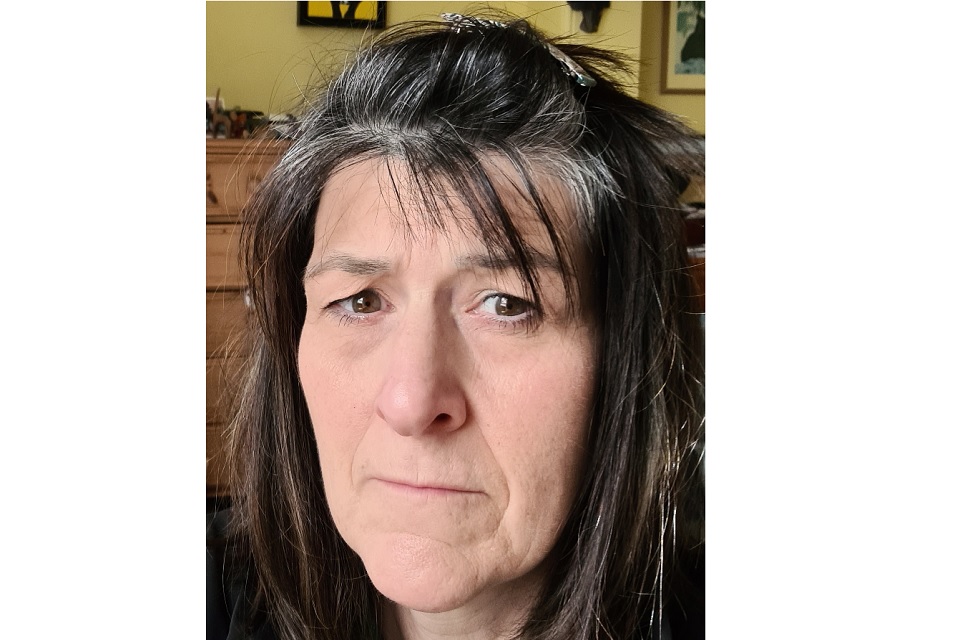
Katherine Eilbeck, head of research and development, Sellafield Ltd
I am justifiably proud of our programme of world class R&D which continues to grow and deliver results.
This report is being published in the shadow of the preparations for the next 26th COP summit and it is timely to reflect on the impact that this work has on helping demonstrate that nuclear energy is sustainable through accelerating, de-risking and reducing the cost of Sellafield Ltd’s programme of decommissioning and waste management activities.
2. Foreword
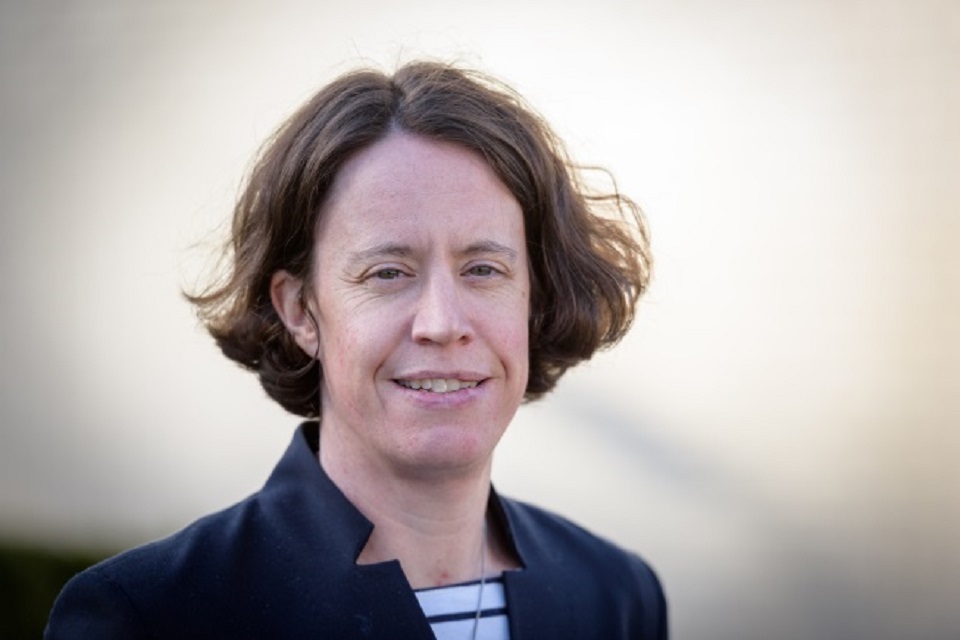
Rebecca Weston, Chief Operating Officer, Sellafield Ltd
Each year we publish this document - our review of work being done by the research and development teams at Sellafield Ltd. It might sound obvious but science is the key to us successfully creating a clean and safe environment for future generations.
The Sellafield site is filled with unique challenges. It is our scientists who, working closely with colleagues in the wider business, our supply chain partners and academia, are creating the solutions to those challenges.
Our remit is wide and fascinating and this report captures just a taste of what we do.
As we begin to empty our ponds and silos and focus on delivering the infrastructure we’ll need in the decades to come to safely deal with and store that waste, we move into an exciting new era for Sellafield Ltd, which will have R&D at its forefront.
This report gives a sample of the work we do and introduces you to the people who do it.
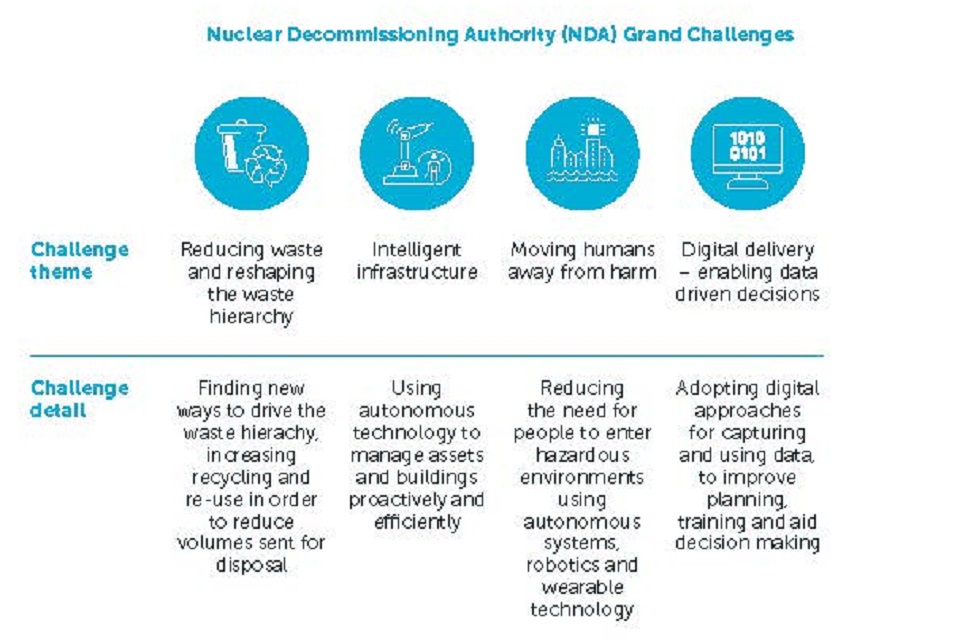
Nuclear Decommissioning Authority (NDA) Grand Challenges
To find out more contact: technical.innovation@sellafieldsites.com
For more information about the Nuclear Decommissioning Authority (NDA) Grand Challenges visit: NDA Grand Challenges.
3. Introduction
Welcome to this year’s annual research and development review featuring a cross section of research and development (R&D) activities.
It has been an extraordinary year as we have learned to work with the pandemic and ensuing lockdowns and we have included a great article on how we supported the response to this challenge in this report.
During lockdown we got used to new ways of working, which resulted in some of us reflecting on our current R&D programmes and reaching out for new ideas.
A highlight for me has been speaking to an artificial intelligence (Al) company in Silicon Valley called RealityAI about a collaborative project initiated by the Lloyds Register Foundation safety accelerator to use contact microphones on ducts to listen and identify defects using AI.
I’m excited by this work and look forward to the results.
During the year Our Manifesto was launched. It describes the company we want to be – a Sellafield of which we can all be proud. It explains why we’re here, and the importance of what we do. Particularly it describes 9 behaviours we all expect to see from everyone working on our mission.

I hope that when you read this document and interact, work for us or with us, that these behaviours are demonstrated. We value working with the supply chain and endeavour to work as one team.
R&D is about making a difference to help us create a clean and safe environment for future generations. This approach means that we work with a wide range of supply chain companies, organisations and universities.
There are more than 50 involved in the delivery of the projects presented in this report. The National Nuclear Laboratory (NNL) is a key partner, facilitating our link with academia as well as delivering impactful research.
The report presents examples of key R&D managed centrally and by the 4 Sellafield value streams with their research areas captured at the beginning of each section.
Throughout the report, we have featured those involved in R&D and the real passion they have for what they do.
I believe the articles in here demonstrate the behaviours articulated in Our Manifesto; I hope you can see all the behaviours particularly the level of trust and respect we have that has enabled us to continue to deliver during the pandemic.
Please contact us if you see an opportunity for collaboration and/or coordination of research, development, or technology transfer in our challenge areas.
Warm regards
Andrew Cooney Technical Manager, Sellafield Enterprise R&D
4. Enterprise Technical
Our enterprise technical team has a wide-ranging remit. Its main responsibility is to oversee and manage the R&D programmes that address the medium to long-term needs of the business.
Within the R&D programmes, the key science and technology themes, which identify opportunities for the development of innovative technologies, tools and techniques, leading to lower costs, improved safety and reduced timescales, are managed by Integrated Research Teams (IRTs).
Our enterprise technical team is also responsible for representing Sellafield Ltd on numerous university engagement programmes and for ensuring their co-ordination across the business.
In addition, it manages the Game Changers programme and the horizon scanning capability which is featured later in this chapter.
The R&D programme is focused on:
- science, including sub-themes on materials, process chemistry, particulates, data and environment
- waste treatment, conditioning and packages
- Condition Monitoring and Inspection (CM&I)
- in-situ measurement and analysis
- Post Operational Clean Out (POCO)
- protecting people
- Robotics and Artificial Intelligence (RAI)
- future asset management and digital technologies
5. Integrated Research Teams
The role of the enterprise technical function is to ensure transformational solutions are delivered into the various value streams, within a range of R&D topics.
This process is supported by a number of Integrated Research Teams (IRTs) which work in collaboration with the end-user to identify appropriate technologies to address the challenges of decommissioning.
The role of the IRT is to:
- understand challenges and co-ordinate R&D efforts
- deliver R&D which provides value across the enterprise
- nurture a space for more speculative longer-term, high value R&D
- help the value streams engage with the wider external R&D community
- identify technology within the supply chain that can be of use to the value streams, helping to demonstrate its tangible value
The IRTs focus on the science and technology themes, which can be found further down this report in the IRT diagram. These themes are the key areas where R&D needs to be undertaken, in the medium to longer term, to support the fundamental delivery of Sellafield Ltd’s mission and to manage any potential future risks.
These themes are described in more detail in our ‘Future research and development requirements 2021’ report.
The longer-term R&D programmes, managed by the IRTs, complement the shorter-term programmes, which will be delivered by the value streams, as illustrated below:
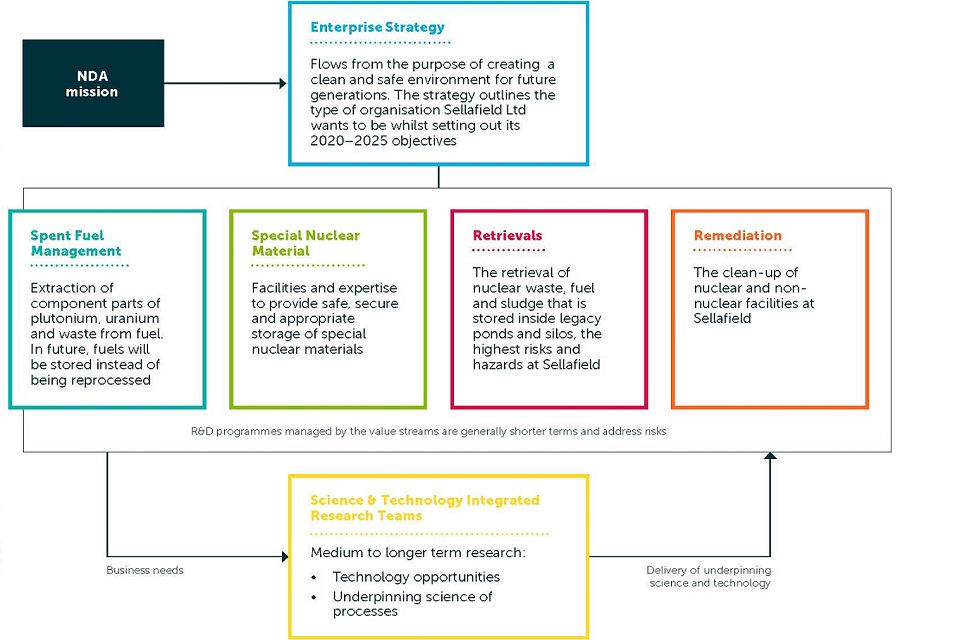

6. Enabling innovation
Given the nature of our business, it is prudent to explore the best technologies that are available to address its particular challenges, demonstrating risks are as low as reasonably practicable (ALARP) and funding is being used appropriately.
This is achieved by enabling innovation which determines the challenges that are being faced, identifies the innovation solutions available and ultimately, actions the technology to deliver tangible impact within projects, while linking internal innovation needs with external innovators.
Instrumental in setting challenges are the IRTs, who listen to the business to gather and review priorities from value streams, linking to horizon scanning activities and identifying subject matter experts to deliver within medium-term timescales.
The Game Changers programme is a fundamental part of this enabling innovation process, as it works seamlessly with the KTN Innovation Exchange programme to share technology from other sectors.
In addition, innovation is encouraged through competitions launched by Innovate UK, which is the funding programme for UK Research & Innovation (UKRI).
This has previously included ‘Protecting the Nuclear Decommissioning Operator’, ‘Integrated Innovation for Nuclear Decommissioning’ and ‘Sort and Segregate Nuclear Waste’.
In order to gauge the relevance of innovation beyond the proof of concept stage, Technology Readiness Levels (TRLs), are applied to measure the various stages of maturity, from one to nine, from basic research, to feasibility study, to fully tested operational systems.

Technology Readiness Levels (TRLs)
The Game Changers programme tends to nurture projects rated between TRL 2 to TRL 6, before bespoke approaches are implemented to advance the technology to TRL 8 or TRL 9, in readiness for deployment on projects.
Bridging the gap between TRL 6 and TRL 8/9 is a well-established barrier to the adoption of new technology and is known in innovation circles as the ‘valley of death’.
To overcome this barrier, we have developed facilities to enable at scale demonstration of technology both inactively, at the new RAICo One robotics facility, the Industrial Hub at Leconfield, Cleator Moor and the training and equipment development rig at the National Nuclear Laboratory, Workington and actively, via the Remediation Active Demonstration programme.
These facilities will go some way towards realising the steady stream of innovation needed to improve the way programmes are delivered and challenges are resolved.
7. Why science?
Science is about acquiring knowledge and testing hypotheses. We use this critical knowledge to inform and underpin our business decisions.
In many cases, these scientific endeavours lead to innovative ideas and the inception of new technologies. For generations, our scientific community has developed world-leading processes from nuclear reactors to nuclear fuel recycling.
In the coming decades, the role of our scientists will be to support the safe decommissioning and long-term storage of many types of nuclear inventory which has been generated during the past 6 decades.
The Sellafield scientist will provide the evidence to cement confidence in the decisions that are made that demonstrate that the nuclear fuel cycle is complete, thereby allowing future generations to benefit from new nuclear power generation.
Most of our scientific work is commissioned through UK academic institutions where we engage with around 40 universities. It commissions research fellows, postdoctoral research associates and PhD researchers to undertake a broad range of activities.
Not only do its academic interests produce high quality research but they also serve to develop advocates for its business, across many scientific disciplines, which enable support, challenge and peer review for its work, methods and approaches.
Perhaps the most important benefit of this work is the development of highly trained people who will become the scientists of the future, within Sellafield Ltd and across its supply chain.

Optical image of Special Nuclear Material can

Phosphor thermometry of special nuclear material can
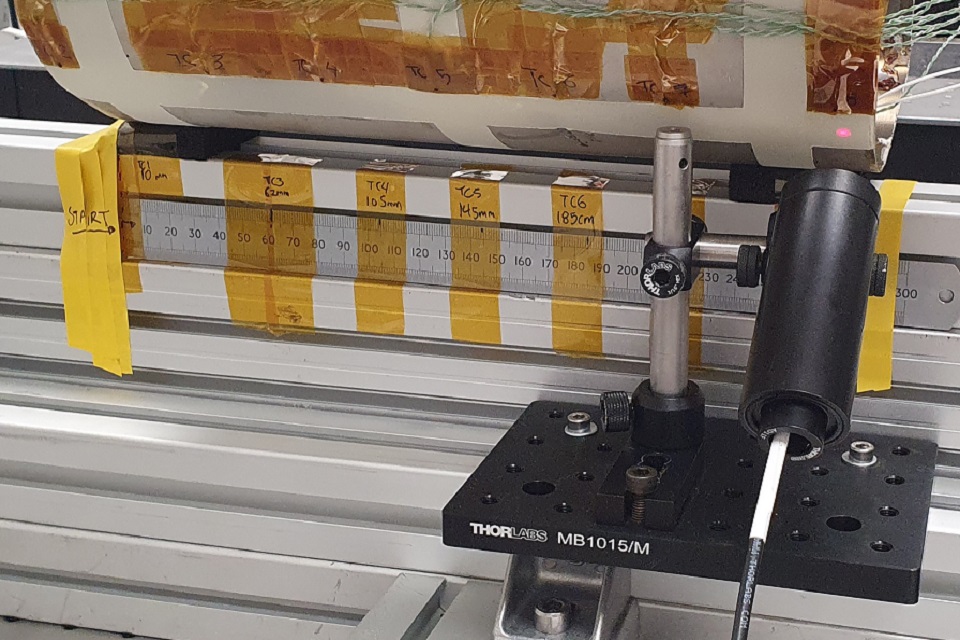
Phosphor thermometry of special nuclear material can
7.1 Our scientists
Spotlight: Materials science – Uranium and reactive metals
Over the next few decades, Sellafield Ltd will recover many tonnes of Magnox swarf (the waste cladding material that was removed from used Magnox nuclear fuel) from the ageing Magnox Swarf Storage Silo (MSSS) and will place it into highly engineered storage containers for interim store on the Sellafield site.
There has to be a degree of confidence that the physical processes and evolutionary chemistry of these and indeed many other types of waste forms are understood, so that their behaviour within the storage system can be predicted for decades to come.
As such, there is an assurance that problems are not being stored up for future generations.
Anna Adamska, Uranium and reactive metals science lead at Sellafield Ltd

Uranium and reactive metals science lead at Sellafield Ltd and visiting research fellow at the University of Bristol. Anna is our in-house specialist in uranium surface science and corrosion, filling in the gaps to help colleagues better predict how uranium and other reactive metals might behave and ensure they have access to cutting edge research in the field to support decision making.
After finishing a sandwich PhD at the Charles University in Prague, Czech Republic and the AGH University of Science and Technology in Krakow, Poland, Anna joined the Interface Analysis Centre at the University of Bristol as a Marie Curie Fellow investigating uranium alloy corrosion.
It was during this postdoctoral research that she started working with our Centres of Expertise and it led to her being handpicked by John Jowsey, the former technical lead of uranium and reactive metals, to take over his role.
Anna leads the Uranium Containing Waste Technical Group, co-ordinating experts from Sellafield Ltd, NNL and academia to undertake specialist reviews of reports, design and modelling parameters.
This oversight provides extra confidence that Sellafield is accessing the best scientific knowledge available to tackle its unique challenges.
Collaborating closely with university researchers helps Anna to better understand the gaps in current research and where further investigation is still needed to get the full picture of uranium corrosion behaviour.
Working with PhD students helps me to still learn new things and challenge my way of thinking. I don’t want someone to agree with me all the time – that’s not the point.
7.2 Our scientists
Our team of scientists are at the heart of the organisation.
They are its controlling mind; leading the scientific investigations that underpin our mission.
They understand and interpret business needs and uncertainties, build external capabilities to support its strategic objectives, commission scientific work, interpret outcomes and advise operational colleagues and decisionmakers, based on credible current findings and evidence.
The team works closely with academic institutions to facilitate and maximise the development of capability to meet our requirements.
The science leads’ role is a blend of direct-funded research, supporting grant applications, taking part in industrial steering groups and taking an active role in universities as visiting staff.
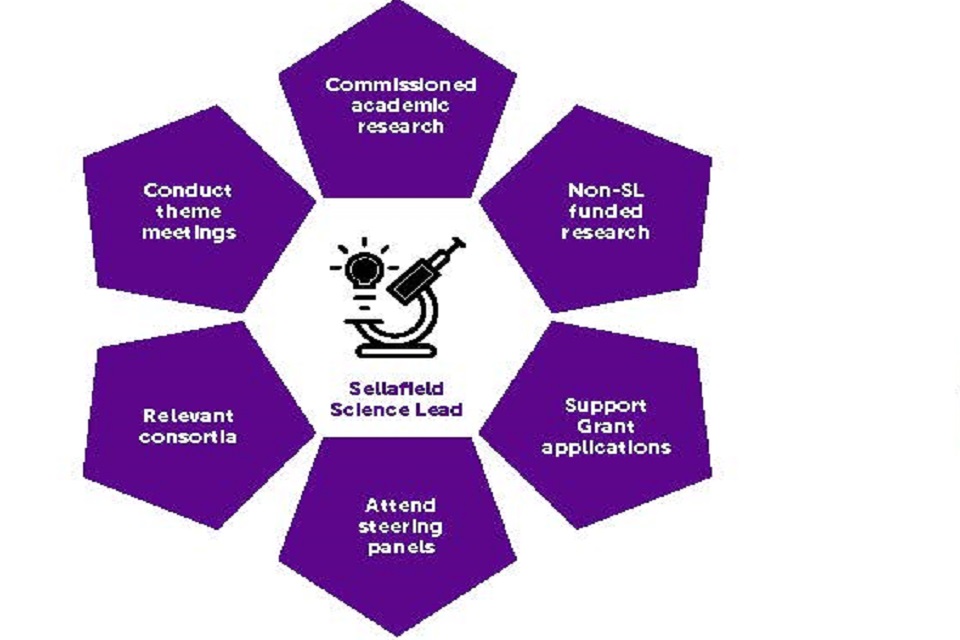
Steve Hepworth - Senior scientist, Sellafield Ltd

Steve took on the challenge of being senior scientist in 2020, following previous roles in both R&D and technical standards and assurance.
As senior scientist, he is responsible for identifying and implementing mechanisms to support our science leads, and ensuring we maintain a supply of highly trained scientists into the future.
Steve’s role includes brokering links between Sellafield Ltd and external research organisations, including UK universities, overseas institutions and funding bodies, to assist with scientific knowledge development and peer review.
This includes having access to nuclear related Centres-for-Doctoral Training (CDTs) such as GREEN (Growing Skills for Reliable Economic Energy from Nuclear) CDT, and for developing and maintaining capability across academia.
In addition, Steve is involved with various consortia, such as TRANSCEND (Transformative Science and Engineering for Nuclear Decommissioning), and the NNL’s CINDe (Centre for Innovative Nuclear Decommissioning) and is also responsible for supporting academic research grants and associated steering groups.
Steve is keen to continue strengthening links with the academic community and plans to involve broader expertise across Sellafield Ltd from academic interactions.
Scientific research is essential to Sellafield Ltd. By challenging norms, acquiring information and in developing understanding, we can inform the crucial decision-making of the future. Scientific research builds confidence in the choices we make as a business.
It leads to innovative ways to deliver our goals and, throughout the process, trains and equips new talent with the skills and knowledge the nuclear industry requires.
7.3 Smart sensors
Until now, the only way to monitor the temperature and pressure within the cans containing active material was to approach in-situ using an endoscope or ex-situ, using visual-only methods.
Traditional sensors have proven to be unsatisfactory, constantly using battery power, regularly sleeping, waking and measuring when often there is nothing of interest to measure. This typically limits battery lifetime to a few years.
Recognising the need to develop a long term solution to address the problem of monitoring high-radiation storage, Sensor Driven has developed unique microchip sensors that can extend battery lifetime to decades, using minuscule amounts of energy directly from transducer signals or from leakage currents, to wake up the measuring electronics and take a reading.
This innovative solution attaches to the bottom of the storage can and communicates wirelessly to a receiver.
A live demonstration of the prototype sensor and associated software was successfully held in April 2021, which confirmed that the system was working as expected, recording the temperature and pressure of product cans and relaying changes to plant operators. Radiation tolerance was also confirmed prior to the demonstration.
This 8 month project for the Special Nuclear Material value stream and enterprise technical teams was delivered both on time and in budget via the Game Changers programme, which engaged the use of 2 SMEs (small and medium sized enterprises.)
The prototype is capable of a 30-year lifetime with a 1mSv/h tolerance for 20 years at 70°C.

Fitted cap
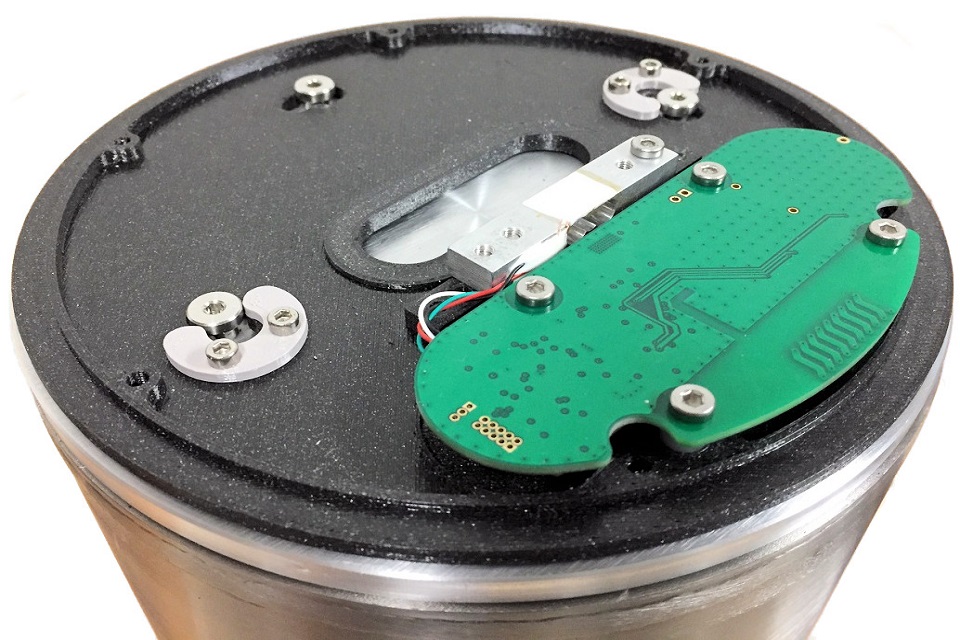
Sensor Driven microchip sensor
Project
Long lasting radiation tolerant sensors
Benefits
Monitoring cans is currently complex, time consuming and requires removal of the can from the store. This sensor will greatly reduce the need for operator intervention, thereby reducing dose.
The ability to produce and apply the sensors would enable the condition of all cans to be monitored in real time.
Current Status
A second phase of work has been commissioned for 2021/22 that will refine and improve the communications route from the sensors and will develop them further.
Delivery Partners
Sensor Driven, supported by Collender Ltd, National Nuclear Laboratory, Game Changers
Contact Details
Simon Malone and Paul Mort via technical.innovation@sellafieldsites.com
7.4 Encapsulating the future
An extensive development programme was conducted from the mid 1980s to 1990s to identify suitable immobilisation media and techniques for Intermediate Level Wastes (ILWs).
The success of this programme led to the construction of the 4 current encapsulation plants on the Sellafield site.
Ordinary Portland Cement (OPC) based grouts were the encapsulants chosen as they are versatile, cost effective, easy to apply and stable over the required timeframe.
Whilst these plants and products have been highly successful, there is an opportunity to develop alternative encapsulants that will reduce cost, environmental impact and provide improved performance.
The simplest way to reduce costs and environmental impact is to reduce package numbers, which leads to a reduction in raw materials, encapsulation plants, stores, transports and geology space needed.
Hundreds of small-scale trials have been conducted and statistical analysis undertaken to identify formulation envelopes of these four cement systems.
The most promising formulations are now being taken forward and applied to non-radioactive waste simulants and scaled up.
Early scaling trials using ion exchange material and Magnox sludge simulant are already indicating improvements in mixing rheology and the ability to access other application methods that would facilitate higher waste loadings than could be achieved using traditional methods and OPC based encapsulants.
Trials to increase application to full scale are ongoing and, if successful, provide encapsulation options that could reduce package numbers for some waste streams by over 50%.
Package numbers can be reduced by utilising cement systems with a lower processing viscosity to make it easier to incorporate a higher waste loading and better encapsulate complex and large items.
The encapsulant IRT was launched to bring together national experts from Sellafield Ltd, National Nuclear Laboratory (NNL), University of Sheffield and TÜV SÜD Nuclear Technologies to identify wastes of interest and select promising cement systems.
Structured workshops and desktop reviews were undertaken to identify the potential encapsulants and wastes.
The encapsulants identified were geopolymers, calcium sulfoaluminate, high alumina cements and magnesium phosphate cements.
Hundreds of small-scale trials have been conducted and statistical analysis undertaken to identify formulation envelopes of these 4 cement systems.
The most promising formulations are now being taken forward and applied to non-radioactive waste simulants and scaled up.
Early scaling trials using ion exchange material and Magnox sludge simulant are already indicating improvements in mixing rheology and the ability to access other application methods that would facilitate higher waste loadings than could be achieved using traditional methods and OPC based encapsulants.
Trials to increase application to full scale are ongoing and, if successful, provide encapsulation options that could reduce package numbers for some waste streams by over 50%.
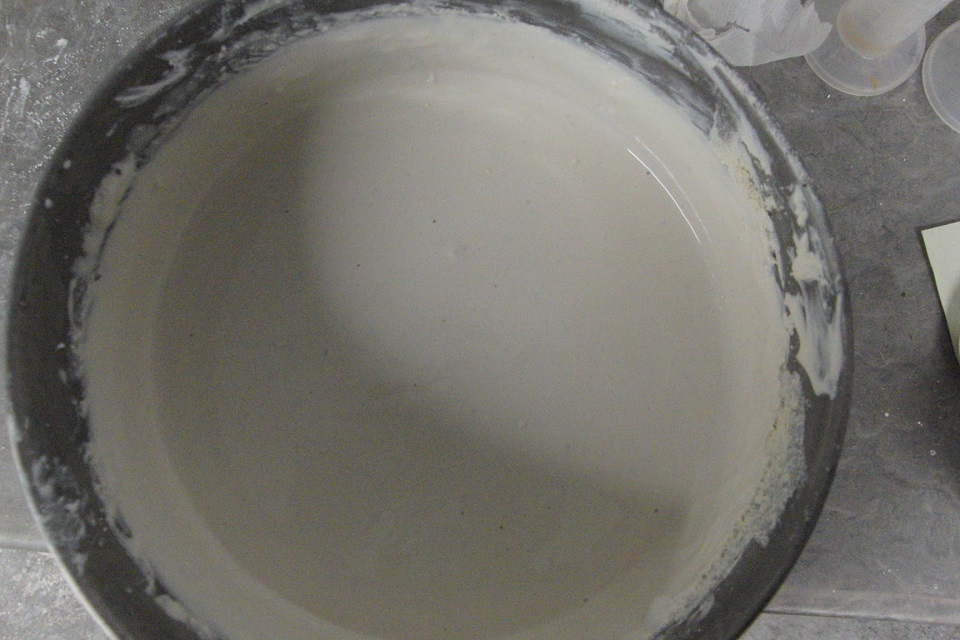
Magnox sludge simulant in geopolymer
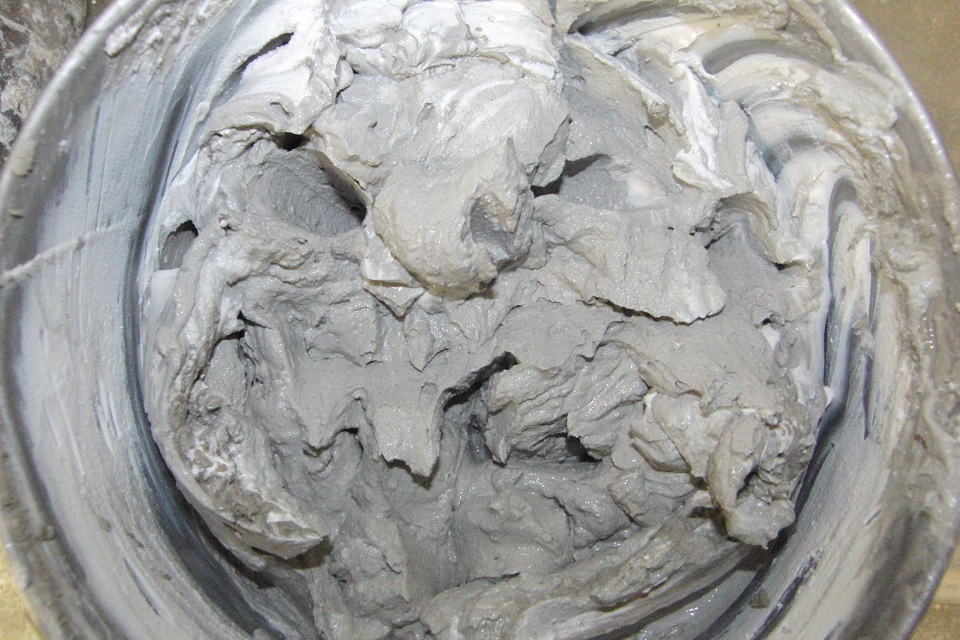
Magnox sludge simulant in cement
Project
Development of improved encapsulant treatment options
Benefits
Novel encapsulants with low processing viscosities and greater tolerance to problematic chemical species offer benefits over traditional OPC based encapsulants by reducing potential package numbers.
Any reduction in package numbers reduces raw materials used, plants, stores, transport and Geological Disposal Facility (GDF) requirements and helps contribute to reduce our carbon footprint and contribute to the net zero CO2 targets.
Additionally, the novel encapsulants being investigated are viewed as “low CO2” alternatives to OPC based cements.
Current Status
Small scale formulation development of a number of alternative encapsulants have been concluded and statistical modelling undertaken. Proposed formulations are being taken forwards for waste compatibility assessment and scaling trials.
Delivery Partners
National Nuclear Laboratory, TÜV SÜD Nuclear Technologies and University of Sheffield
Contact Details
Sean Morgan technical.innovation@sellafieldsites.com
7.5 Pandemic support to the local community

This project challenged our normal ways of working and enabled us to consider actual rather than expected requirements.
For example, the usual standards for face visors include everything from welding to chemical and bacterial resistance but being able to use a visor for welding is not a requirement for a hospital ward, so challenging the actual ‘need’ vs the ‘must have this stamp’ and understanding the difference was a key technical requirement to getting the right products to the right places in the right time.
Our colleagues were keen to share their expertise and resources once it was apparent the pandemic had resulted in a national shortage of Personal Protective Equipment (PPE) and peripheral supplies.
Responding quickly to the situation, various teams were assigned to support local and national groups to help address the crisis to ensure enough suitable PPE and peripheral critical supplies were sourced, approved and delivered to areas where there were shortages.
The teams were established as a Technical Acceptance Group (TAG) with input from PPE specialists, Project Management, Innovation, Product Development and Supply Chain Management from Sellafield Ltd.
The TAG, which included representatives from BAE, was able to provide a similar response in South Lakes and Lancashire.
They worked alongside the heads of the Clinical Commissioning Group, Community and Acute Care Group and Social Care Services across Cumbria, Cumbria County Council response groups and the Highways Agency stores and transport.
The TAG members were instrumental in rounding up and approving supplies from our spares, supply chain partners and local hero volunteers who manufactured items such as visors.
In addition, Sellafield Ltd provided funding of over £270k for gowns and peripheral supplies, which were manufactured by a number of key suppliers.
This was only possible due to the technical abilities of our employees and the expertise and relationships within the supply chain, combined with the input on requirements from health experts.
This enabled decisions, development, acceptance and delivery of new/alternative products to be made in record time, allowing us to very quickly move from crisis to business-as-usual.
7.6 Horizon scanning
It’s no surprise that we are looking to technology to provide the solutions to address the diverse range of challenges, being faced now and in the future.

As such, the ability to see which technologies are emerging and are being deployed successfully elsewhere is critical to ensure that we are able to select and capitalise on the best solutions available.
In addition, the long-term nature of our ambitious mission requires us to understand, appreciate and adapt to the trends and drivers of change that are shaping the external environment.
Awareness of surfacing technologies will ensure that our strategies will be futureproofed and will be resilient to the wider scope of potential change.
The emerging technology team is tasked with identifying those tools and mechanisms that will allow us to undertake this horizon scanning in a systematic and robust manner.
Work to date has included:
Developing and piloting a strategic foresight methodology to explore multiple plausible future scenarios.
The pilot explored the topic of Artificial Intelligence (AI) and facilitated a more holistic conversation amongst a range of stakeholders about the wider social, economic and political drivers of change in this area and how they could combine in different ways to influence the future of the technology at Sellafield Ltd.
The resulting scenarios will be used by the Robotics & Artificial Intelligence (RAI) Programme to help us form its long-term vision for this particular technology.
- deploying technology databases, such as the Cogentus IdeaCatalog, into the business to give us instant visibility of thousands of technologies from multiple industries.
This reduces the risk of us developing costly bespoke solutions when suitable technologies could already exist.
Multiple technologies have been identified through IdeaCatalog and subsequently have been deployed to deliver tangible benefits.
- the creation of the “Sellafield Drop Box” as a facility for colleagues in the NDA or its supply chain to make the business aware of any interesting technologies.
So far, dozens of technologies have been suggested through the Drop Box, some of which were selected to explore further, while others were highlighted across the network to increase awareness of their impact.
With systematic horizon scanning methods in place, Sellafield Ltd is able to ensure that the best available technology and information is identified, developed and applied to support its mission.
In addition, the long-term nature of our ambitious mission requires us to understand, appreciate and adapt to the trends and drivers of change that are shaping the external environment.
7.7 Our ‘Dragon’s Den’ competition
Now in its 3rd year, the Dragons’ Den-style competition has successfully enabled ideas generated by our employees to drive innovation across the business.
Each year, this initiative is intended to encourage creative thinking around specific themes, which are then judged by business leaders. The winners are given time and funding to develop and implement their ideas.
This year, all employees were invited to focus on improving the working environment, delivering our mission and dealing more effectively with waste. The winners were announced in June 2020.
Winner - Ian Teasdale with Anti-Neutrino Ground Environment Logging System (ANGELS)

Anti-Neutrino Ground Environment Logging System (ANGELS)
Ian’s idea was to borrow technology from the world of particle physics to facilitate the monitoring of radioactivity when it is well shielded by concrete or is buried underground.
This can be done remotely without the need for expensive intrusive investigation or risk to workers.
The detector system depends on the properties of the ghostly anti-neutrino particle. It is deployed in a self-contained physics laboratory on the back of a lorry and has been developed by Liverpool University.
Ian is working with them to prove the concept when managing nuclear waste after the idea won support in both Dragons’ Den and the Game Changers programme.
Winner - Gavin Morgan with uniform reuse
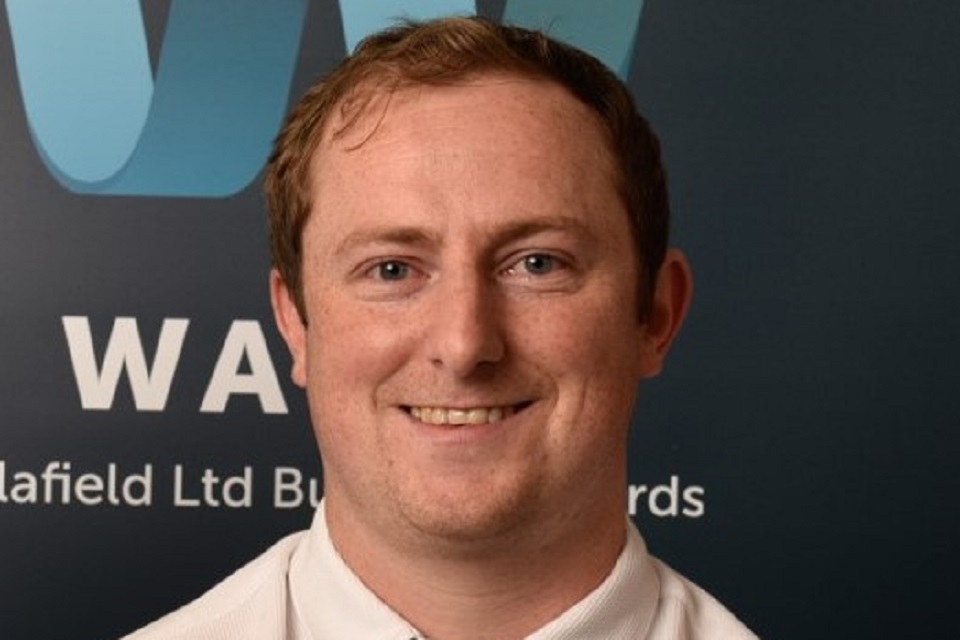
This initiative was to reuse or recycle our corporate clothing at the end of its lifecycle to support our waste strategy and sustainability goals.
Gavin engaged with stakeholders across the business to ensure sustainability was considered at various stages of life with a placeholder to ensure that our next PPE contract incorporates sustainability principles when purchasing for the next tender.
Through discussions with facilities management and OneAIM, Gavin found our general day-to-day use aligned to sustainability principles, including use and washing.
Winners: Dan Braund and Jennie Stein with Deskspace AI app

Daniel Braund
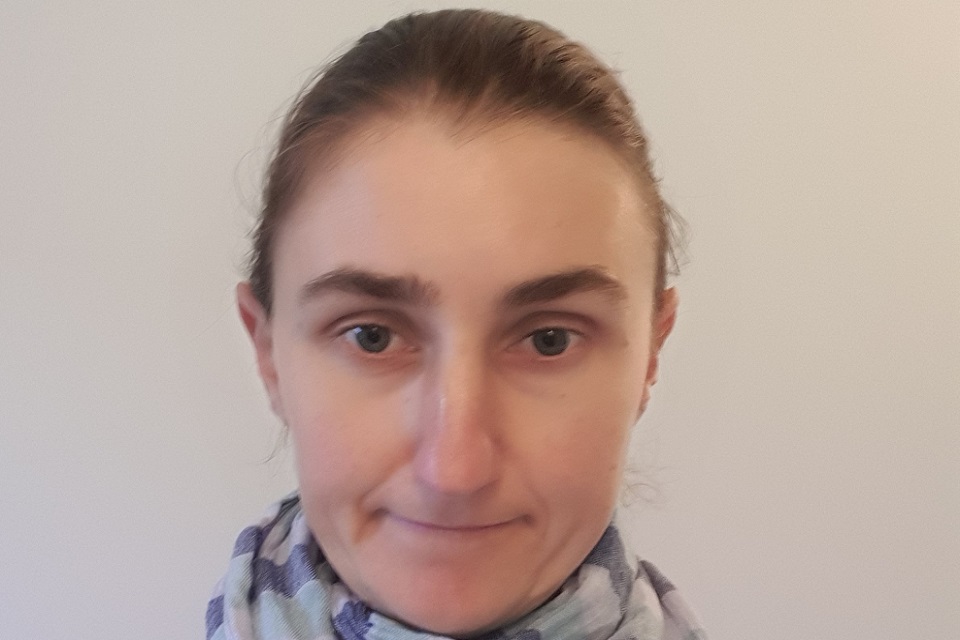
Jennie Stein - Deskspace AI app
Jennie’s idea was to use an app to allow individuals to book hotdesks and resources, while Dan suggested using AI to optimally suggest and book resources (desks, days in the office etc) for users based on their interactions in Microsoft Outlook.
Dan and Jennie are working together to incorporate their submissions into the agile working programme in the future.
7.8 Game Changers
Now in its 6th year, Game Changers continues to go from strength to strength, providing a platform for exceptional innovation to solve the challenges of decommissioning at Sellafield and the wider Nuclear Decommissioning Authority (NDA) estate.
Managed by FIS360 Ltd and National Nuclear Laboratory (NNL), the process is being helped by the newly formed challenge statement steering group, which works across the NDA to identify and prioritise projects suitable for Game Changers, as well as raising awareness of the programme across the nuclear sector.
In addition, the Game Changers Innovation Forum was launched to support the scaling and commercialisation of technology and to help develop relationships between project partners and key stakeholders, including Tier 2 companies, operators, site licence companies, investors and collaborating partners.
Another partner, Dounreay Site Restoration Ltd (DSRL), also joined forces with Sellafield Ltd to search for innovative solutions to their shared challenges.
In 2020/21, there were 5 calls for innovation which attracted 60 applications for feasibility studies:
- detection of organics in pipes and vessels (in partnership with DSRL)
- removal of contaminated concrete (in partnership with DSRL)
- ground condition monitoring
- characterisation of landfill and disposal areas
- standardised robotics control architecture
A number of projects were subsequently awarded “proof of concept” funding which is granted after the feasibility stage, when the technology has been demonstrated or a prototype produced:
- Flexible Interchangeable Reconfigurable Mechanical Arm (FIRMArm) for POCO, with FIRMA Engineering Ltd
- developed by Resolve Robotics Ltd, CellRail is a versatile and modular robotic system that deploys tools and sensors at any position and orientation within hazardous environments
- Modular Tube Deployment System (MTDS) for working at height, with Remote Maintenance Systems Ltd
- energy resolved X-ray for detecting residual liquor and sludges for POCO, with Unitive Design and Analysis. This included successful non-active trials of their prototype device
- exploration of Raman, Laser Induced Breakdown Spectroscopy and hyperspectral imaging to determine whether they can be used to analyse soil samples and detect contaminants for POCO, with the University of Strathclyde
- mobile cost effective active neutron detection for CM&I, with Arktis Radiation Detectors UK Ltd
- fast detection and measurement of waterborne tritium, a collaboration between Hybrid Instruments and Lancaster University
In addition, Game Changers has continued to support projects to fully develop the technology including:
- Sensor Driven which developed a fully-functioning prototype of a remote sensor system to help us monitor the condition of product container cans in long-term storage
- Createc Robotics Ltd and UK Atomic Energy Authority (UKAEA) demonstrated their potential solutions for standardised robotics control architectures for enabling the use of modular robotics systems and allowing all robotics integrators to quickly develop robotic solutions through the reuse of previous designs
A challenge sprint of robotic tasks was broadcast live to stakeholders from Sellafield Ltd, NNL and invited independent robotics experts.
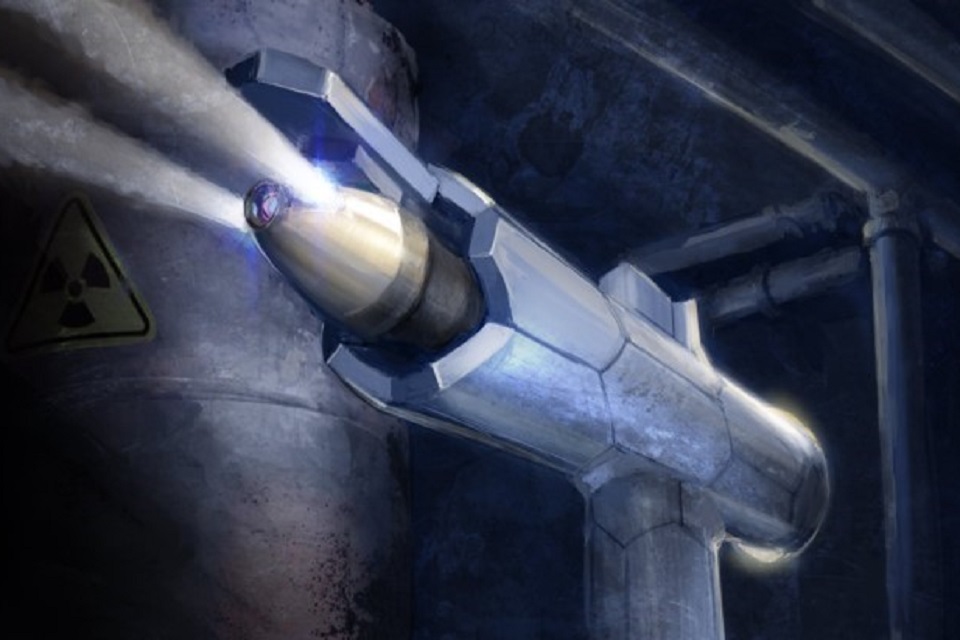
Robotic payload deployment system from Resolve Robotics
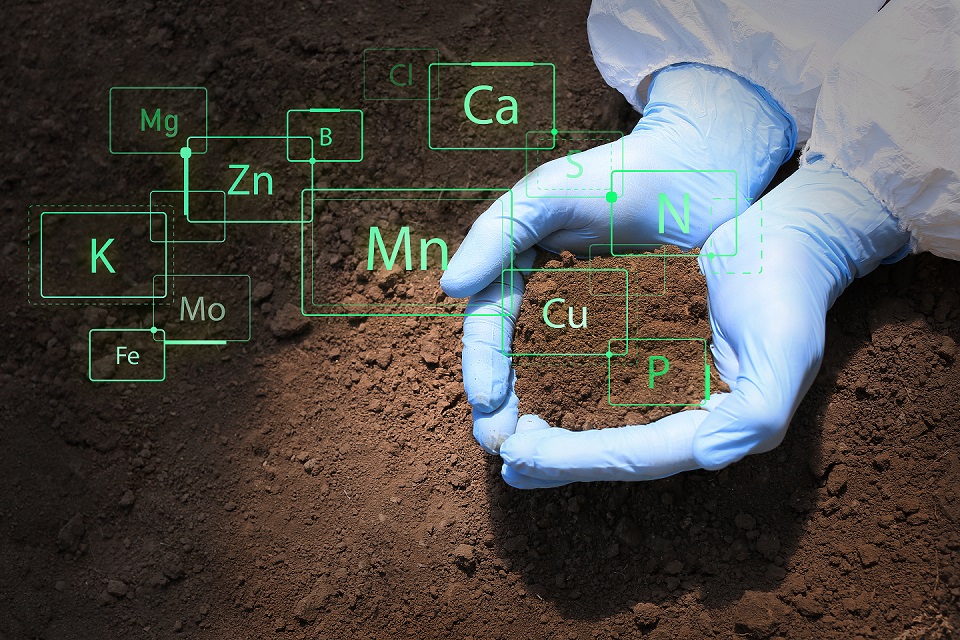
Hyperspectral imaging for soil sample analysis
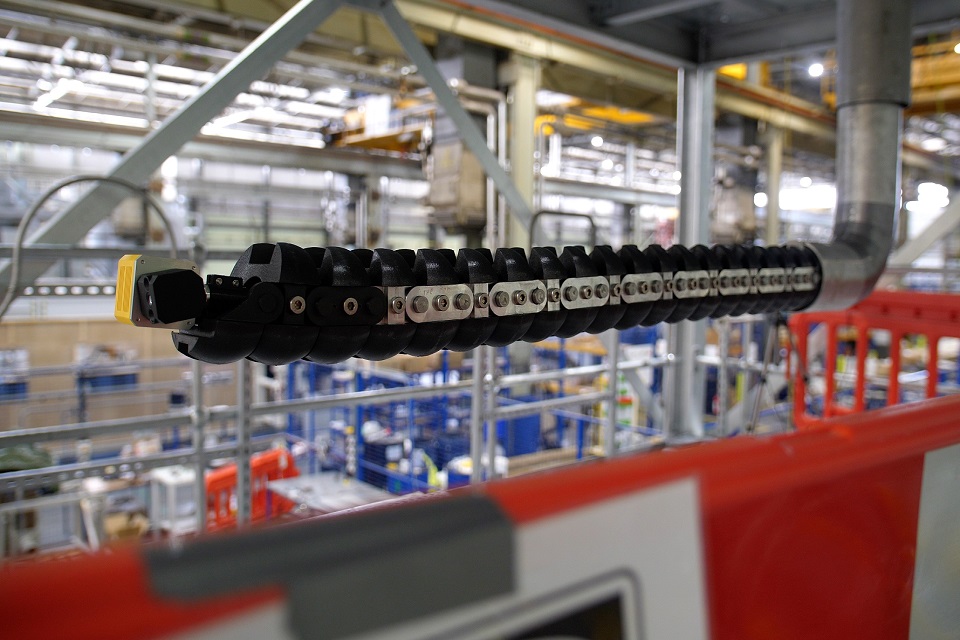
FIRMArm product from FIRMA Engineering (Patent App. No. GB2101716.5)
Simon Malone - IRT lead for measurement and analysis, Sellafield Ltd
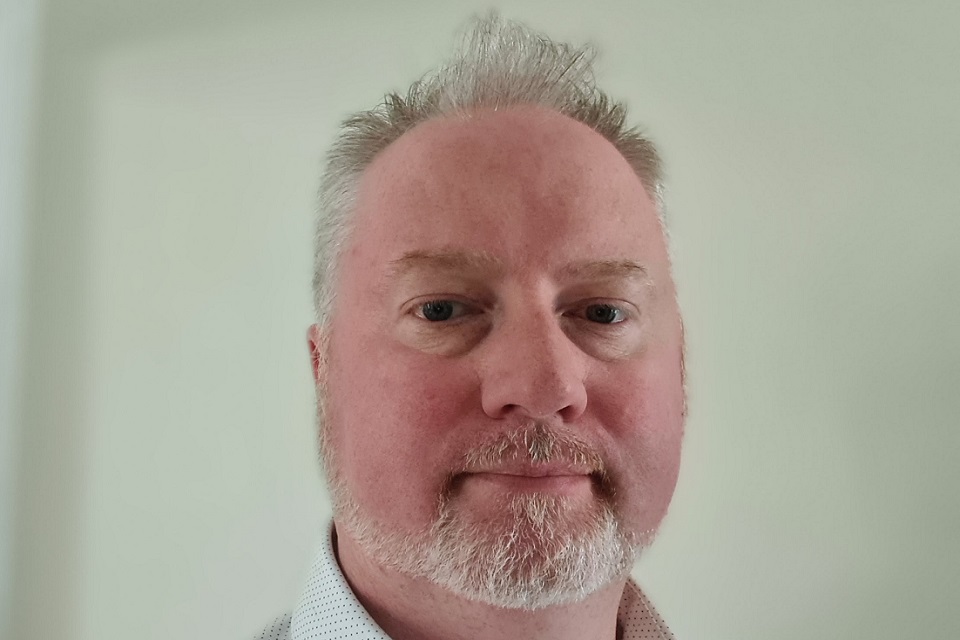
As IRT lead, Dr Simon Malone has a wide remit. His main responsibility is for overseeing a portfolio of diverse and wide-ranging research projects, such as in-situ measurements, hydrogen detection, and all aspects of CM&I across the value streams
In addition, Simon manages a number of partners and monitors the risks and plans for the research projects. He also scopes out new work with internal customers, maintains links with SMEs, universities and university spinouts whilst horizon scanning for new developments.
Simon has a strong academic background. He studied Applied Chemistry in Bristol, followed by an MSc in Analytical Chemistry and a PhD in Raman spectroscopy at the University of East Anglia. From there, he worked under Professor Sarah Heath as a Postdoctoral Research Associate (PDRA) at both York and Manchester University, researching crystallography of inorganic compounds, particularly those citrate complexes of aluminium and iron.
His next move took him into the polymer industry, where he spent 10 years at Innovia Films in Wigton, as a senior spectroscopist responsible for infrared spectroscopy, Time of-Flight Secondary Ion Mass Spectroscopy (ToF-SIMS), material testing as well as numerous classical analytical techniques.
Much of the role was developing and validating new measurement methods, reverse engineering and responding to customer complaints.
A member of the Royal Society of Chemistry, Simon joined Sellafield Ltd in 2015 and his significant background in both research and industry means that he is well-suited to this role as he understands the issues associated with developing innovative ideas and deploying them in an industrial context.
I want to use my academic and private sector experience to bring a different point of view to the industry, whilst keeping a sense of pace to deliver new and targeted R&D.
Sean Morgan, Encapsulant IRT lead, Sellafield Ltd

During his 20-year career, Dr Sean Morgan has developed significant expertise in all forms of waste treatment and is responsible for the identification and development of new encapsulants, to ensure that the waste is immobilised and rendered passively safe.
A Fellow of the Institute of Materials, Minerals & Mining, Sean holds several other roles, including lead for the Flammable Gas Centre of Expertise, ensuring a consistent approach is applied for flammable gas assessments.
Responsible for overseeing the hydrogen working party, Sean is also the University of Sheffield contact, the industrial supervisor for a number of PhDs and is joint chair of the intermediate level waste (ILW) Package Development group.
With a degree in Materials Engineering and a PhD in glass production for fibre optic devices, Sean joined BNFL in 1997 as part of the high temperature processes group, which included 18 months in the US, managing laboratory and pilot scale research on the Hanford vitrification project.
On returning to the UK, he spent 2 years at Inutec, assessing cementitious wasteforms and developing new waste packaging methods, before moving to Sellafield Ltd in 2010. Since then, Sean has gained a broad range of experience across SIXEP and SNM before moving into enterprise technical.
Thanks to a lot of effort, the alternative encapsulants that he is now developing are showing strong promise and he is on the cusp of doing large scale trials to verify that higher waste loadings are achievable, are more resistant to leaching and have improved fluidity.
This work includes the first novel encapsulant to get RWM assessment for Sellafield Ltd in 30 years.
Communication is a key aspect of any innovation project to ensure that its benefits and value are properly understood.
8. Spent Fuel Management
The Spent Fuel Management (SFM) value stream is responsible for the safe, secure and cost effective lifecycle management of spent nuclear fuel and associated waste, including:
- completing Magnox reprocessing as soon as practicable whilst creating contingencies for any remnant fuel
- the receipt and long-term storage of Advanced Gas-cooled Reactor (AGR) fuels which enables continued electricity generation and efficient reactor defueling, as well as the consolidation of spent fuel from Dounreay and the Ministry of Defence
- the evaporation and vitrification of high level waste and long-term storage prior to disposal along with completing the return of vitrified product to overseas reprocessing customers
- provision of effluent treatment and encapsulation capabilities to enable treatment of reprocessing effluent, enable high hazard risk reduction and treatment of future remediation effluent
- implement arrangements to transition facilities into ‘Post Operational Clean Out’ phase in a timely manner to enable effective lifecycle asset and waste management
8.1 Dounreay fuel consolidation
Irradiated nuclear fuels that are currently stored at Dounreay need to be consolidated at Sellafield to enable Dounreay to reach its interim end state by 2032.
From 1960 to 1994, Dounreay Site Restoration Ltd (DSRL) operated 2 fast breeder research reactors, the Dounreay Fast Breeder Reactor and the Prototype Fast Breeder Reactor.
In this period, these innovative programmes produced a wide range of irradiated experimental fuels including uranium oxide, mixed oxide, metallic uranic and carbide fuel of varying sizes.
Fast breeder fuel, often referred to as ‘exotic fuel’ is different to Magnox or Advanced Gas Reactor fuel, as it is irradiated to much greater levels in the reactor, subjected to higher operating temperatures and can have much higher enrichment.
Working collaboratively with DSRL, we are undertaking research to develop plans for interim storage to address this issue. This multi-year programme will require bespoke solutions to be identified due to the range of fuel types at Dounreay, which involves:
- assessing the irradiated fuels inventory at DSRL and the requirements for its inspection
- developing and licencing multiple types of transport packages to transport the fuel from Dounreay to the Sellafield site
- assessing and delivering various storage solutions at Sellafield, such as pond storage or novel dry cask storage systems
- investigating the interim storage behaviour of fast breeder fuel and developing the safety cases for interim storage
A detailed assessment of part of the fuel inventory has been completed through a collaborative project with Sellafield Ltd, NNL and DSRL to investigate the compatibility of the fuel with existing Self-Shielded Boxes (SSBs).
This research demonstrated that part of the irradiated fuel inventory could be stored safely in SSBs for up to 50 years, eliminating the need for a separate bespoke storage solution for this fuel type.
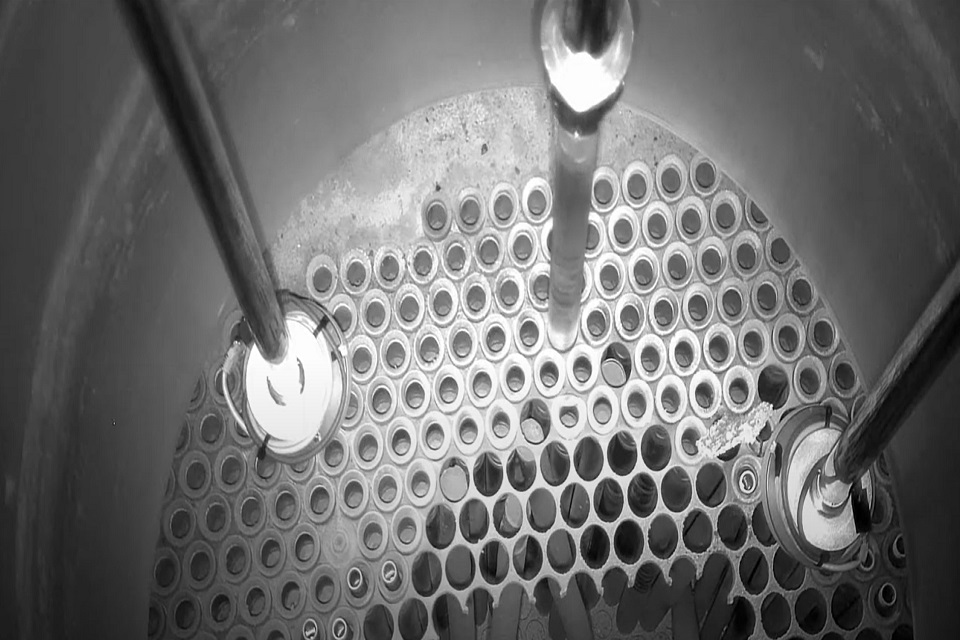
Camera footage within Dounreay Fast Reactor showing breeder elements and damage to top plate (© DSRL)
Project
Spent fuel consolidation programme
Benefits
This research programme will provide safe storage of the Dounreay irradiated fuel at Sellafield, pending the development of a lifecycle management solution including potential conditioning prior to storage in a GDF.
Current Status
This collaborative programme, involving DSRL and a range of supply chain partners, is ongoing with storage plans being developed for each fuel type.
Delivery Partners
Atkins, Dounreay Site Restoration Ltd (DSRL), National Nuclear Laboratory, Nuclear Advanced Manufacturing Research Centre (Nuclear AMRC), Magnox Ltd
Contact Details
Hannah Paterson technical.innovation@sellafieldsites.com
8.2 ROV inspection of vaults
The Vitrified Product Store (VPS), which houses the immobilised highly active waste generated from the reprocessing of spent nuclear fuel, has been at operation in Sellafield since 1990.
Ensuring it remains structurally sound is critical to ensure the safe management of the stainless steel containers of vitrified waste until they can be transferred to a Geological Disposal Facility (GDF).
As the Sellafield site transitions from reprocessing to decommissioning, the VPS will also store waste generated from the POCO of facilities that treat highly active waste.
Provision had been made within the Sellafield plan to build a replacement store to ensure the continued safe storage of the vitrified waste prior to the availability of the GDF.
Deciding when the replacement facility may be needed required a long-term assessment of the integrity of the facility.
Thanks to the collaborative relationship with NNL, a solution was identified which allowed the remote inspection of the tanks and vessels within the VPS.
Their shared expertise was used to develop a Remotely Operated Vehicle (ROV) that is capable of operating in a high-radiation environment to capture high-definition images of the inside of the store, which were used to determine the condition of the asset.
The system was deployed by lowering it approximately 30m through an air duct to gain access to the floor of the vault, allowing visual inspection of critical structural components that haven’t been seen since construction and inactive commissioning.
A multi-disciplinary team of corrosion and materials scientists, modellers and structural experts reviewed the data gathered from the ROV inspection, together with analysis of corrosion coupons and data from plant monitoring systems and operational models to show that the store is in excellent condition.
This novel remote inspection method has allowed work to design and build a replacement store to be deferred, enabling resources to be focused on other high priority hazard reduction activities.
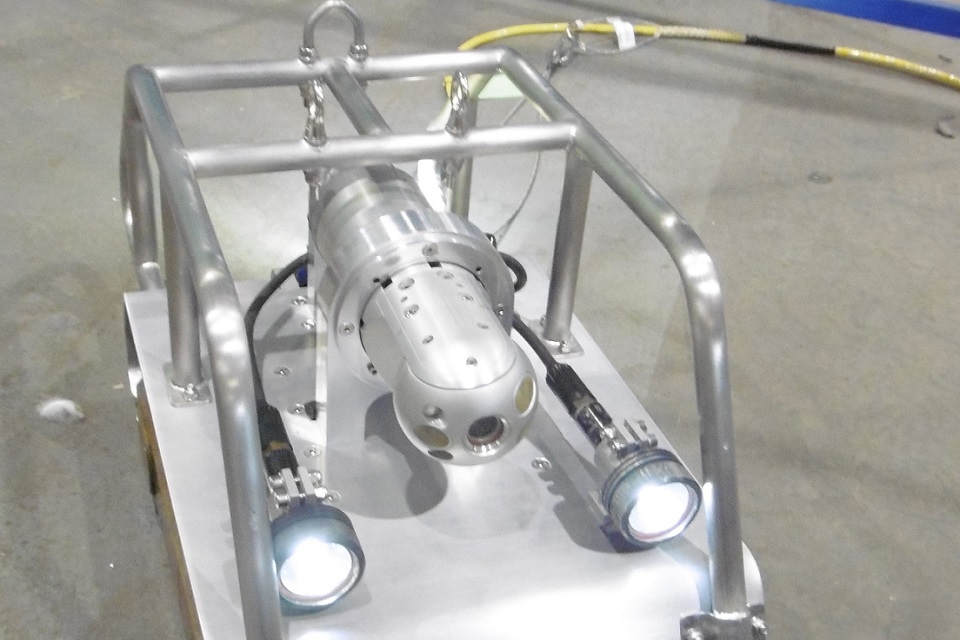
ROV for visual inspection of store.
Project
Vitrified product store asset management programme
Benefits
Deployment of the ROV has provided high quality images of critical structural components and environmental data (temperature and dose rate), allowing the condition of the VPS to be assessed to inform future management of the store.
This has enabled the life of the store to be extended.
Current Status
The asset condition of the store has been confirmed, allowing investment to design and build a replacement to be deferred.
Ongoing work to optimise management of the store will be supported by future inspections with the expectation that a replacement store can be avoided entirely.
Delivery Partners
National Nuclear Laboratory
Contact Details
Fiona Wright and Matthew Haigh
8.3 Effluent treatment transition
How effluent is treated at Sellafield is undergoing fundamental changes as the site transitions from reprocessing to remediation.
For 30 years, the effluent treatment process for the site has been unchanged, dominated by the reprocessing activities in Magnox and Thermal Oxide Reprocessing Plant (Thorp).
With the end of reprocessing in sight, there is now a complete change to the amount, nature and variability of waste effluent.
Research has been undertaken to focus on adapting the Enhanced Actinides Removal Plant (EARP) to accept alternative waste streams from donor plants.
EARP currently receives iron-bearing acidic effluent and coprecipitates activity through neutralisation with hydroxide, resulting in cleaned effluent for discharge to sea and an ILW slurry for encapsulation.
Laboratory and rig-based experimentation is being used to investigate whether the chemistry of the EARP system can be adapted to accept other waste streams, such as decontamination agents and to understand its potential operating capacity.
Modelling tools have also been developed and validated against the test results to assess scenarios, predict potential operational difficulties and the impact on discharges to the sea.
Although this work is ongoing, advice has already been issued to potential donor plants to specify how much organic decontamination reagent can be used and sent to EARP.
The treatment of other waste streams at EARP will be phased alongside the end of Magnox reprocessing. This will require a small amount of iron to be added to the EARP feed to replicate some of the Magnox effluent and to ensure that the EARP process will be effective, while producing a quarter of the ILW waste for ongoing safe storage and disposal.
In the future, further information will be generated to underpin the acceptance of other waste streams which could allow for effluents from the Highly Active Liquor (HAL) programme to be accepted, enabling a step-change reduction in costs and facilities required.
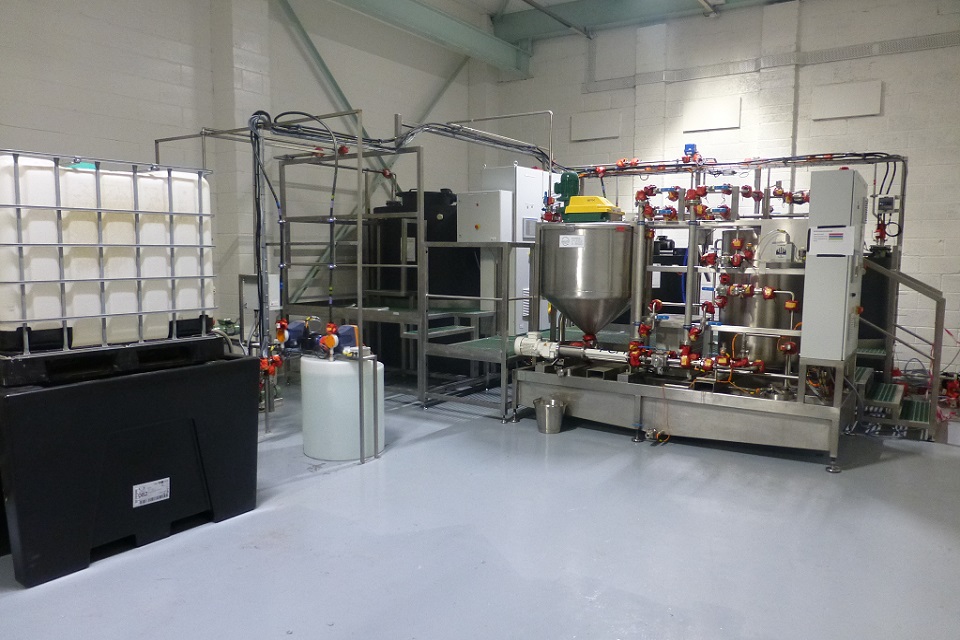
EARP rig in National Nuclear Lab's Workington Rig Hall facility
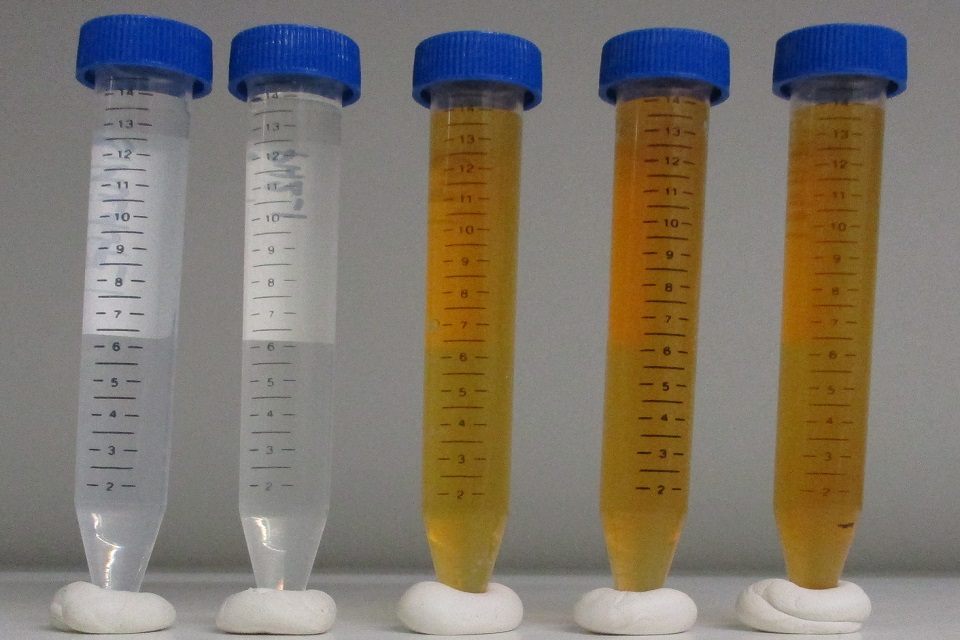
Floc with 0.2g/L iron with increasing pH left to right
Project
Enhanced Actinides Removal Plant (EARP) operating plan
Benefits
This work enables us to continue effluent treatment as the site transitions from reprocessing to remediation activities. Donor plants and treatment facilities are working collaboratively together to generate future operational plans that remediate risks, maintain the effluent capability, reduce the cost of waste disposal and minimise environmental impact.
Current Status
This project is ongoing and, in the future, will investigate whether the EARP can accept other waste streams, including effluents from the HAL programme.
Delivery Partners
National Nuclear Laboratory
Contact Details
Dick Blackham and Bethann Walker technical.innovation@sellafieldsites.com
8.4 Extending SIXEP asset lifetime
The Site Ion Exchange Effluent Plant (SIXEP) treats water from fuel storage ponds and legacy retrieval operations by using sand filtration and ion exchange to remove caesium, strontium and particulates before it is discharged into the sea.
The SIXEP began operations in the 1980s with a 20-year design life for the ion exchange vessels.
However, the need for effluent treatment has now been extended to around 2060 and a risk has been identified that the plant will not last long enough due to failure of certain assets.
The replacement SIXEP Continuity Plant will not be available until 2030 so research is being undertaken to give assurance in the operational lifetime of the existing SIXEP by:
- enhancing regular inspection of components where progressive damage is observed
- reducing stress on plant items through changing the control process
When one of the ion exchange vessels is emptied and re-filled every 3 months, it is possible to carry out an internal inspection.
This has identified some damage to the internal vessel components but the rate of change of the damage is hard to quantify due to the quality of the images.
Fortunately, removal of the need to operate through a gamma gate has allowed a high-definition camera and laser scanning system to be deployed on rigid poles.
This ensures consistent positioning from one inspection to the next and provides better quality images for detailed review of the welds on the ion exchange vessels.
This new method of inspection is now in place and will be used to quantitatively measure any component movement or damage.
Changes to the control system to minimise cyclic stress on the plant have been investigated by simulating the process in a computational model. This provided a digital test bed to trial control system settings and reduce the historic flow variability.
As a result, changes have been progressively implemented to the plant control system that have demonstrated a significant reduction in the flow variation.
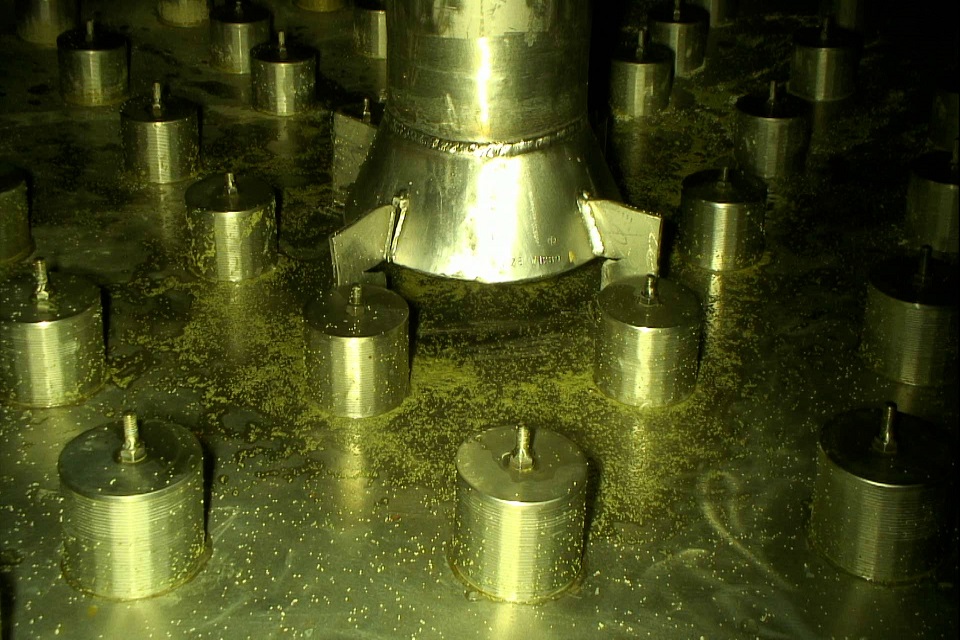
High-definition image of ion exchange vessel
Project
SIXEP asset management programme
Benefits
Minimising the cyclic stress on the plant will increase the SIXEP lifetime, while regular quantitative measurements of the vessels will increase confidence in the plant integrity.
This active asset management approach increases confidence that the existing SIXEP will continue to operate until the replacement plant becomes available.
Current Status
Now that the new quantitative inspection methods have been successfully deployed, data will be collected and compared at each subsequent inspection to assess and monitor the ongoing integrity of the vessels.
Delivery Partners
National Nuclear Laboratory
Contact Details
Andrew Riley technical.innovation@sellafieldsites.com
Bethann Walker, Effluent plants technical, Sellafield Ltd
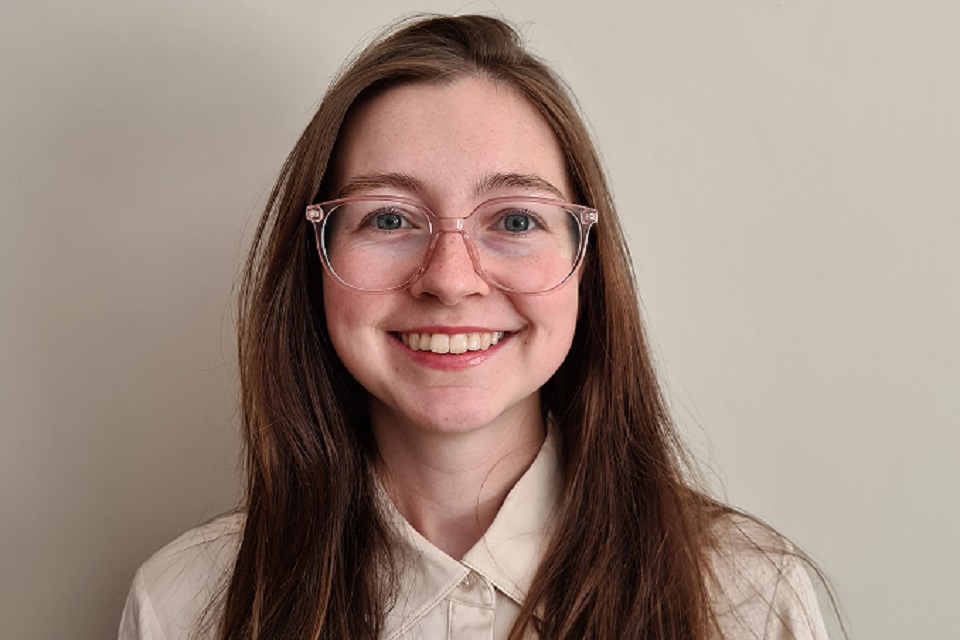
Effluent plants (LAEMG) technical employee, Bethann Walker, has completed her engineering degree while working as an apprentice at Sellafield.
This five-year Degree Apprenticeship Scheme with Gen2 and University of Cumbria has enabled Bethann to study as she works, committing to a demanding schedule of day-release learning to achieve her BEng (Hons) Degree in Plant Engineering (Nuclear Plant and Process Technology) at the University of Cumbria, while contributing as a member of the Magnox Reprocessing and Effluent Plant (MR&EP) technical team.
Her final year degree project involved assessing the requirements, risks and processes involved in transferring drums from the Waste Packaging and Encapsulation Plant (WPEP) Store to the Engineered Drum Store (EDS) in order to free up much-needed space.
This required co-ordination of logistics while understanding and being mindful of radiation levels and safety requirements is critical to facilitate the start and delivery of other projects.
At the same time, Bethann has contributed towards work implementing improvements in the WPEP process which will reduce costs and make the encapsulation process more efficient.
I’m grateful to have been given this opportunity to do my degree while working at Sellafield, as I have benefitted from being able to apply my site experience to my learning and vice versa. I enjoy seeing the impact of the work I’m doing.
Hannah Paterson, Spent fuel technical manager, Sellafield Ltd

With an academic background in chemistry, spent fuel technical manager Hannah says she almost stumbled into the industry but since completing the nuclear graduates programme in 2016, she has never looked back.
During her varied career, Hannah has managed a large portfolio of R&D and test rig campaigns to support our high hazard risk reduction mission in high level waste.
She also undertook an 18-month secondment to the NDA as a national waste inventory manager before starting her current role in the spent fuel services strategy and technical team.
She describes each day as being varied, supporting project and programme teams but her main responsibility is to manage the technical programme of works for interim storage of irradiated fuel due to be received from Dounreay and setting the strategy for how the fuel will be managed.
The majority of this fuel differs in composition from current fuels stored on site as the experimental reactor fuel was exposed to wider ranging conditions in fast breeder reactors.
An RSC Chartered Chemist, Hannah remains driven by the opportunity to collaborate with other organisations and sharing ideas about the challenges of storing different fuels, focusing on safety and innovation. Hannah is also passionate about encouraging others to join the nuclear industry and is Chair of the Nuclear Institute YGN for 2021.
In the meantime, Hannah’s current priority is to finally meet her colleagues in Dounreay face to face for the first time in 18 months, a meeting which she is convinced will reap results from focused thinking in the real world, rather than the virtual.
I enjoy the unique range of challenges at Sellafield and am proud to be cleaning up our nuclear legacy for future generations.
Georgina Vickers

Technical advisor SIXEP
SIXEP technical advisor Georgina (Gina) Vickers joined Sellafield Ltd on the graduate training programme in 2019 and since then, she has seized every opportunity to come her way.
The graduate training programme, which is designed to offer experience in a variety of disciplines, has enabled Gina to gain insight into the corporate management side of the business in external affairs, as well as working in the systems engineering team of SIXEP, where great ideas translate into real changes on the plant.
Gina was keen to join the team at Sellafield after she completed an industrial placement in the Risley office, investigating methods to empty the SIXEP stores of historic waste, as part of her Chemical Engineering degree at the University of Manchester.
Her current work involves exploring how the life of the ageing SIXEP facility can be extended: aspects include understanding where the risk of failure lies, through improved inspection methods and how to fix the plant if something goes wrong, by evaluating innovative repair techniques, such as molten metal spraying.
This technique has not yet been used in the nuclear industry so the outcome of remote trials being carried out are eagerly anticipated.
Beyond the day job, in her role as STEM ambassador and school governor, Gina mentors and supports students interested in exploring a similar career pathway by providing advice and preparing them with mock interviews.
I enjoy the hands-on aspects of working on site at Sellafield. It’s great to be given responsibility when working on projects and to see things come to fruition.
9. Special Nuclear Material
The Special Nuclear Material (SNM) value stream is responsible for the safe, secure and appropriate storage of special nuclear materials, with the R&D programme focusing on:
- understanding the chemical and physical behaviour of plutonium-bearing materials to ensure long-term safe management and storage, focusing on aspects including radiolysis, evolution of sealed packages, corrosion behaviour of impurities such as chlorides and the requirements for future conditioning
- innovative approaches to the safe operation of facilities handling and storing plutonium, possibly including technologies such as robotics, automation and digital applications for alpha environments
- continued technical underpinning of POCO and decommissioning plans for alpha facilities
- techniques for the monitoring, retrieval and processing of residual product in gloveboxes, plant, equipment and facilities during POCO and decommissioning
- direct support to the special nuclear materials consolidation programme
9.1 Thorp package characterisation
The Special Nuclear Materials (SNM) package surveillance programme is needed to understand how plutonium oxide (PuO2) and its packaging ages through long-term storage.
This work can only be delivered through selective destructive testing of plutonium packages.
This plays a vital role in mitigating technical risks around the lifetime of packages within the multi-billion-pound SNM portfolio and will inform on the strategic tolerance for the delivery of the Sellafield Product and Residues Store Retreatment Plant (SRP).
The package characterisation facility at NNL received the first welded Magnox package in 2017. Since then, over 20 Magnox welded packages have been characterised in terms of gas composition and PuO2 characteristics and detailed metallurgical characterisation of the package components has begun.
The Magnox packages ranged in age from 6 months to 43 years old but were all at sub-atmospheric pressure despite the presence of helium gas from alpha decay of PuO2.
In March 2021, the first Thorp package was delivered to the NNL facility after a project to develop a transport route from the Thorp SNM store to NNL and to implement new safety cases.
The Thorp package was more of a challenge to deliver because it is thermally hotter and presents a larger dose challenge when handling, compared to Magnox packages.
The first Thorp package was punctured in the NNL facility and the ullage gas was sampled and analysed, with no hydrogen or oxygen detected. The package contents were characterised by measuring volatile content through loss on heating, powder specific surface area, X-ray powder diffraction and thermo gravimetric analysis.
Samples were also taken for additional characterisation in the complimentary science programme.
Finally, the material was heat treated, measuring mass change in the furnace cycle, before being welded up into a new package for storage prior to transfer to a Sellafield SNM store.
The can components were size reduced, mounted, ground and polished to allow detailed metallurgical characterisation.
Now that the NNL facility can handle Thorp packages, this will allow more detailed package characterisation to be undertaken to understand the impact on package lifetime, including the rate of helium evolution and component corrosion.
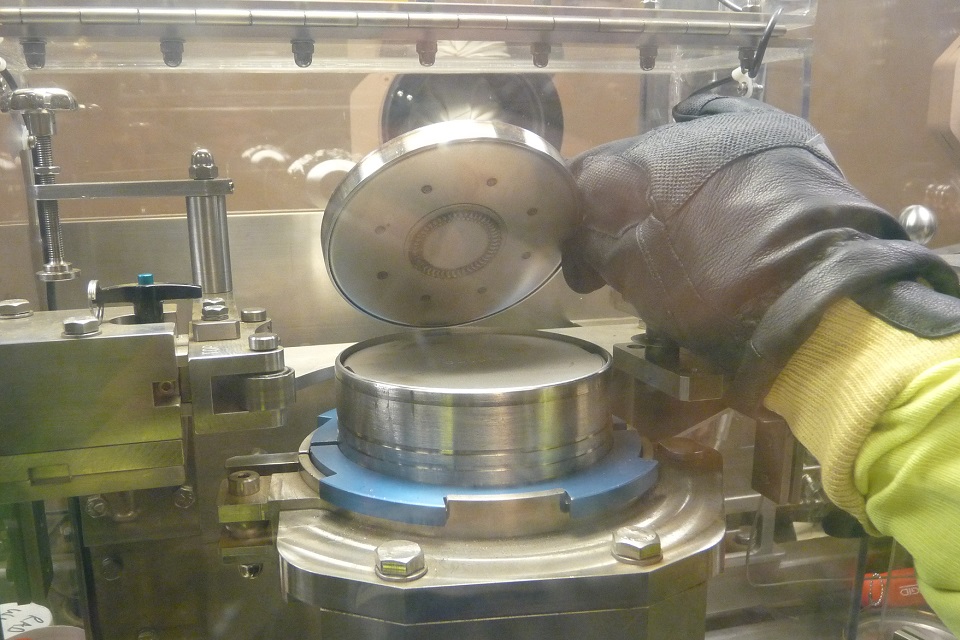
Thorp package outer can
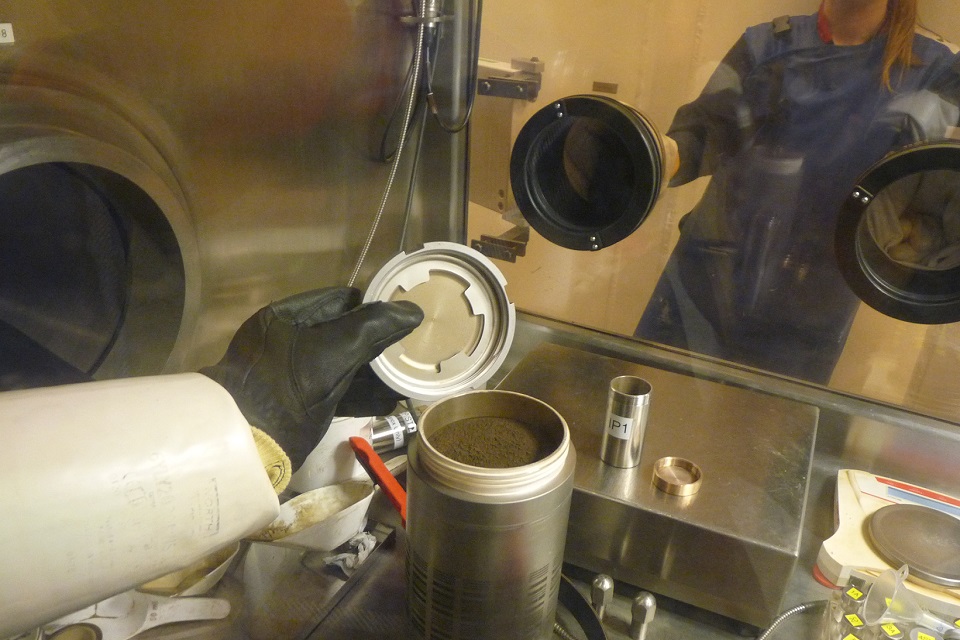
Thorp package inner can and package contents
Project
SNM package surveillance programme
Benefits
Understanding and characterising how plutonium oxide and its packaging ages through long-term storage will ensure the safe storage of the material over the package lifetime until it can be retreated and or repackaged in the SRP.
Current Status
This programme will run until at least 2028 when the SRP is commissioned. The NNL facility will continue to examine the current package types as they continue to age and capability will be expanded to receive other material and package types.
Delivery Partners
National Nuclear Laboratory
Contact Details
Jeff Hobbs, email: technical.innovation@sellafieldsites.com
9.2 Plutonium oxide evolution
Plutonium, principally in the form of plutonium oxide (PuO2) powder, is currently stored on the Sellafield site in gas-tight packages, some of which are nearly 50 years old.
Over this period, the chemistry of the PuO2 has been evolving, driven by the radioactive decay of plutonium to uranium and americium daughters and the generation of helium gas.
To inform the current and future safe storage of plutonium oxide, it is necessary to understand the effects of radioactive decay on the chemical stability of the PuO2 matrix, its ability to retain gases and alter its oxidation state.
As such, we have supported a PhD programme, which is now in its second year, to model the evolution of stored plutonium oxide through Density Functional Theory (DFT) analysis.
This project is part of the TRANSCEND Consortium and is a collaboration with Lancaster University and University College London.
The chemical modelling of actinides is technically challenging. However, Lancaster University has developed a bespoke combination of DFT analysis and empirical techniques that accurately reproduces the available experimental values.
This has enabled the chemical form of the PuO2 matrix to be identified under a range of oxygen concentrations and has determined how americium ingrowth and helium can perturb it.
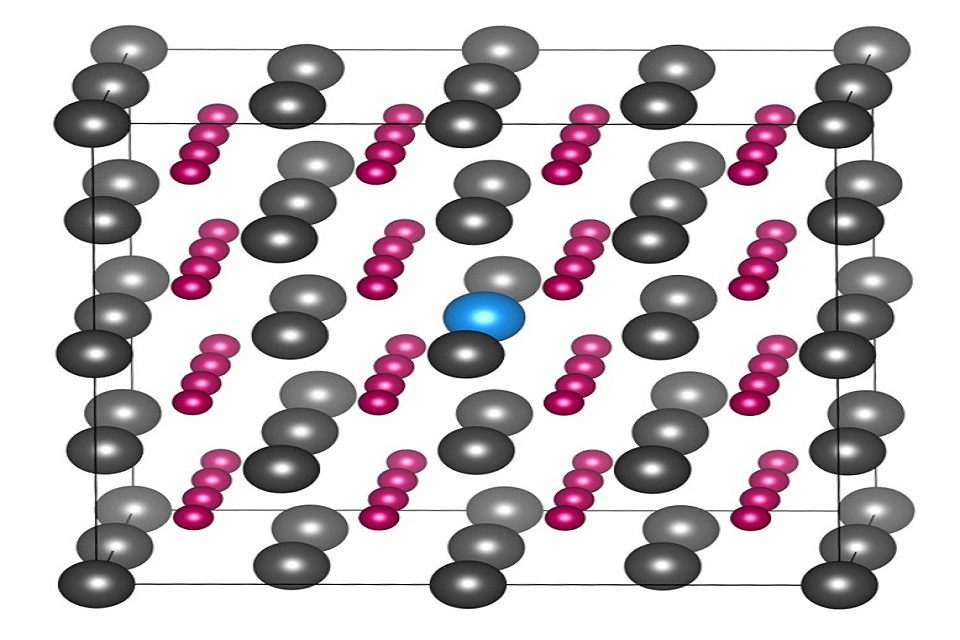
Graphical representation of the plutonium oxide matrix with the inclusion of an americium daughter occupying a plutonium atomic position
The results and findings have recently been published in 2 leading international journals.
- William D. Neilson, Helen Steele and Sam Murphy - Evolving Defect Chemistry of (Pu,Am)O2±x Journal of Physical Chemistry C. 2021. 2 William D. Neilson, James T. Pegg, Helen Steele and Samuel T. Murphy The defect chemistry of non-stoichiometric PuO2±x Phys. Chem. Chem. Phys., 2021, 23, 4544
Understanding any potential factors that may affect the plutonium oxidation state is essential information, in the long-term move towards its storage and will inform future disposition programmes.
Project
Evolution of stored PuO2 through DFT analysis
Benefits
This PhD research will minimise and focus future experimental work on plutonium evolution, which will reduce the risk to operators and researchers, cost and time.
Current Status
The PhD is ongoing and the next step is to study surface effects.
Delivery Partners
Lancaster University
Contact Details
Helen Steele, email: technical.innovation@sellafieldsites.com
9.3 Special nuclear materials innovation programme
The SNM innovation team is tasked with providing the SNM value stream with new technology, processes and facilities to enhance the safety, accuracy and efficiency of current operations or to make new ones.
Success to date has been achieved in the following areas:
- Long-term safe management and storage
- Glovebox operations
Long-term safe management and storage
A key objective of the SNM R&D programme is the long-term integrity and safe storage of packages containing special nuclear material. An important element of this is understanding how they will evolve over time.
Innovative solutions are not only addressing can design and their performance over long timescales but are also developing technologies to enable the packages to monitor themselves and techniques to monitor for surface defects and changes to the store environment.
- Modular Stores Facilities – Capabilities are being investigated by RED Engineering to establish how modular storage can be incorporated into the current emergency response in case of breaches within the cell
Having pre-constructed, mobile, modular stores would significantly reduce the response time.
- Automated stores – Currently operated manually, the aim is to fully automate the process of retrieving, analysing and packing 600 packages per year into transport containers, as well as shuffling the packages within a channel
An initial concept study has been completed, demonstrating the potential benefits of a reduction in the dose risk to operators and increased productivity, allowing more time for detailed can inspections. A mock-up of a real store has been built at the NNL laboratory in Workington to test automated store systems
- Virtual Reality (VR) Stores Application - – Creating a virtual representation of the Sellafield Product and Residues Store (SPRS) will allow operators to become familiar with areas which would not normally be accessible in the physical environment
This will enable training to be carried out safely and, in the future, could be used to simulate ad hoc operations to test run and practice new operations. Tannahill Reay Visual Communications are currently developing the design of the VR stores application.
- High Accuracy Inspection System (HAIS) – The National Physical Laboratory (NPL) has been commissioned to develop an inspection system which will be able to generate quantitative data from visual inspections
This will enable the level of corrosion to be assessed to quantify the lifetime of SPRS to a reasonable degree of accuracy. The enhanced prototype system is currently going through CE (or UK equivalent) marking in order to allow it to be used on the plant.
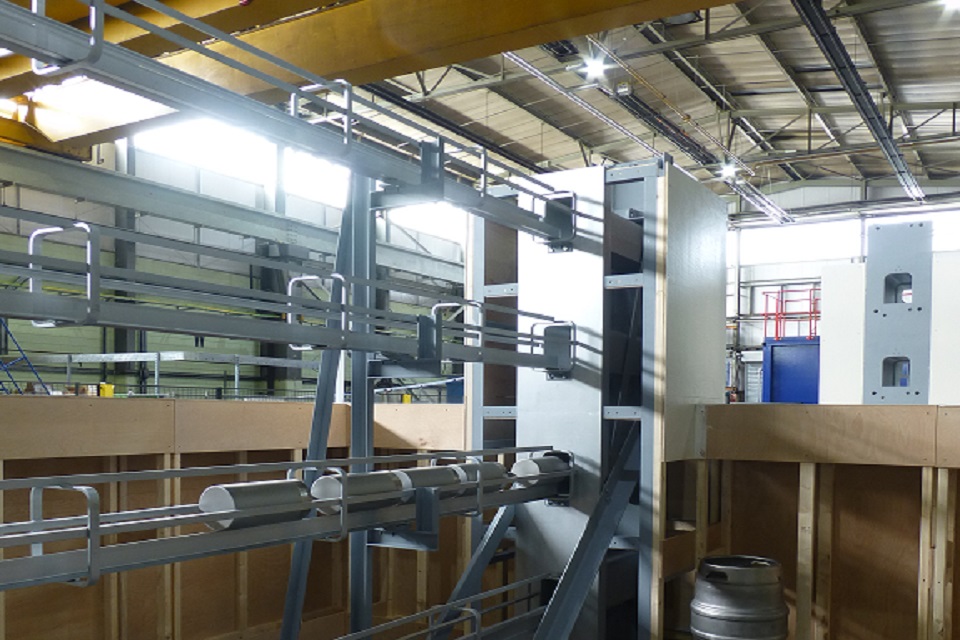
Mock-up of stores layout to test automated store system

Mock-up of stores layout to test automated store system
To find out more contact Paul Mort via email technical.innovation@sellafieldsites.com
9.4 Special nuclear materials innovation programme
Glovebox operations
Gloveboxes have been used on the Sellafield site for many years for a variety of purposes such as R&D, analysis and more general operational activities.
To support the continued safe operation of gloveboxes there are a number of initiatives being progressed to improve efficiency and protect the operator:
- Glovebox vacuum – The plutonium vacuum will provide a simple solution to glovebox POCO work by speeding up the process, to make it safer for the operator by reducing the time taken to perform the operation and by keeping their hands clear of any sharp hazards
A Modified Off-The-Shelf (MOTS) vacuum cleaner has been tried and tested and, from there, an initial five systems made to cope with the heightened activity of the plutonium oxide left within the glovebox
-
Heads-Up Display (HUD) – In order to overcome the limitations imposed by wearing a respirator when working on a glovebox, a new design is being tested by Tannahill Reay Visual Communications which will include an on-screen heads-up display. It will allow the operator to see any relevant instructions on screen, without having to withdraw their hands to access the paper documentation
-
3D scanners for gloveboxes – A 3D scanner has been selected which will be able to complete a 3D scan of the internals of a glovebox and produce a 3D CAD geometry. The model can then be used to support the RrOBO project and develop a glovebox database for the Sellafield site
-
ORA Welders – An initiative to secure an alternative technique to sealing the Polyvinyl chloride (PVC) used to bag- out SNM containers from gloveboxes has been developed by a French manufacturer - The ORA Company
Two ORA Welders, one calibrated for PVC and one for Polyurethane, which are cheaper, simpler to use and reduce the risk to operatives, have now been purchased and put through operator training.
In addition, a web application has been designed and built by members of SNM called the Sellafield Plutonium Application for the Retention of Knowledge (SPARK).
It provides a base knowledge for SNM new starters and has become part of the UK Alpha Resilience and Capability (ARC) programme in its capacity to retain knowledge around plutonium and storing it for future generations of operators.

Glovebox vacuum
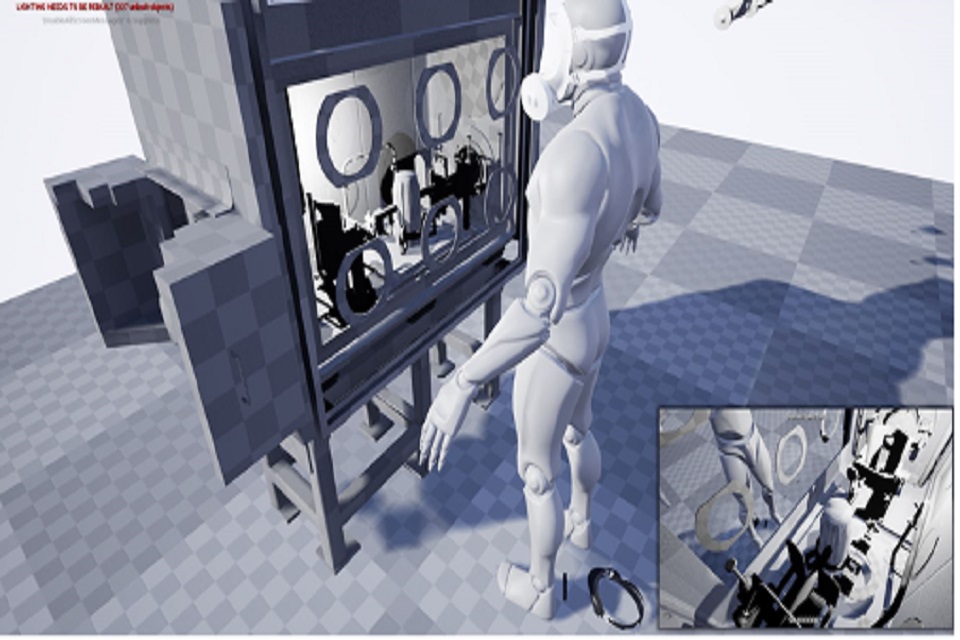
Heads-Up Display - HUD

3D scanners for glovebox

ORA welders
9.5 Characterisation and inspection of assets
A clear understanding of the early characterisation of the condition of assets has the potential to significantly benefit POCO and decommissioning operations.
Until now, a comprehensive assessment of assets has not been carried out. To address that gap, the SNM technical team is working closely with Operations Support to review the condition of the packages held within the stores and the store itself.
By accurately characterising a facility and its contents, risk and uncertainty can be reduced over the transfer of packages to the SRP facility. This work will allow optimised transport schemes to be developed, reducing rework and enabling better estimates of permitted safe storage times.
Alongside tried and tested technologies, the SNM technical team is developing new techniques to improve accessibility, quality of image, standardisation of lighting and training.
A can-confidence testing programme for both Magnox and Thorp packages was undertaken off-site to ensure that the outer cans meet their design requirements; while some outer cans were tested to destruction to understand their limits.
It is critical to have the assurance that all packages will perform safely in normal storage conditions and especially during an event.
Each outer can and package was checked prior to testing by the SNM technical team to confirm that each one was manufactured to the required standard.
They must be accurately recorded and documented to track what is required for continued safe storage, for example, with the metallurgical performance of the weld compared to the pressure-withstand capability and drop-resistance.
Currently the inspection of outer cans is carried out by reviewing package after package on screen.
A new novel machine learning approach has been investigated to automatically assess and interpret inspection videos and Cerberus Nuclear and NNL are exploring techniques to make the review job for the team swifter and less error prone.
Much progress has been made with neural networks and learning algorithms and the team is getting ready to work alongside the computer in assessing the quality of the stored packages.
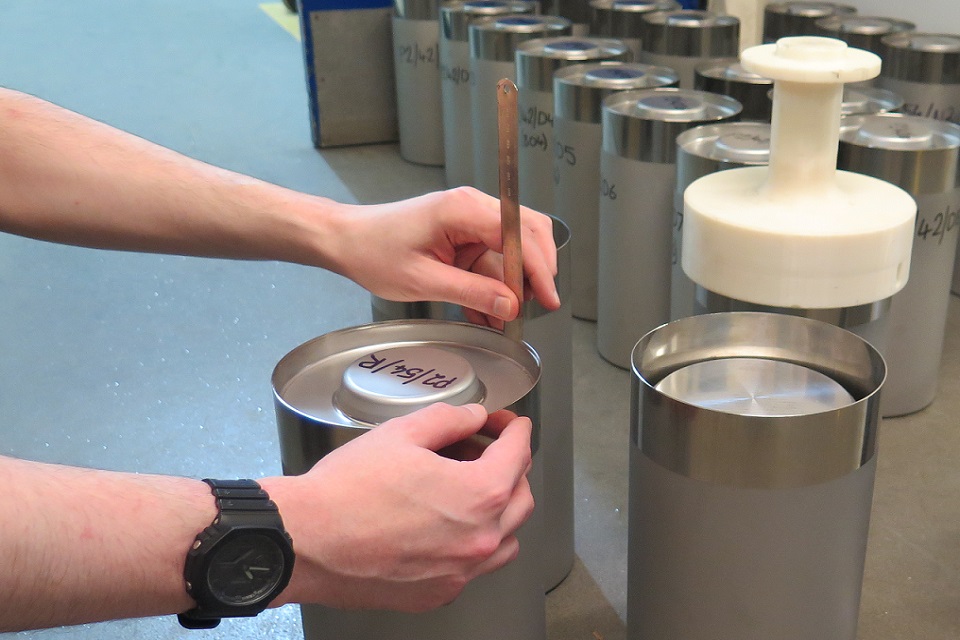
Lid position checks before testing

Pole inspection of stores
Project
Special Nuclear Materials (SNM) package inspection and characterisation
Benefits
Improved characterisation and inspection of packages will ensure that the capabilities and performance of the packages are properly understood, storage risks are minimised and any issues affecting future shipments are identified quickly.
Current Status
This work is ongoing with the next step to trial the can inspection machine learning algorithm and use the results of the can-confidence testing to review the safe-to-store safety case.
Delivery Partners
Cavendish Nuclear, Cerberus Nuclear, National Nuclear Laboratory
Contact Details
Mark Greaves, email: technical.innovation@sellafieldsites.com
Jeff Hobbs - SNM programme technical manager, Sellafield Ltd

As SNM programme technical manager, Dr Jeff Hobbs is responsible for assessing the technical needs associated with the long-term storage of plutonium at Sellafield. This involves managing a small team of people, supporting their development and technically leading a wide range of projects.
This year sees the culmination of the welded package characterisation work, which Jeff has supported from the initial functional specification.
This provides a route to assess the contents of Magnox and Thorp packages with a view to characterising long-term storage behaviour. The next phase is to look at residue package characterisation.
Jeff studied Chemistry at the University of Nottingham, followed by a PhD in inorganic chemistry investigating the chemical species that corrode fast reactor fuel pins. From there, he joined the BNFL Research & Technology team in 1993 as part of the advanced reprocessing programme to improve plutonium finishing (nitrate to oxide conversion) methods.
In order to provide more hands-on support, Jeff moved to the Magnox reprocessing plant at Sellafield in 2000, working on the plutonium and uranium separation, finishing and storage areas, before specialising in plutonium storage.
A member of the Royal Society of Chemistry, Jeff’s expertise in plutonium storage enabled him to focus directly on project and programme support for the finishing and long-term storage area. In 2009, he played an active role in bringing the SPRS into operation and online, which he described as “satisfying to see transition from construction to operations.”
He is now part of the team planning the SPRS Retreatment Plant (SRP), which will repackage the plutonium material for long term storage.
It’s really satisfying to see projects through to completion, and pass knowledge on to the next generation.
Ellie Ford - Technical support, Sellafield Ltd
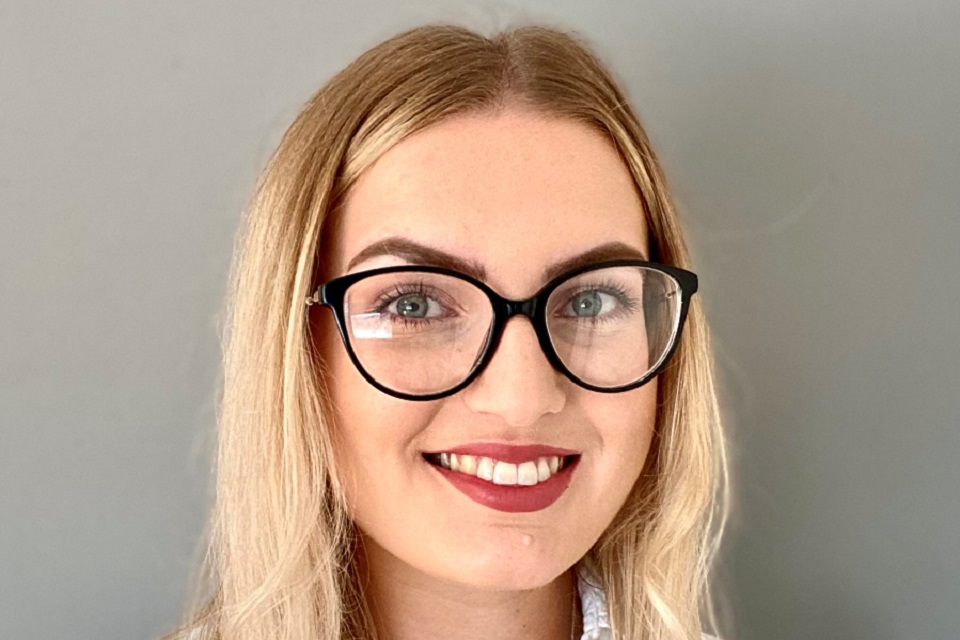
Ellie Ford joined the SNM technical team in 2017 as part of the Gen2 degree apprenticeship scheme and will graduate with a BEng in Plant Engineering (Nuclear Plant & Process Technology) from the University of Cumbria in December 2021.
This five-year apprenticeship scheme has enabled Ellie to continue working at Sellafield while studying for her degree, with a day-release each week for courses and tuition.
The 3-year foundation course, followed by the 2-year progression to degree, has given Ellie an extensive understanding of her field and she has been able to put this knowledge to good use to develop a prototype device for improving ex-situ inspections of packages in stores, as part of her final year project.
This device will mount a series of cameras in fixed positions around a package to provide consistent, all-round images to improve the quality of inspections and enable digital processing of images.
The prototype has been successfully trialled in the workshop and plans for future inactive and active trials are being developed.
Ellie’s focus this year has been leading the SNM-North package inspection programme, aiming to fulfil the annual targets for inspection.
There are recognised shortfalls with the current equipment and Ellie is supporting work underway to improve the inspection capability and provide better data on the packages to support ongoing substantiation.
As an active member of the Nuclear Institute (NI) Ellie also volunteers for the Cumbria branch as STEM lead, which involves arranging and supporting STEM activities in the local community.
I want to make what we are doing better and look forward to seeing my project being used to improve ex-situ inspections.
10. Retrievals
The Retrievals value stream mission is a reduction in the hazard and risk posed by nuclear waste stored in legacy ponds and silos by retrieving and transferring it to safe modern containment.
The waste is highly heterogenous and has been stored for many decades in non- ideal conditions, making it hard to characterise and retrieve.
The R&D programme is focused on:
- Characterising the waste and assessing risks in order to develop and implement waste routes
- Continued development of innovative techniques for waste retrieval
- Managing the impact of waste retrieval activities on the continued safe operation of the legacy facilities and on downstream waste conditioning and effluent treatment facilities
- Assessing treatment and finishing requirements for unconditioned waste together with Letter of Compliance (LoC) requirements
- Developing Condition Monitoring and Inspection (CM&I) capabilities to demonstrate that retrieved waste behaviour is consistent with predicted behaviour during the storage period
- Conditioning, storage and disposal solutions for metallic uranic fuel and uranium bearing material
10.1 Magnox Swarf Storage Silo skip fill optimisation
Waste stored in the Magnox Swarf Storage Silo (MSSS) facility is retrieved and packaged into MSSS 3m3 boxes for interim storage in an unconditioned form. The lidded 3m3 boxes, containing the waste, are held in an internal skip located in a concrete bund which provides multiple containment barriers.
These will be stored in either Encapsulated Product Store 3 (EPS3) or the Box Encapsulation Plant Product Store (BEPPS) on an interim basis.
This project investigates how the corrosion behaviour and thermal conductivity of residual reactive metal in sludge changes as it dries out over the storage period and how the changing thermal conductivity affects the heat dissipation from the package.
These factors feed into the safe to store case and provide assurances against potential adverse reaction during storage.
A novel experimentation technique where equilibrium vapour pressure was applied around the Corroded Magnox Sludge (CMS) and CMS+Magnox samples was used to achieve an appropriate relative humidity for the corrosion experiments to give an equilibrium sludge pore water content.
- The Magnox corrosion rate, with reducing sludge water content, was measured by hydrogen evolution quantification
- Samples were used to measure the change in CMS thermal conductivity with reducing water content
- The CMS water content/water potential (effort needed to move water within the pores) was measured to develop water retention curves and to inform the availability of water in sludge: its transport through porosity
- This resulted in an evaluation of the critical saturation factor, the point at which water ceases to be available to Magnox and corrosion (source of heat generation) stops
The associated thermal conductivity informed the rate at which heat generated from corrosion rates could be conducted away, preventing heat build- up and potential increase in reaction rate.
This demonstrated that the previous assumed CMS thermal conductivity was pessimistic and gave additional confidence in the declared margin.
This research has increased understanding of how saturation affects Magnox corrosion, contributes to justifying and underpinning higher waste loadings, skip filling optimisation and increases confidence in the safe to store case.
The next steps for this work are to implement the results into the technical baseline to support skip filling optimisation and to refine predictive waste evolution models.
Phase 2 of this work is planned to further underpin the new data, by filling in the remaining gaps and investigating equivalent behaviour during sludge dry-out of metallic uranium systems.
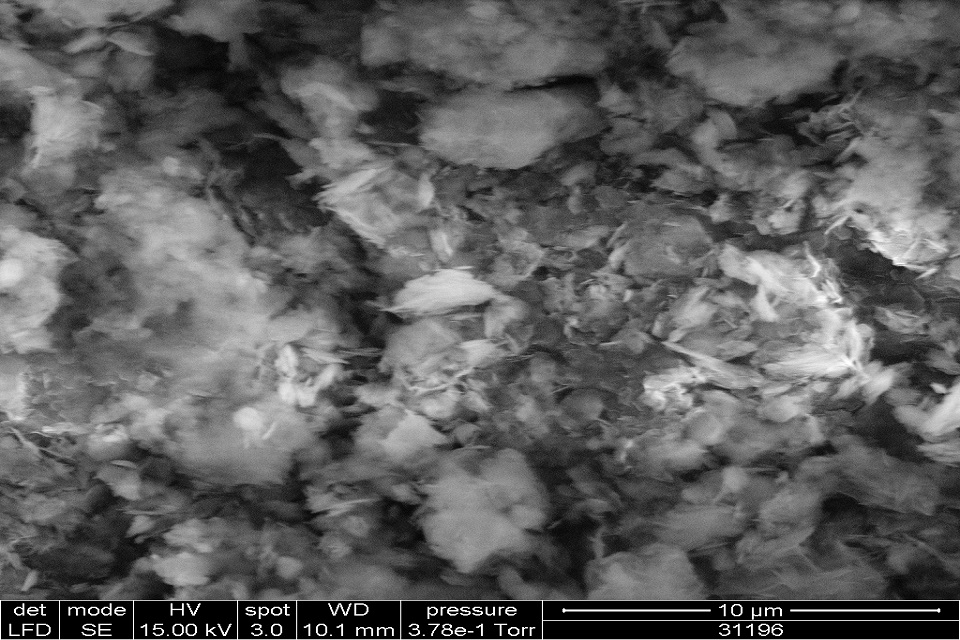
Scanning electron micrograph of corroded Magnox sludge sample used
Project
Magnox corrosion in MSSS 3m3 boxes during unconditioned storage
Benefits
This work facilitates MSSS skip filling optimisation to maximise waste loading and to reduce the number of MSSS 3m3 boxes being used, thereby increasing confidence in the values declared within the safe to store case.
It also demonstrates to the regulators and our stakeholders a commitment to continue to learn and improve upon key technical assumptions, solidifying positions and quantifying residual risks.
Current Status
This phase of the work (Magnox corrosion) is complete with the next (uranium corrosion) currently in progress to further underpin assumptions and aid further optimisation.
Delivery Partners
National Nuclear Laboratory
Contact Details
Stephen Farris, John Clifford and Andrew Diggle, email: technical.innovation@sellafieldsites.com
10.2 Salt deposition monitoring
In an effort to give assurance that atmospheric conditions are unlikely to harm the long-term resistance of boxes, the lifecycle CM&I strategy was implemented to monitor salt deposits on 3m3 boxes in manufacture, short-term holding and assembly and storage as waste products.
Container Warehousing and Logistics Facility (CW&LF)
In December 2019, 15 cm × 15 cm salt deposition plates were installed in five locations from box import to storage areas, representing different environments.
The deposition plates were manufactured from Duplex 2205 and acted as proxies for the box surfaces. Salt deposition measurements were taken in July and December 2020 using an Elcometer 130 salt contamination meter.
The initial one-year baselining period is now complete. Low rates of salt deposition have been measured from 0.02 μg/cm2/month (within the main store) to 0.36 μg/cm2/month (import/ export route).
The higher readings were associated with areas closer to external environments. An action level of 1.5 μg/cm2/month has been proposed for the salt deposition rate in the store based on worst-case assumptions and the box manufacturer’s acceptance criteria.
The deposition rates measured in the store were all far from the action limits and so the risk from salt deposition is considered to be negligible.
Product Stores
Salt deposition measurements will also be taken in the stores before (empty baseline) and after (filled) MSSS 3m3 box placement to check their effect on deposition rate over the long term.
These measurements will be taken from roof plug deployed corrosion coupons and deposition plates, with longer-term measurements taken from swabs during ex-situ box inspection.
Rather than using a fixed inspection regime, each corrosion and salt deposition result from one store will be used to inform the inspection frequency required for the others, depending on the packages and mechanisms in each store.
This will give proxy package corrosion behaviour prior to ex-situ inspection becoming available.
Sintered Mesh Filter Material
Sintered mesh filters are the most susceptible 3m3 box material to chloride-induced corrosion. The point at which corrosion may initiate is being investigated and filter material has been in place on atmospheric exposure test frames since March 2019.
The corrosion onset on these test frames and future fresh samples will link a salt content to corrosion and apply the results to store conditions.
The resulting timescale will not only inform if corrosion is predicted within the lifetime of the store but also whether the filter functionality is retained should corrosion occur.

CW&LF Box Storage area with deposition plate installed
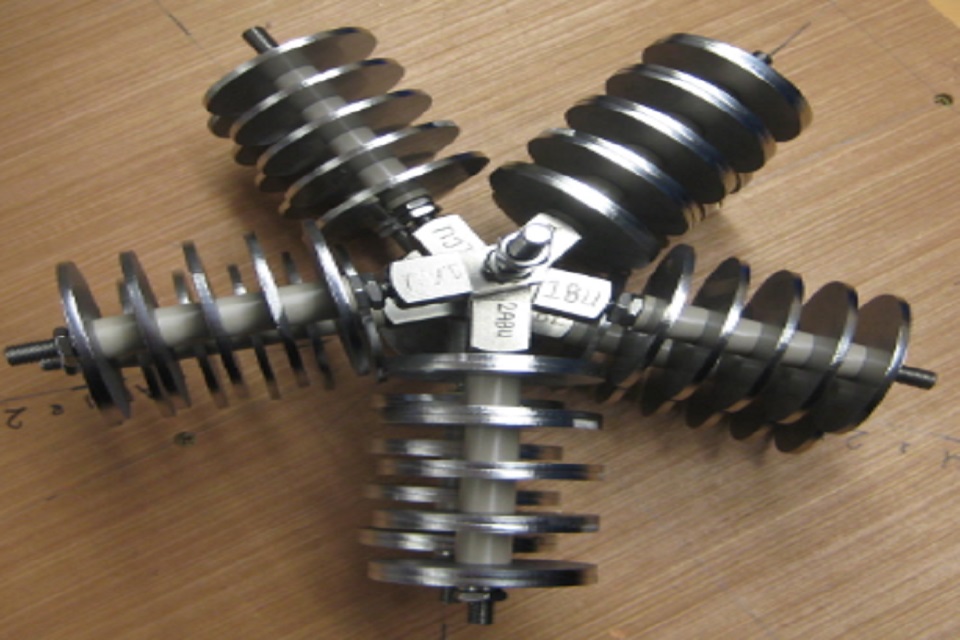
Encapsulation Product Store 3 and Box Encapsulation and Product Store - Coupon tree arrangement

Sintered mesh filter material at start
Project
In-situ monitoring for waste packages
Benefits
This work has confirmed that the risk from salt deposition is negligible and ensures the lifetime waste package care and management.
Current Status
The salt deposition monitoring is ongoing and will track salt accumulation during operational periods of the store, The work relating in-store salt deposition and link to potential onset of filter corrosion is now underway.
Delivery Partners
National Nuclear Laboratory
Contact Details
Charlotte Jackson, email: technical.innovation@sellafieldsites.com
10.3 Image enhancement for in-situ monitoring
Over the last year, there has been a drive to continue the development of technologies for performing CM&I of large waste containers within their vault stores (in-situ).
Those assessed as potentially suitable to monitor how the waste packages are evolving over their storage life include: colour cameras and better lighting, thermal imaging,
Light Detection And Ranging (LiDAR), acoustic monitoring, an instrumented device for close-up inspection by deployment between stacks of waste packages and range-resolved hydrogen monitoring to identify packages of interest for further inspection.
The key requirement for CM&I is the ability to be able to view the general condition of all packages and stacks of packages, be able to identify marks or damage on the external surfaces of the packages, check the physical condition of filters installed on packages and determine package identification numbers.
One particular area offering an obvious benefit is image enhancement where software is used to enhance the Closed Circuit Television (CCTV) images available from existing cameras in the ILW stores.
As part of the Game Changers programme (Page 17), the University of Strathclyde has been evaluating several robust techniques that can be used without requiring significant datasets or analysis time.
Software has been developed that can provide image enhancement of camera feeds in real-time or will allow further off-line analysis.
The software runs on a desktop computer via a video feed from the in-vault camera system and is being developed in parallel with the camera and lighting system requirements.
The software tools are currently being evaluated on plant to investigate:
- Contrast enhancement: enabling the detail within dark or saturated areas of an image to be seen such as package features in low light conditions
- Super resolution: improving the apparent resolution of images to counteract blurred or fuzzy images such as clearer identification of package ID numbers
- Archive restoration: removal of noise/static and automatic detection of anomalies being developed for subsequent testing
This has the potential to be widely used within the NDA estate on older CCTV serving active areas.

Image is random frame from CCTV
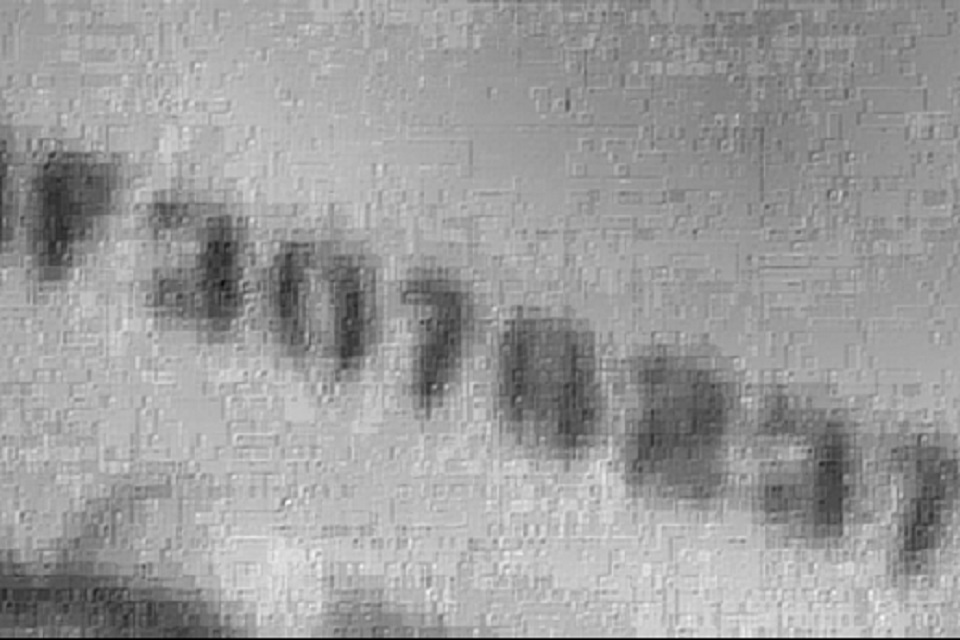
Image is super resolution

Comparison between original frame (top left), enhanced frame by Method 1 (top right), enhanced frame by Method 2 (bottom left), and enhanced frame by Method 3 (bottom right).
Project
In-situ monitoring for waste packages
Benefits
CM&I is required to provide continued assurance that waste packages are evolving in line with the technical baseline and that the technical and strategic assumptions which underpin the safe to store case and disposability case remain valid.
Image enhancement will enable the general physical condition and identification numbers of packages to be monitored much more efficiently, significantly reducing the time required by operators.
Current Status
Ongoing with expected future work. Key technologies have been identified and evaluated and functional specifications are being prepared for crane mounted equipment to continue to evaluate emerging technologies.
Delivery Partners
University of Strathclyde, Game Changers
Contact Details
Alex Allen, email: technical.innovation@sellafieldsites.com
10.4 Ex-situ filter performance testing
Ex-situ Condition Monitoring and Inspection (monitoring packages once removed from the store) will be used to confirm waste packages are performing as expected through routine sampling of packages or through monitoring specific packages identified by in-situ CM&I.
Ex-situ CM&I will provide a greater quality of information but has a greater number of constraints than in-situ CM&I due to space and movement restrictions.
The key requirement for CM&I is the ability to be able view the overall general condition of the package, to determine its identification number, to identify marks or damage on the external surfaces, to check the physical condition and performance of installed filters, to establish the gases emanating as a guide to waste evolution and to see inside the waste packages to confirm waste and water levels.
A specific area of research this year has been the development of a prototype filter performance and gas analysis testing tool. This has been possible thanks to the development of a manually deployable version for monitoring filters on the SSB that will be used, pending treatment, for interim storage of fuel and wastes from the legacy ponds at Sellafield.
The SSB filter tester uses a fixed volume of pressurised gas to identify if there has been any degradation during interim storage. Laboratory tests have demonstrated that the filter tester can conservatively detect if a filter has blocked.
This information can be ascertained during interim storage to demonstrate that packages are being stored safely.
The next step is to evaluate whether the filter tester can also measure a degradation in the filter performance.
Based on these successful results, the filter tester has been converted for remote deployment (via robot arm) onto much larger filters. The test works by applying a small pressure across the filter (positive/negative/rate of diffusion) to allow assessment of filter performance.
The ability to sample gases, such as hydrogen, from within the containers has also been included to demonstrate how the wastes are evolving throughout interim storage.
This remotely deployed filter test device will enable ex-situ testing to be undertaken with no risk to operators. This will ensure that an explosive atmosphere will not develop inside the packages and the filters continue to perform as expected.

Illustration of the filter performance testing system.
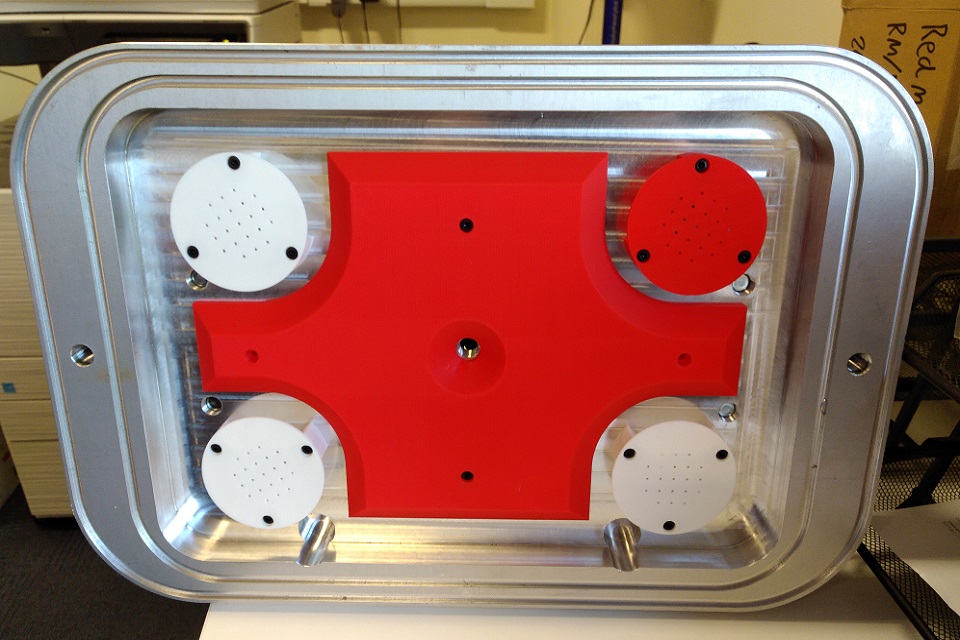
Illustration of the testing head
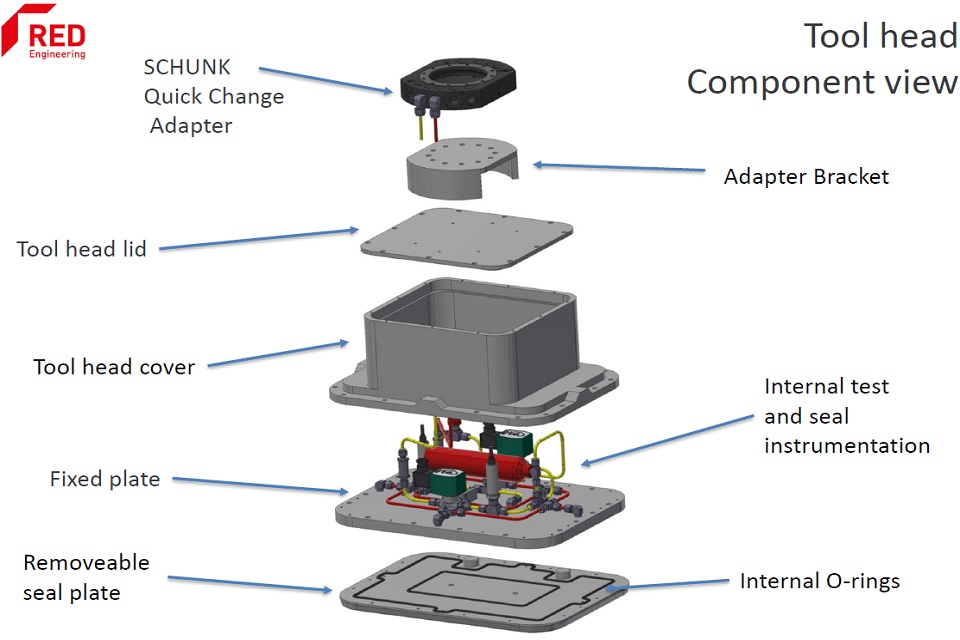
The prototype filter pressure testing head – deployed on a single filter, and the box rotated to test each filter in sequence.
Project
Development of ex-situ monitoring for waste packages
Benefits
Ex-situ filter performance and gas analysis testing will provide continued assurance that the waste packages are evolving in line with the technical baseline and will reduce the risk to operators through using remote deployment.
This will ensure that the technical and strategic assumptions that underpin the safe to store case and disposability case remain valid.
Current Status
Work is ongoing and the next steps are to evaluate the performance of the filter testing and hydrogen monitoring prototypes to determine the most appropriate gas analysis instrumentation.
Delivery Partners
National Nuclear Laboratory, REACT Engineering, RED Engineering, University of Bristol
Contact Details
Alex Allen, email: technical.innovation@sellafieldsites
10.5 OneNDA collaboration on fuel disposal
A large programme of work is ongoing, in collaboration with NDA and Radioactive Waste Management (RWM), to assess the lifecycle management options for metallic uranic fuel and the impact of these upon the GDF concept design and our strategy.
The aim of this programme is to find the optimal method for conditioning and disposal of all metallic uranic fuel (total inventory of over 500 tonnes) as efficiently and safely as possible.
An opportunity has been identified to dispose of the material as Low Heat Generating Waste (LHGW), rather than as High
Heat Generating Waste, which would minimise the number and complexity of management steps required with potential reductions in the volume of primary and secondary wastes.
The current strategy is to use SSBs as a buffer storage container, which supports prompt risk reduction and allows time to develop lifecycle management opportunities.
Two credible options have been identified using the LHGW waste management route:
- Inorganic encapsulation – After a period of buffer storage, the fuel materials would be removed from the SSB and flood-grouted within a 3m3 box using the existing Box Encapsulation Plant. The boxes would then be stored at the Sellafield site until the appropriate time to transfer to a GDF
- Direct disposal in SSB – SSBs containing fuel materials would be retrieved from buffer storage and transferred to a finishing plant, which would add some form of filler material to the boxes before onward transfer to a GDF Alternatively, if it can be demonstrated that filler material is not necessary, the SSBs would be consigned directly to a GDF with no further treatment
Work has been undertaken to assess the feasibility of using a SSB as a disposal container and also the impact of increasing the amount of time allowed for buffer storage of SSBs through waste evolution assessments.
This will help with determining whether LHGW disposal is acceptable and will provide additional time to develop the case for the disposal options and the GDF concept design.
The development of the fuel disposal options will inform the lifecycle analysis and will identify the potential benefits of changing the management strategy for this difficult waste feed. By working closely with RWM, we can identify if these options provide an overall benefit to NDA.

Schematic of a self-shielded box
Project
Enterprise uranic fuel programme
Benefits
This project has the potential to significantly reduce the cost of fuel disposal by cutting the number of waste containers that are sent to the GDF. As such, the amount of secondary wastes could be much lower, which in turn would decrease non-nuclear environmental emissions, as well as lowering the risks to worker health and safety.
In addition, it will enable the existing buffer storage and treatment infrastructure to be used with the associated cost and sustainability benefits.
Current Status
Ongoing work with RWM to review GDF operational and post closure issues with modelling to underpin waste evolution and the performance of the waste packages.
Delivery Partners
Radioactive Waste Management, Nuclear Decommissioning Authority, NSG Environmental Ltd, National Nuclear Laboratory, REACT Engineering
Contact Details
Nick Atherton, email: technical.innovation@sellafieldsites.com
10.6 Settling aids for effluent treatment
The retrieval of solid radioactive waste from legacy wet storage silos at Sellafield will generate effluent. This must be treated in the SIXEP effluent treatment plant prior to discharge into the sea.
There is a risk that retrieving sludge waste will release such high levels of slow settling radioactive particles that they cannot be treated. This would bring operations to a halt.
Settling aids are chemicals widely used in the water treatment industry which encourage particles to aggregate and settle. The R&D process to assess the performance and suitability of settling aids was completed over 3 years in 2 phases.
The first phase was to identify products that are effective at promoting settling. A range of commercially available chemicals were screened on inactive simulant material and effective ones were tested further to determine the required concentrations.
The second phase of the trials was to demonstrate that settling aids did not have a detrimental effect on effluent treatment or on the retrieval and disposal of the sludge.
This confirmed that:
- The settling aids had no significant effect on sand bed filtration or on ion exchange to remove Cs-137 and Sr-90 during effluent treatment.
- The sludge agglomeration caused by settling aids and sludge disposability in cementitious grout were tested and found to be manageable.
This R&D programme has demonstrated the benefit and suitability of using settling aids to minimise downtime in retrieval operations and work is underway to deploy them on the plant.
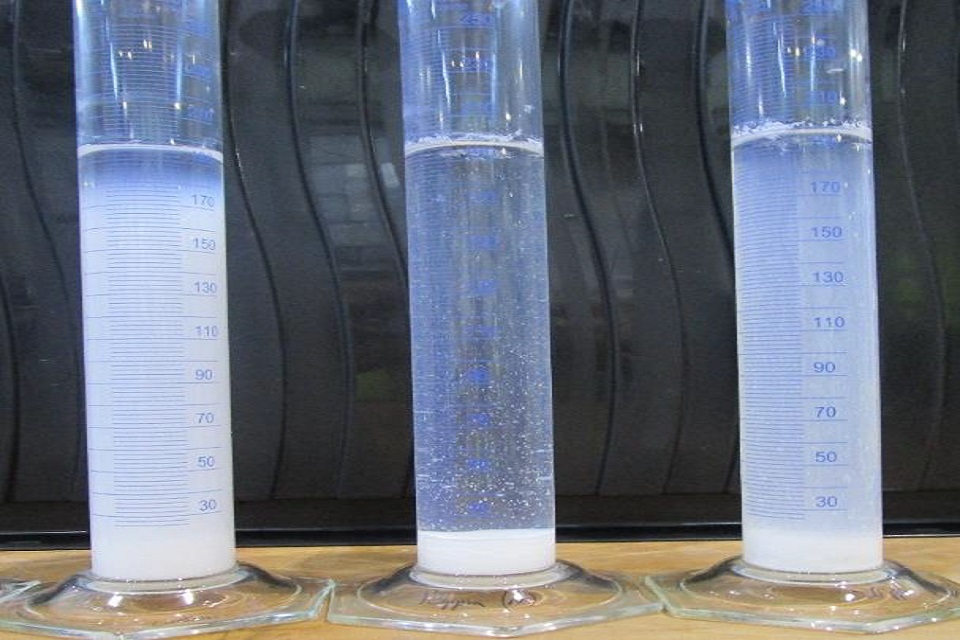
Settling aid tests after 24 hours: Left cylinder – Control (no settling aid). Middle cylinder – Effective dosing Right cylinder – Partial settling / overdosing.
Project
Legacy silo effluent treatment
Benefits
Settling aids provide an option for keeping hazard reduction operations going should the process of retrieving the waste increase the level of radioactive particles in the effluent beyond the level that can be treated in the SIXEP effluent treatment plant.
If the effluent can’t be treated, operations stop; potentially for several weeks. Continued operations mean continued delivery of the hazard and risk reduction mission and would avoid costs of >£1 million/week from halting operations.
Current Status
The decision has been taken to deploy settling aids and an engineering project has been initiated to install the plant modifications required to do so. This is being supported by additional R&D to support the plant design.
Delivery Partners
National Nuclear Laboratory
Contact Details
Bruce Rigby, email: technical.innovation@sellafieldsites.com
10.7 Microbiological characterisation of ponds
The nuclear waste stored in legacy fuel storage ponds is currently being retrieved and transferred to safe modern containment for long-term storage prior to disposal.
The legacy ponds are open to the atmosphere and are subject to seasonal blooms of algae lasting many weeks.
These lead to loss of visibility, which in recent years had reduced the number of days available for waste retrieval operations.
The task was to identify the microbiological species responsible for the blooms to understand how they can be effectively controlled. The goal was to establish the capability to routinely analyse samples of pondwater.
The first challenge was the extraction of DNA from organisms present in radioactive pondwater in an active laboratory on site.
The extracted material was then transferred to an academic laboratory for sequencing. The species were identified by comparison with published databases.
This was accomplished through a PhD project. The capability for DNA extraction was transferred to the industry through a post-doctoral research project, with the researcher spending time working on site.
Between 2018 and 2020, visibility had been controlled effectively using commercially available ultrasonic transmitters. However, in 2021 this stopped being effective.
Applying the techniques to pond water samples taken during the bloom demonstrated conclusively that there had been a change in the dominant species present.
This showed the need for a more responsive control strategy to maintain visibility in the ponds, informed by knowledge of the microbiological community.
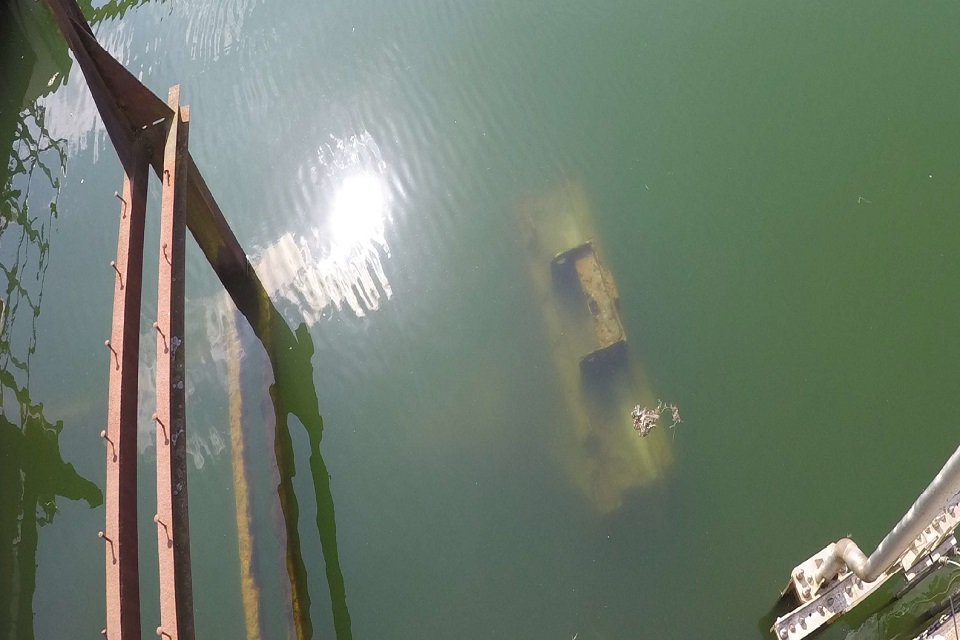
Intense bloom with no visibility at depth

Clear visibility of pond inventory
Project
Effluent waste retrieval operations
Benefits
Each day of operations stopped by poor visibility delays the reduction of hazard and risk in a legacy facility and incurs a cost of approximately £50k.
Current Status
Routine sampling has been implemented to identify the dominant microbiological species present in legacy ponds.
The next phase of the project is to upgrade the control strategy to make the system more responsive to changes in the pond flora and maintain visibility in the ponds for retrieval operations.
The technique is being rolled out to other open fuel storage ponds on the Sellafield site.
Delivery Partners
EPSRC, National Nuclear Laboratory and the University of Manchester
Contact Details
Peter Jenkinson, email: technical.innovation@sellafieldsites.com
James Hawco - Technical specialist, Sellafield Ltd
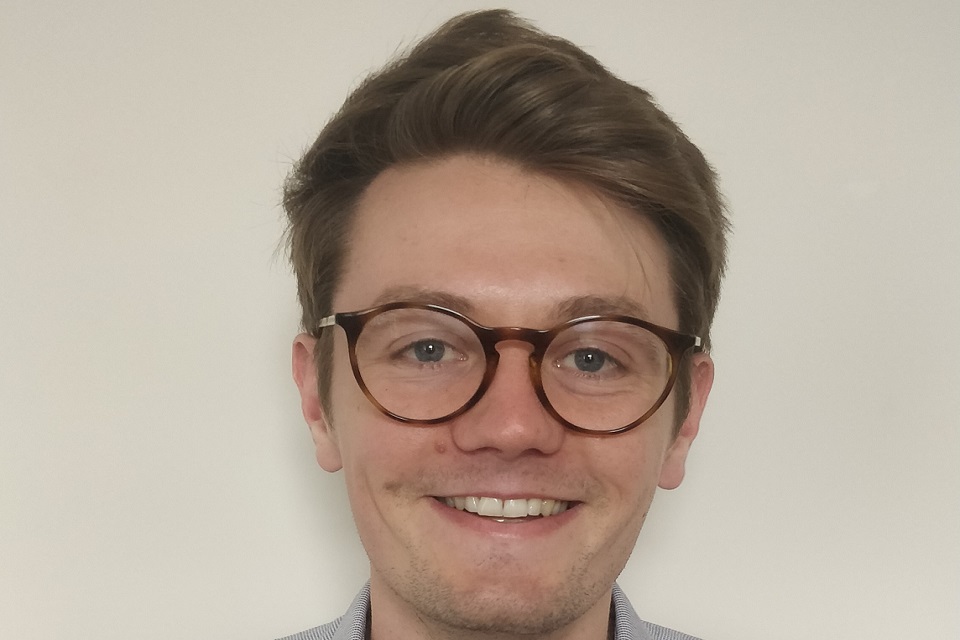
Technical specialist James Hawco studied Applied Chemistry with Chemical Engineering at the University of Strathclyde and then joined the 2-year nuclear graduates programme sponsored by Sellafield Ltd.
The nuclear graduates programme gave James the opportunity to try lots of different roles across the nuclear industry, including spending time with Sellafield Ltd, Arup, Magnox Berkeley and NNB GenCo to support Hinkley Point C.
After successfully completing the programme, James joined the retrievals team in September 2020.
Here his work is focused in two distinct areas: interim storage solutions for high active waste and effluent modelling and flow sheeting.
Both areas offer a degree of variety, from safety assessments for fuel in storage containers, considering safety measures and condition monitoring and inspection requirements to modelling effluent flow in order to predict the requirements and better plan the retrievals schedule.
Currently working towards his Chartership within the Institute of Chemical Engineering, James has been able to apply innovative thinking to his work during the past year, working on digital models of effluent flows on the site to identify and find solutions for issues.
He has also been able to work closely with the National Nuclear Laboratory (NNL) to progress work on effluent modelling.
It’s exciting to be involved in developing innovative solutions to the unique challenges that exist at Sellafield.
Ian Stokes - Technical specialist radioactive wastes, Sellafield Ltd
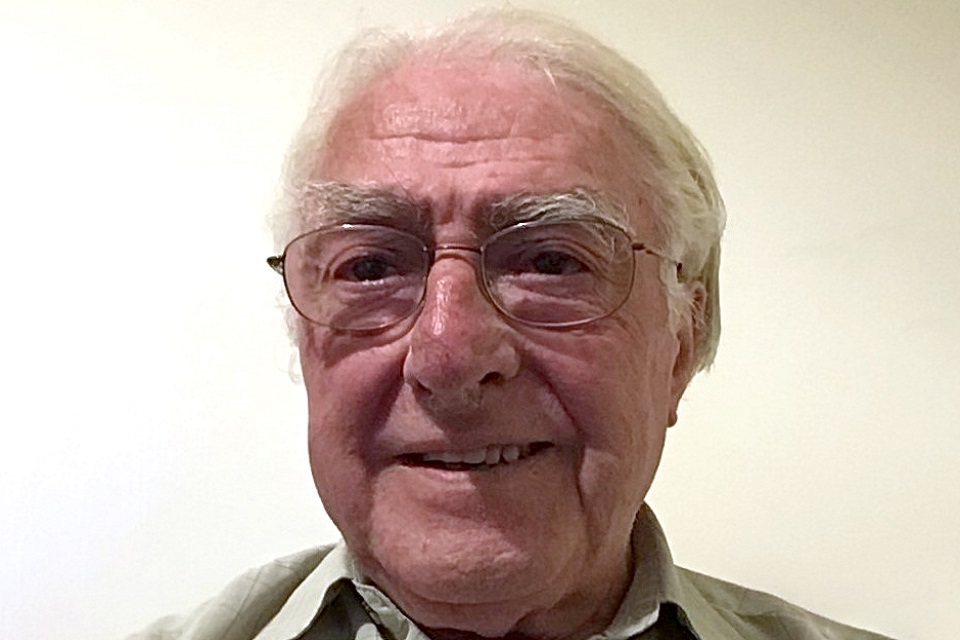
During his impressive 60-year career, technical specialist Ian Stokes has seen at first-hand, the extent of the development and growth of the Sellafield site.
Ian has a unique, unrivalled knowledge of ILW characteristics and effluent treatment at Sellafield.
He was involved in sampling, characterising active Magnox swarf samples taken from FGMSP on route to MSSS. He was also engaged in similar work on samples taken from MSSS to support waste retrieval and process development.
As such, he has had an integral role in the multiple changes to the MSSS retrieval and treatment process since 1980.
Ian’s extensive insight into the MSSS plant is invaluable in supporting current retrievals activities. For example, his expert knowledge of the types and quantity of material that were carried over into the MSSS is essential in order to understand and assess how it may affect retrievals operations.
His career in the nuclear industry began in 1960 at UKAEA, Harwell, as a technician, while at the same time studying Chemistry on a day-release scheme. At Harwell, Ian carried out small-scale active trials using FGMSP discharge liquor to select appropriate ion exchange materials for use in the SIXEP plant.
He also operated two trace active pilot plants used to develop and prove the SIXEP process, which is still working as predicted today.
In order to continue his work on waste treatment, Ian moved to Sellafield Ltd (formerly Windscale) in 1980. Since then, he has worked on all aspects of waste treatment and sludge processing, including active testing of the Magnox swarf encapsulation process that is currently used in the Magnox Encapsulation Plant (MEP).
It’s important that we learn from the past to enable us to solve current issues, and not try to re-invent the wheel.
Bruce Rigby - Senior research manager for retrievals effluents team, Sellafield Ltd
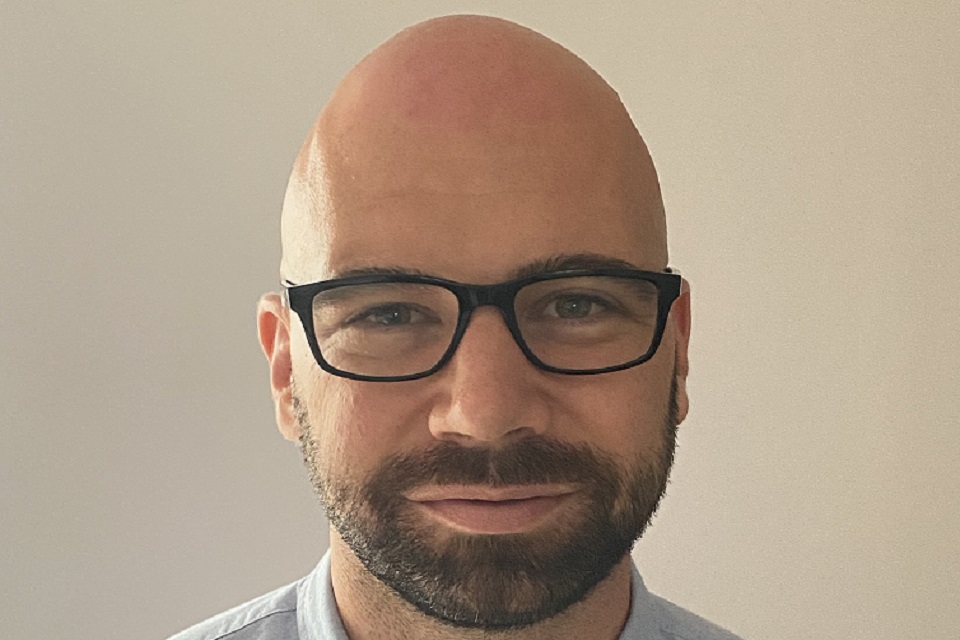
Having worked “both sides of the fence” in both the supply chain and with Sellafield Ltd, Bruce Rigby has a wealth of experience to share with his colleagues and the wider enterprise.
With a degree in Environmental Chemistry from the University of Leeds and a Masters in Geochemistry, gained at Newcastle University,
Bruce first joined the graduate training scheme at NNL in 2009, to work on contaminated land and waste assessment, before working for a further 2 years in the effluent and environmental chemistry team, delivering R&D research projects for a variety of customers, including the SIXEP and FGMSP programmes within Sellafield Ltd and elsewhere in the UK nuclear industry.
He then moved over to Sellafield Ltd in 2013 to join the FGMSP programme technical team during the ramp-up and transition into routine solid waste retrievals operations from the facility.
This role then expanded to the second legacy pond, following the merger of the two programmes.
Bruce now manages the retrievals effluent chemistry team and has responsibility for the coordination of the effluents R&D portfolio, which covers programmes of research aligned with both the legacy ponds and legacy silos.
The focus of the research is to develop a management approach for aqueous waste, which balances high hazard and risk reduction with overall BAT and ALARP.
He enjoys working collaboratively with his colleagues across the enterprise and within the supply chain to deliver effective solutions for the business.
It’s great to work with like-minded individuals who are bought into our mission and have pride in what they do.
11. Remediation
The Remediation value stream is responsible for the clean-up of nuclear and non- nuclear facilities across the Sellafield site with the R&D programme focusing on:
- Characterisation, POCO and decontamination of facilities
- Forecasting and modelling to support decommissioning planning
- Enablers such as access to facilities, deployment platforms, containment systems and operator working conditions
- Tools and techniques for the removal of plant and equipment
- Surveillance and maintenance and care and maintenance tools and techniques
- A range of waste processing technologies for waste treatment and conditioning
- Waste transfer, handling, storage and export
- Developments in demolition techniques
- Land remediation technologies
- Waste disposal and records
The remediation capability development team is responsible for identifying new technologies, supporting innovation in the supply chain, developing and industrialising technologies and techniques and delivering active demonstrations of technology, systems and facilities.
This is achieved through a structured R&D strategy for each programme area (Alpha, Beta Gamma and Waste).
11.1 Curieosity platform
“Curieosity” is a ground-based robotic platform developed in collaboration with our Radiometric Systems Group (RSG) team and RED Engineering.
The platform is a modified off-the-shelf ‘Jackal’ ROV from Clearpath Robotics and the payload is typically the VCADS radiometric system, developed by RSG and mounted on a pan/tilt unit.
The purpose of this system is to deploy improved characterisation tools in difficult to reach areas or where using employees risks exposing the workforce to high levels of radiation.
Its design allows for easy integration of alternative surveying tools and the ROV can navigate around and over small obstacles with communication via a tether to avoid wireless issues.
The platform was deployed in the Remediation Active Demonstration environment on the Sellafield site in May 2021.
Curieosity was first driven around the maintenance corridors of the plant to identify the areas of most interest, based on elevated dose rate readings.
An automatic VCADS scan was then performed to identify the source of the elevated readings, which was processed in-situ to produce a visual representation of hotspots.
The demonstration was successful, proving the platform’s ability to remotely characterise plant areas in an efficient manner, providing more detailed radiometric information when compared to standard surveys.
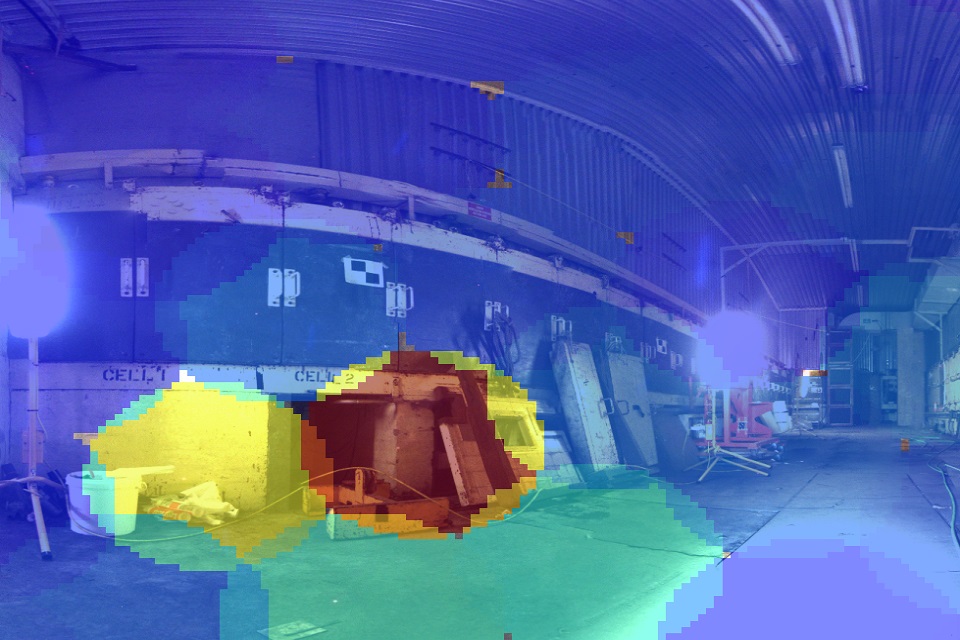
Results of a ‘broad scan’ (1.) and ‘narrow scan’(2.), indicating the location of elevated readings. This level of data post processing can be achieved in-situ giving the operators instant feedback.
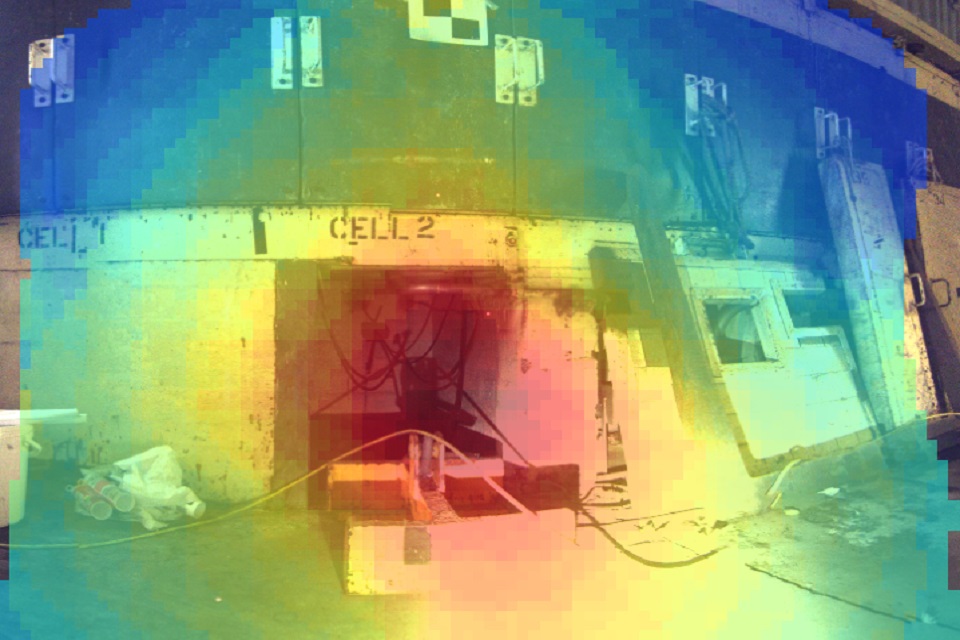
Results of a ‘broad scan’ (1.) and ‘narrow scan’(2.), indicating the location of elevated readings. This level of data post processing can be achieved in-situ giving the operators instant feedback.
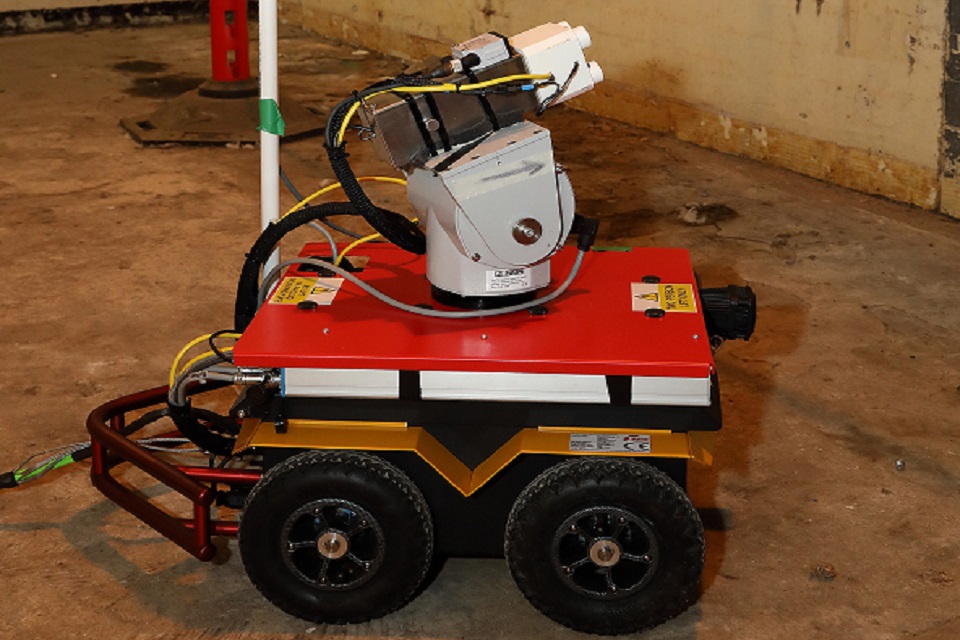
Curieosity ground based robot deployed in active environment.
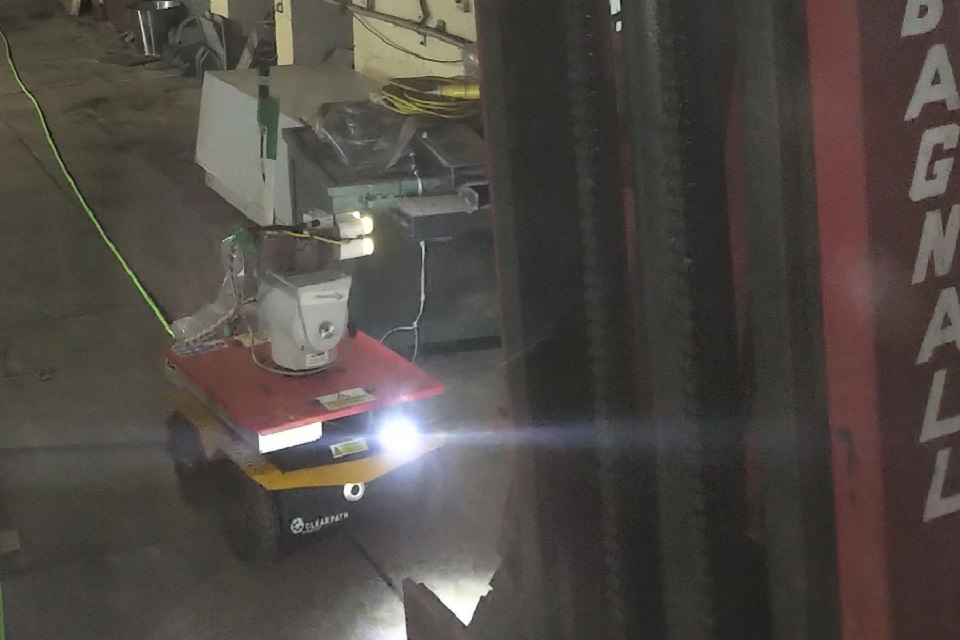
Curieosity surveying the area
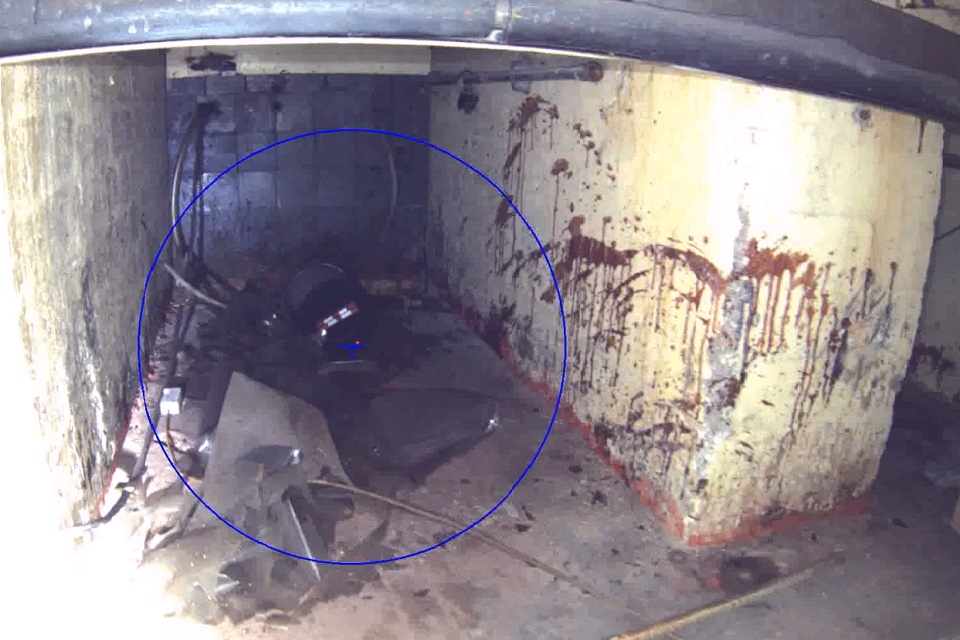
View from VCADS camera showing waste under one of the cells
Project
Remote deployment of sensors
Benefits
The system provides in-house capability to deploy sensors and collect characterisation information remotely, without the need for people to enter hazardous environments.
Current Status
The system is now available for deployment across the site, reducing the need for people to enter hazardous environments.
Delivery Partners
RED Engineering Ltd, Sellafield Ltd’s Radiometric Systems Group
Contact Details
Eryk Ryzko or Graeme Rhodes, email: technical.innovation@sellafieldsites.com
11.2 Skip size reduction facility (SSRF)
The Sellafield site is currently constrained by its limited options for handling and storage of large ILW items.
Therefore, size reduction of ILW contaminated items, such as legacy Magnox skips, is required to maximise the packing efficiency of the waste sent to higher activity storage facilities.
The SSRF active demonstrator will use Commercial Off-The-Shelf (COTS) industrial robot systems to automatically reduce and re-pack legacy Magnox skips.
This project builds on experience gained from Hinkley Point of an automated robotic laser cutting module system to reduce development timescales at Sellafield. The system can automatically cut and pack 2 skips to fit inside a third.
A phase of active demonstrations will take place in order to deliver the pre-defined learning objectives and to enable future decisions on the capability to be made.
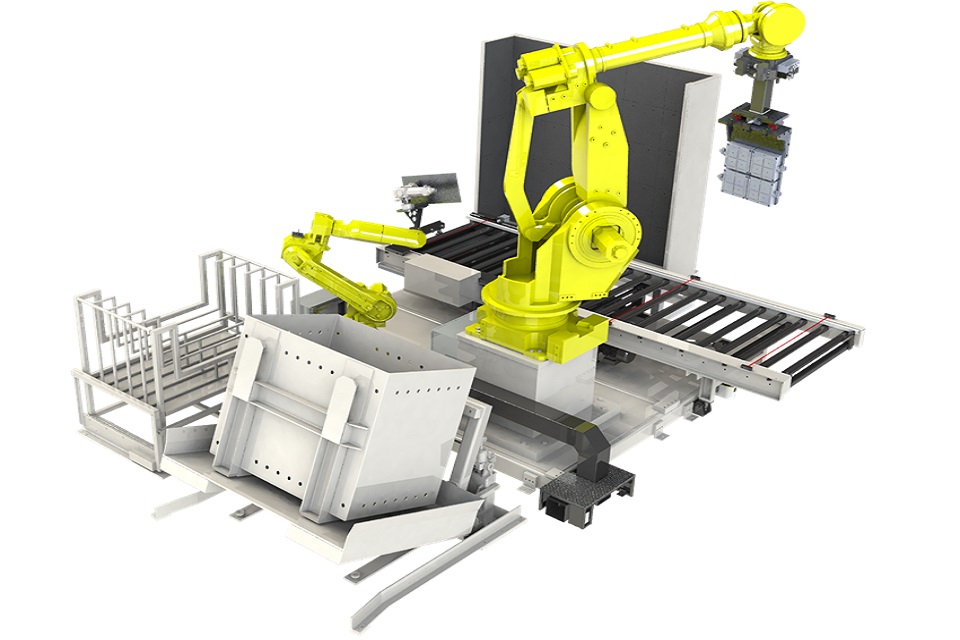
Schematic design of the SSRF

Images of inactive trials in the facility

Images of inactive trials in the facility
Project
Skip size reduction
Benefits
The SSRF will remove human operators as much as possible from the nuclear and conventional hazards associated with size reducing and packing intermediate level contaminated waste.
Size reduction and packing of skips in this way enables the volume of waste to be reduced by 2/3, benefiting interim storage arrangements.
Current Status
This project is ongoing with active trials planned from 2021 to 2023.
Delivery Partners
Integrated Decommissioning Solutions (IDS), Cyan Tec Systems Ltd., Lasermet Ltd., Taylor Kightley Engineering Ltd.
Contact Details
James Moore, email: technical.innovation@sellafieldsites.com
11.3 Alpha Active Demonstrator (AAD)
Gloveboxes used for research, development and operations that have come to the end of their life will be decommissioned as part of the site’s clean-up programme.
Many of these are contaminated with alpha-bearing material and current decommissioning plans include manual techniques which are often hazardous and time consuming.
There is a driver to address this challenge using alternative technologies to deliver safer, more efficient decommissioning at a lower cost.
A facility for reducing the size of gloveboxes has been built in an existing laboratory on the Sellafield site. This self- contained laser cutting facility will reduce the risk to operators during remote size reduction of alpha contaminated gloveboxes.
This includes a laser cutting system mounted on a six degrees of freedom robotic arm with recovery of waste and minimum human intervention.
Inactive trials have now been completed, with active tests planned for early 2022.
A phase of active demonstrations will take place in order to deliver the pre-defined learning objectives and to enable future decisions on the capability to be made.
The AAD project will determine whether to scale up and build a Central Breakdown Facility or whether another Engineered Drum Store or Waste Treatment Complex is required to house additional waste from the decommissioning of alpha contaminated gloveboxes.

Images of inactive trials in the facility
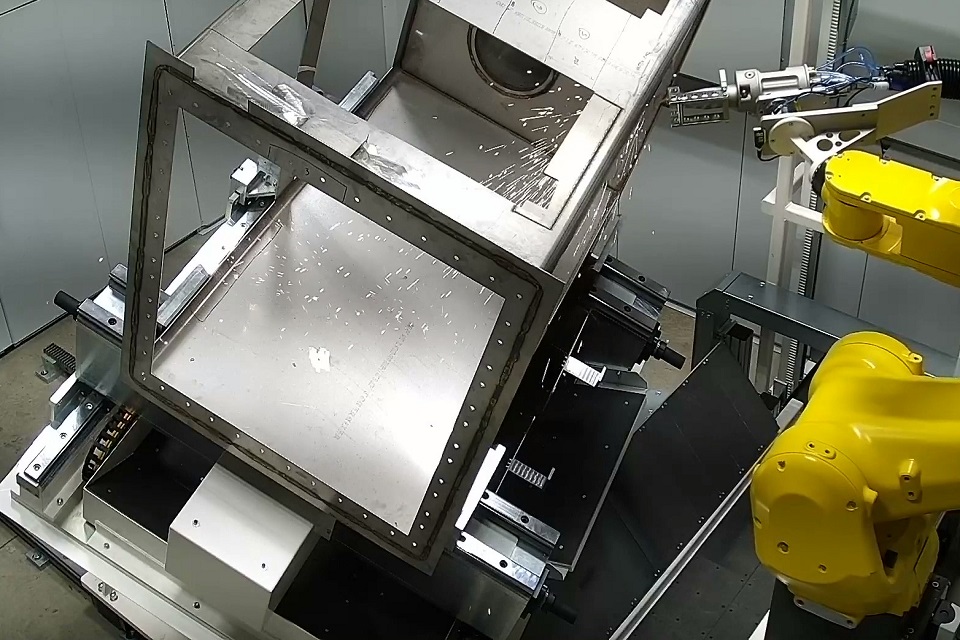
Images of inactive trials in the facility
Project
Alpha active demonstrator
Benefits
The project aims to develop a safer, semi-remote process for the size reduction of alpha contaminated items that is more efficient when compared to manual operations.
This is expected to have safety, cost and schedule benefits once the technology is proven and optimised.
Current Status
Initial testing of the facility is ongoing with active testing planned for early 2022.
Delivery Partners
Integrated Decommissioning Solutions (IDS), Cyan Tec Systems Ltd., Lasermet Ltd., Taylor Kightley Engineering Ltd.
Contact Details
Alan Cardwell, email: technical.innovation@sellafieldsites.com
11.4 Decommissioning Waste Services Partnership (DWSP)
There are some larger items our facilities categorised as ILW but for which the level of radioactivity means that they can be handled without the need for special remote operations. This is called Contact Handleable ILW (CHILW) or discrete items.
The removal of high hazard wastes from legacy facilities is constrained by the current limited options for handling items of this nature.
As more plants are decommissioned, a capability is needed to process discrete items in accordance with Best Available Techniques (BAT) to generate forms of waste suitable for storage and disposal and to reduce the burden on higher activity storage facilities.
The DWSP project has been initiated to develop an active demonstration facility with the capability to process large items that fall into this category, using First Generation Magnox Storage Pond (FGMSP) wastes as the feedstock.
This facility will provide better characterisation of larger waste items in a lower background area, size reduction and liquor removal. There is currently no waste route for items of this nature and level of activity.
All operations will be performed within a “Permacon” containment and size reduction will be carried out with diamond wire cutting technology.
The active demonstrator has been installed on the Sellafield site and initial trials are planned for early 2022.
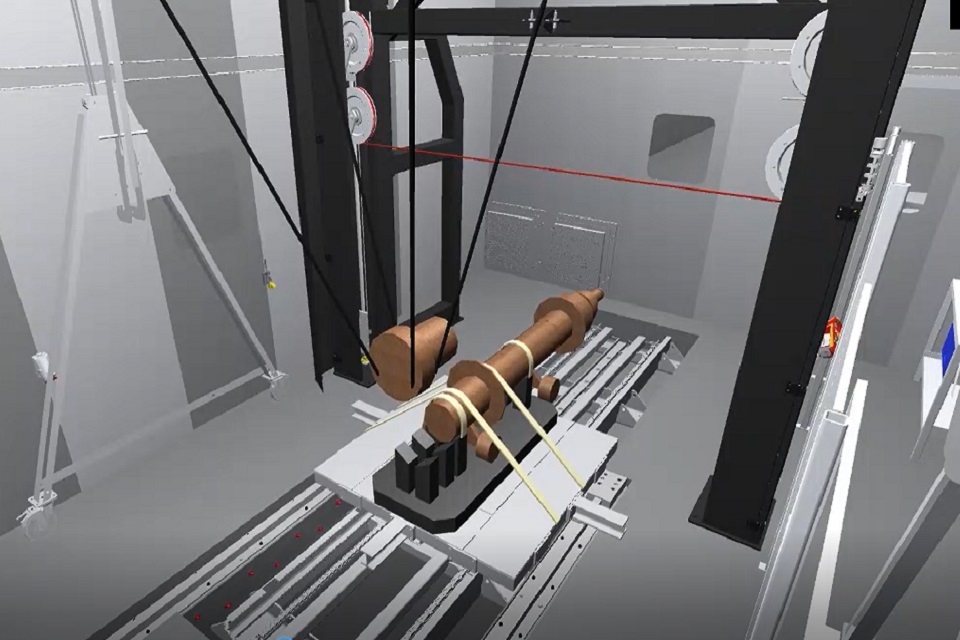
Representation of the facility with diamond wire cutting technology to reduce size of large items

Active size reduction demonstration facility prior to the Permacon containment being installed
Project
Decommissioning Waste Services Partnership
Benefits
The project aims to understand the requirements for a large scale CHILW handling facility and to help in the decision making process for it. The demonstration facility will provide characterisation and size reduction in a way that is currently not possible and in the short-term, it will enable the retrievals of legacy wastes to continue.
Current Status
This project is ongoing with active demonstration to begin early 2022 and run until May 2023.
Delivery Partners
Integrated Decommissioning Solutions (IDS), BD Nuclear Ltd., Pajarito Scientific Corporation
Contact Details
Debbie Wilson, email: technical.innovation@sellafieldsites.com
11.5 LongOps Project
LongOps is a £12 million UK-Japanese robotics project that will develop next generation digital mock-ups and long-reach robotic arms, which will be applied to both fusion research and to decommissioning nuclear facilities in Japan and the UK.
This 3.5 year research collaboration is funded equally by UKRI, the NDA and Tokyo Electric Power Company (TEPCO).
The project aims to develop Long Reach Manipulators for use in highly shielded hazardous environments and a next- generation digital mock-up to train operators and control the system.
The programme is based around real-life use cases from Sellafield Ltd, Fukushima Daiichi and JET and is being led by UKAEA’s RACE department.
We are acting as an end-user and intelligent customer for the developed technology. The first task within this project was deciding the best use case for the project on the Sellafield site.
Through a stakeholder optioneering process, it was decided that Windscale Pile 1 would be the most beneficial as it aligns with the requirements of the LongOps programme, due to the novel and complex challenges associated with it.
Once a use case had been selected, two workshops were undertaken with our subject matter experts and engineers from UKAEA. The first workshop identified the intricacies of the use case and high level potential solutions.
The second workshop considered the finer details of our operations and possible responses for the challenges that may exist.
UKAEA now understand the issues faced within Pile 1 and is developing solutions. The digital mock-up technology’s current state has been demonstrated and we are excited to work on it further.

Schematic of long reach manipulator for Windscale use case
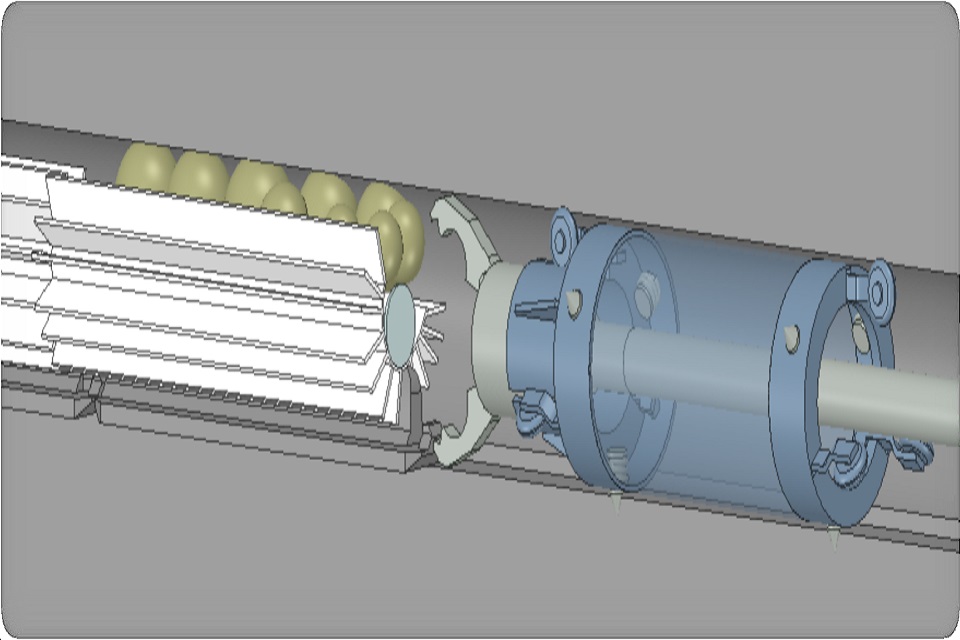
Schematic of long reach manipulator for Windscale use case
Project
LongOps project
Benefits
The use of digital mock-ups will be invaluable in the near future, for providing opportunities to safely train operators and inform stakeholders and decision-makers. Enabling safer, faster and better value decommissioning in the long-term.
Working alongside UKAEA and TEPCO provides a brilliant platform for innovation and lays the foundations for future collaboration.
Current Status
LongOps will be ongoing for several years from now. The second tranche of workshops have been completed. RACE is now working on developing engineering solutions to our use case, both in the form of a digital mock-up and the manipulators that may be used in the near future in the pile.
We will continue to support their work as an end-user and will guide the development to ensure the compatibility of the deliverables.
Delivery Partners
UKAEA RACE, UKRI, NDA, TEPCO
Contact Details
David Procter, email: technical.innovation@sellafieldsites.com
11.6 Integrated Innovation in Nuclear Decommissioning (IIND)
The IIND competition was launched in early 2017, with the objective of encouraging the supply chain to innovate, collaborate and transfer cross-sector technologies into the nuclear market to solve a “grand challenge.”
Learning from previous innovation competitions, we were requested to steer the scope of the competition by identifying, specifying and bringing to life a decommissioning challenge which was timely, complex and diverse, with significant opportunity for a step- change where Robotics and Artificial Intelligence (RAI) could be part of the solution.
We selected the end-to-end decommissioning of reprocessing cells as the “challenge statement” to focus the competition. The aspiration was for:
- A transferable, integrated decommissioning toolkit that minimises the interface between the operator and the hazard, whilst aspiring for a ten-fold increase in productivity and reduction in lifecycle cost
The IIND competition sought integrated systems which were scalable and transferable and would ultimately lead to safer, faster, better value decommissioning for the future.
It is now in the third phase and working towards active demonstration on the Sellafield site.
Two consortia remain, each with highly developed and remotely capable operational decommissioning platforms.
- Barrnon consortium – Utilising a “Swiss army knife” approach comprising of two ROV’s, a large base vehicle with the ability to carry out a wide range of characterisation and size reduction operations on the ground and reaching up into the cell using a long reach telescopic boom
The main ROV is supported by a smaller waste transfer ROV that will be used to collect and transfer size reduced waste items from within the waste export area.
- Jacobs consortium – Adopting a “toolbox” approach using a number of smaller wireless, tracked ROV platforms to deploy a range of interchangeable “backpacks” to deliver the characterisation and decommissioning capabilities on the ground floor
This will be supplemented with a through wall mast fitted with a robot arm to deliver the characterisation and decommissioning at height within the cell.

Barrnon vehicle - Collapsed for cell entry
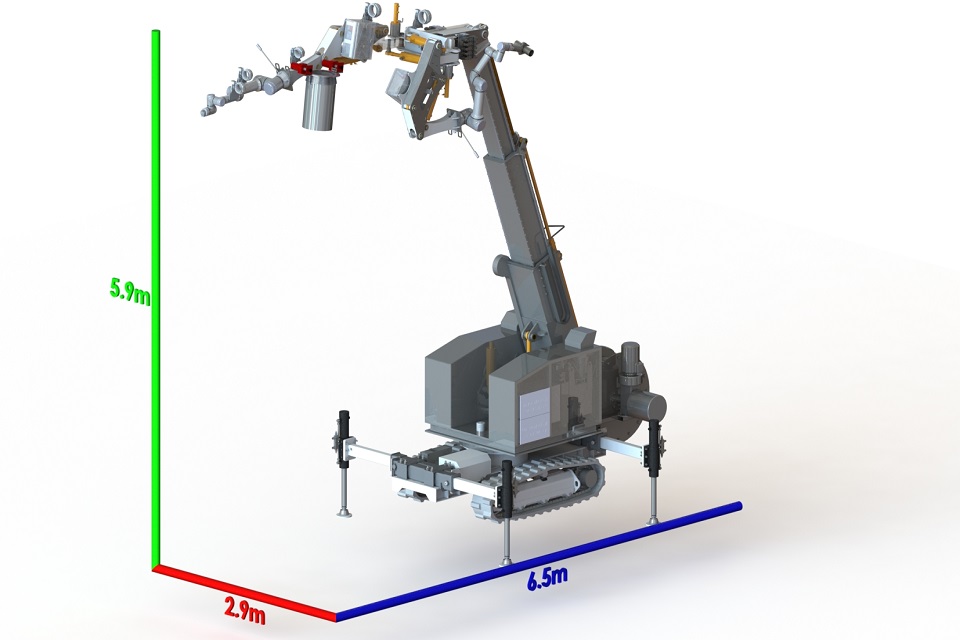
Barrnon vehicle - Extended for remote operation
Project
IIND competition
Benefits
The innovative products that have been developed through this competition could provide a major cost saving in decommissioning activities by reducing uncertainty, enabling greater transferability (plug and play) and developing spin out technology/systems to address other challenges.
This approach maximises the opportunity for academics, SMEs and larger organisations to collaborate and integrate technology components, whilst also encouraging technology transfer from other sectors.
Current Status
The final detailed design phases are commencing on the 2 remaining platforms. Enabling work is ongoing to ensure the greatest chance of success in the active demonstrations when they commence.
Delivery Partners
Jacobs, Barrnon, NDA, UKRI
Contact Details
David Procter, email: technical.innovation@sellafieldsites.com
11.7 See it, sort it, store it
Building on the success of IIND, a ‘Sort and Segregate Nuclear Waste’ competition was launched in August 2020.
This competition is managed by Innovate UK, with £4.7 million NDA funding and Sellafield Ltd and Magnox Ltd as joint end-users.
The aim of the competition is to develop an autonomous and integrated toolkit to sort and segregate radioactive waste, generated by nuclear decommissioning activities, with optimised container loading.
This will reduce the level of waste requiring disposal, increase productivity, reduce costs and improve safety.
The competition is targeted at waste at the ILW-LLW boundary and includes metals, woods, plastics, hoses, asbestos, rubble, graphite and various other types.
The following success factors should be achieved for the project:
- The process should require no manual intervention for the sorting, segregation and repackaging of the wastes so that no operators are required to use manipulators to move, segregate and package wastes
- The process should be more efficient than manual sorting and segregation
- The decision whether the item or part of the item is ILW or LLW can be made without human intervention
- Radiological properties are determined and recorded with enough accuracy that the data meets the requirements for onward processing or disposal; enabling more waste to be sent for recycling or treatment
- Most of the waste types can be automatically identified by the toolkit
- If there are any items that the toolkit cannot recognise or manage, these will be flagged by the system to the supervising operator
- Surface area and volume can be measured for items
- Waste is efficiently loaded into containers to minimise the overall number of containers required
In total, 47 applications were received, involving 74 different companies and organisations. In December 2020, these entries were shortlisted down to a final 14 which were taken through to the Phase 1 desk top feasibility study.
In July 2021, 5 finalists were selected to demonstrate their toolkits in an inactive demonstration in November 2022.
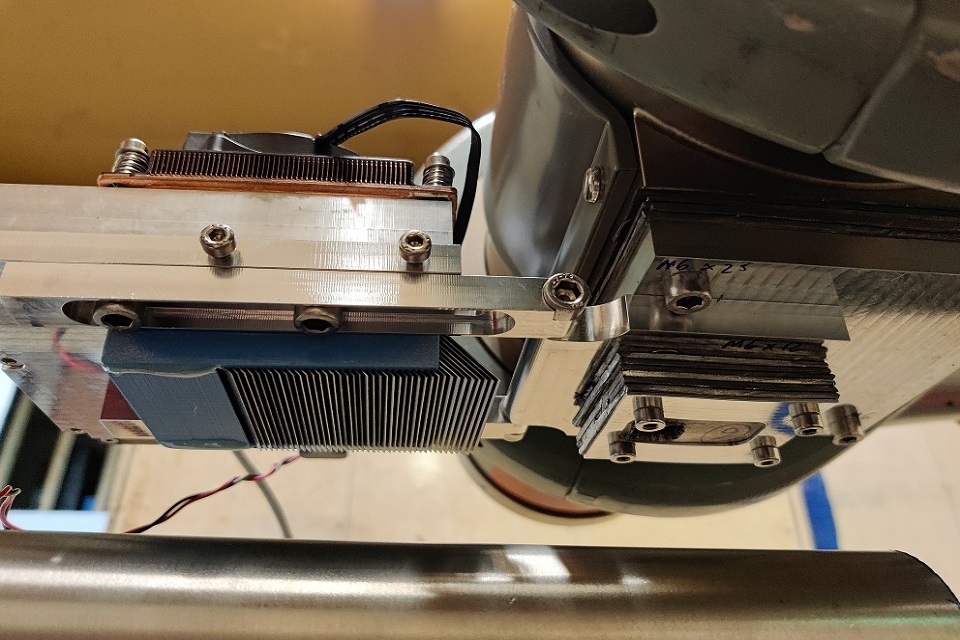
X-ray backscatter device located above metal pipe from two different views
Project
Sort and segregate nuclear waste competition
Benefits
This competition will identify and develop new innovative solutions to reduce the level of waste requiring disposal, increase productivity, reduce costs and improve safety.
This funding will upskill the supply chain to help us with future decommissioning requirements and will enable them to progress their technology to support future waste sorting and segregation.
Current Status
The desktop feasibility study (Phase 1) is complete and five finalists have been selected for Phase 2 to create their toolkit and undertake an inactive demonstration in November 2022.
Delivery Partners
Innovate UK, Knowledge Transfer Network (KTN) , Magnox Ltd, NDA
Contact Details
Hilary Royston-Bishop, email: echnical.innovation@sellafieldsites.com
11.8 Heels in vessels
The Sellafield site is currently embarking on long-term programme of decommissioning.
Historically, many of the operations involved chemical processing, within vessels and pipework that are contained within thickly shielded cells.
One of the key challenges to be faced during decommissioning relates to the dismantling of such redundant process vessels and associated pipework, which may still contain residual radioactive and/or hazardous liquors (heels) or solid deposits.
The ability to determine the location and quantity of these heels and residues is critical before decommissioning work can start.
The current approach relies on intrusive techniques that are costly, time-consuming, risk the spread of contamination and can generate secondary waste. Furthermore, they often require direct contact with the surface and/or access to both sides of the vessel.
A study was initiated in 2016 to identify potentially non-intrusive characterisation methods to detect liquor heels in vessels and pipes.
Unitive Design and Analysis was engaged through the Nuclear Innovation Exchange programme to investigate the use of X-ray backscatter techniques.
This was then progressed to the proof of concept stage through the Game Changers programme, after successful completion of a feasibility study.
A working system was developed that combined a portable X-ray tube with a high resolution, energy discrimination X-ray detector and advanced collimator geometries.
This was then tested on pipes of various size and shape to determine the capabilities of the system and understand its limitations.
The proof of concept was successfully demonstrated to our stakeholders at Responsive Ltd in June 2021. The system, developed as part of this project, can be deployed through a 6” penetration and is able to detect liquor levels as low as 1mm (up to 8 mm pipe thickness) or 2 mm for thicker pipes (8 – 12 mm.)
This innovative technique will enable heels to be detected in vessels without using intrusive techniques, which will significantly reduce the time, cost and risk associated with vessel decommissioning operations.
Project
Non-intrusive characterisation methods of vessels
Benefits
The X-ray backscatter technique has the potential to detect and quantify residual material (heels) in process vessels and pipework, without the need for intrusive characterisation.
Current Status
Further development work is required to fully understand the performance of the system in real plant deployment scenarios.
Delivery Partners
Unitive Design & Analysis, Game Changers
Contact Details
Eryk Ryzko, email: technical.innovation@sellafieldsites.com
11.9 Protecting the Nuclear Decommissioning Operator (PNDO)
Operator safety is paramount. Wherever possible, defence-in-depth is employed so there is more than one barrier to protect operators from exposure to both plutonium and other alpha emitting radionuclides. PPE is seen as the last barrier.
The ongoing use of PPE is inevitable and should be considered when identifying an improved approach for the future.
A competition was initiated through Innovate UK to seek out innovative and ambitious ideas to challenge current thinking on operator protection. The aim was to trial novel approaches and to work with suppliers to find more effective ways to enable operators, who carry out high hazard radiological tasks, to work faster, safer and cheaper, while being more comfortable in their environment.
Three winners were selected from 17 proposals.
ALARP Angel - REACT Engineering and Createc
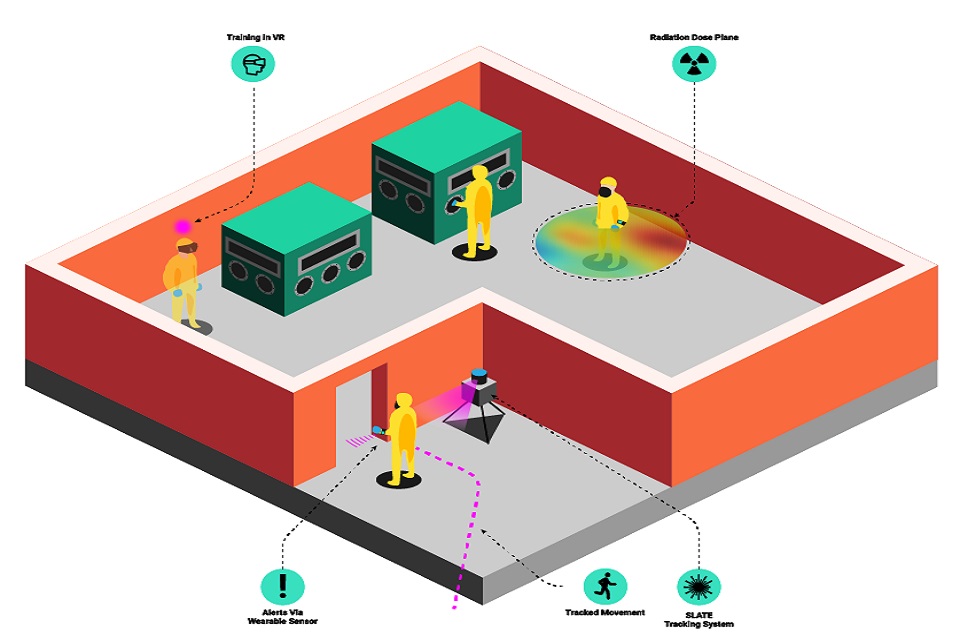
ALARP Angel
ALARP describes the expectation that risks to personnel shall be minimised where reasonably practicable or achievable.
As the life and wellbeing of people are the top priorities, then technologies that reduce the risk of harm are essential.
The ALARP Angel provides for the best possible “right first time” task preparation and rapid, fully informed decision making on the job, accounting for changes in the environment.
This is achieved by understanding the operating environment, providing automated warnings using live hazard data, tracking every operator to give a live readout of their exposure to location-specific hazards and using simulated 3D virtual reality model to learn and plan.
NuINSIGHT - NUVIA UK

NuINSIGHT
NuINSIGHT is a patent-pending Smart Personal Dosimetry (SPD) and Biometric Monitoring and Communications System.
It will protect decommissioning operators undertaking high hazard radiological tasks and, potentially, all monitored and classified workers, using an Electronic Personal Dosimeter (EPD).
By integrating a suite of innovative technologies, NuINSIGHT provides real-time measurement of operator dose uptake and heart rate and enables communication of information to the operator and supervisors via connected VR glasses.
NuINSIGHT can geolocate workers using pseudo-satellites (pictured), and by combining measured dose-rate and positional information, dose rate maps can be derived which can be used to plan future works and reduce exposure to operators in real time.
VRS training tool - Cineon Training and University of Exeter
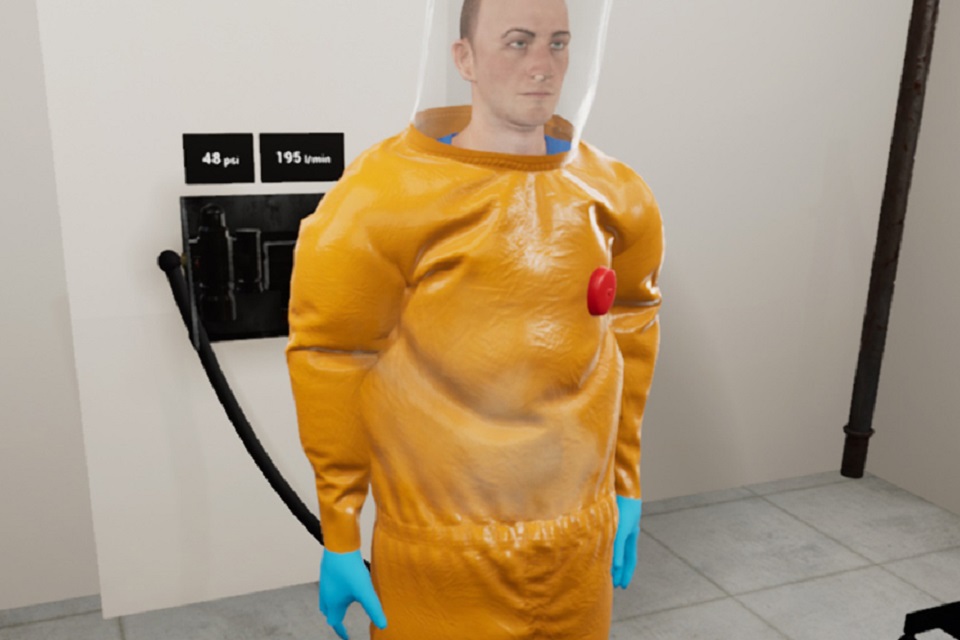
The Virtual Reality Simulation (VRS) training tool was created to train operators in procedures and processes relating to the use of PPE and working in Radiation Controlled Areas (RCAs).
Based on event learning, it enables trainees to practice in an immersive, high-fidelity, virtual environment. It is also designed to coach hazard perception behaviour, with accurate modelling of radiation fields and monitoring equipment to illustrate radiation protection principles.
It has since been further improved with intelligent eye-tracking that automatically tracks where a user is looking and can determine if they have understood the key information.
The simulated training can be replayed via a desktop interface for review by instructors and work planners.
11.10 Land-based robotics and Al roadmap
In order to effectively and efficiently co-ordinate land-based Robotics and Artificial Intelligence (RAI) developments across the Sellafield Enterprise, there is a need for a long-term roadmap.
Owing to the relatively slow adoption of new technologies and the relative immaturity of Artificial Intelligence (AI) and autonomous Systems in the nuclear sector, the roadmap is set over a 20-year timeframe.
The roadmap was produced by gathering information which was then considered and supplemented at 2 workshops attended by a range of subject matter experts and stakeholders.
- The first workshop established the ambitious vision statements that will drive the development of RAI. It then captured the market drivers and capabilities that will achieve the vision, before prioritising them to understand where resources should be focused
- The 2nd workshop was used to understand the technologies that will enable the development of RAI, both now and in the near future and how mature they are. This workshop confirmed where R&D should be focused to achieve the greatest return
The land-based RAI roadmap shows the line of site from vision through to technology via market drivers, key decisions, capabilities and major R&D programmes.
This roadmap will feed into an overall RAI roadmap, covering robotics and AI for Sellafield Ltd and, ultimately, for the NDA estate.
The combined detail held within the roadmaps will guide future RAI decision- making and will set a target to pursue.
The roadmaps will be updated as developments occur and the horizon changes to ensure they stay relevant and useful.

Land-based RAI 20-year Roadmap
Project
Robotics and artificial intelligence roadmap
Benefits
The production of a roadmap has set ambitious targets for the development of land-based RAI in remediation. This gives direction and guidance on where efforts should be focused to achieve targets more efficiently.
Current Status
The roadmap has reached a good level of maturity and is being shared with other nuclear licensees as a basis for similar projects elsewhere. The document is live and will be updated as and when required to ensure it remains current and valuable
Delivery Partners
Majority in-house with some input from Game Changers towards upcoming technologies.
Contact Details
Chris Hope or Yolande Smith, email: technical.innovation@sellafieldsites.com
Ryan Parker - Nuclear graduate programme member, Sellafield Ltd
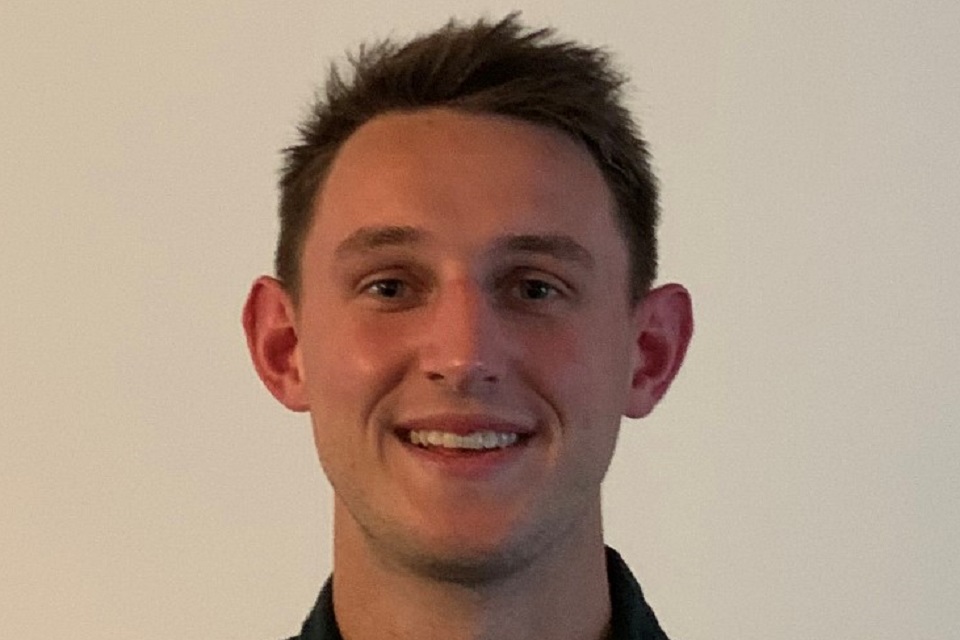
Ryan Parker joined the nuclear graduates programme after achieving a Master’s degree in Mechanical Engineering from Loughborough University. He is an associate member of the Institution of Mechanical Engineers (AMIMechE), and a Member of the Nuclear Institute (MNucI).
The nuclear graduates programme was designed and created by the NDA and is funded by organisations across the UK nuclear industry.
It lasts 2 years and graduates get the chance to undertake secondments across a range of UK nuclear companies with the potential to take an international secondment.
The remediation technical capability development team is Ryan’s first secondment on the programme, which he began in late 2020. This role involves the development of new capabilities for the Sellafield site by working with the supply chain and internal stakeholders.
Starting a new job remotely will always be something of a challenge but he was able to hit the ground running thanks to the support from the rest of the team.
Ryan has worked on a range of projects during this secondment, including the land-based RAI roadmap, IIND, LongOps and the demonstration of Boston Dynamics’ Spot the Dog robot.
His next secondment will be at UKAEA, where he will continue his work on the LongOps project and will support engineering design.
I have really enjoyed the variety of projects and interesting technologies that I have worked with and appreciate the support that I have been given by the rest of the team.
James Barker - Technical placement student, Sellafield Ltd
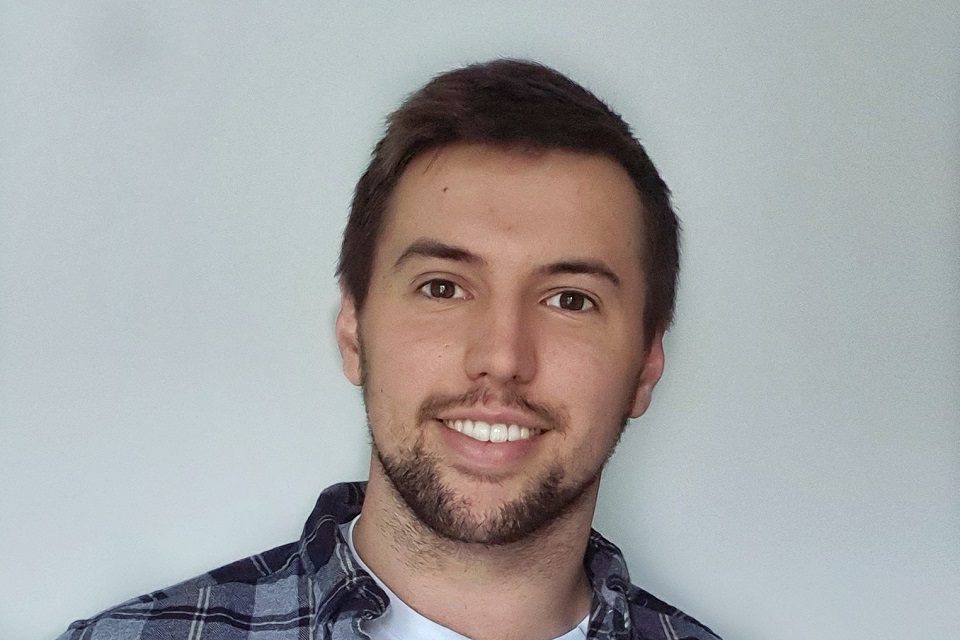
James Barker
Second year mechanical engineering student James Barker is currently working at Sellafield Ltd as a placement for his Master’s degree at Lancaster University.
He joined the remediation capability team less than a year ago in November 2020 and since then, he has been instrumental in exploring the potential applications for robotics at Sellafield, by working alongside key stakeholders and representatives from the supply chain to demonstrate new technologies and capabilities.
Aiming to gain as much experience and knowledge before he returns to university, student affiliate of IMechE James is conscious of the opportunity he has to work on projects which have been the first of their kind within the industry.
His main focus has been to lead the Spot the Dog robotics project.
Spot is an agile 4 legged (quadruped) robot. To date, we have only investigated the use of small wheeled and tracked land-based ROVs for deployment of characterisation sensors.
Whilst such platforms are proving to be beneficial at reducing time at risk for operators, deployments can be challenging if obstacles such as steps, cables, legacy waste or uneven surfaces are encountered.
James and the team are working to demonstrate how Spot offers the potential to overcome the limitations of small wheeled or tracked vehicles.
This has been a tremendous opportunity. Not only have I been able to work on new technologies and robotics but I have had the support of knowledgeable colleagues who have gone out of their way to help me during this placement.
Eryk Ryzko - Technical team member, remediation capability development, Sellafield Ltd
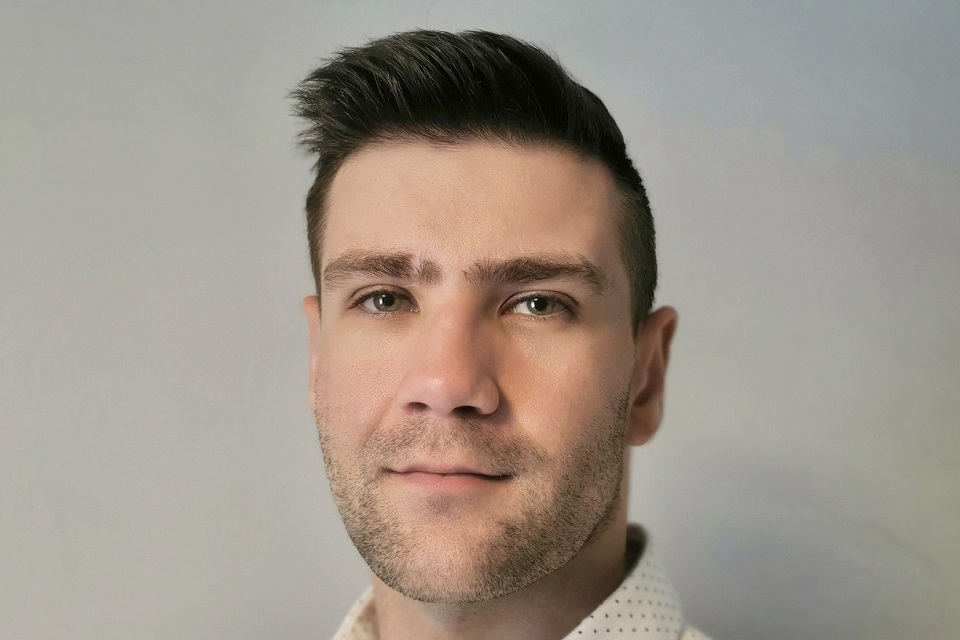
Eryk Ryzko
Eryk Ryzko joined Sellafield Ltd in 2016 as a graduate, after completing a Master’s degree in Nuclear Engineering at the University of Birmingham
His first role was based in the legacy ponds department where he was responsible for waste characterisation and conducting on-plant trials, investigating thermal output as well as corrosion and hydrogen generation rates of legacy fuel.
The results of these were later used to inform decisions on waste routes and waste packaging options. He then moved on to join the remediation capability development team in March 2020.
Working closely with stakeholders, Eryk now manages a portfolio of projects for technology demonstrations within the Beta Gamma programme, focusing on developing and looking at the commercial aspect of new techniques for future decommissioning needs in areas such as plant characterisation or forecasting and modelling.
These projects have provided an opportunity to explore how new innovative technologies can be deployed and demonstrated on-site in realistic scenarios, such as the “Curieosity” ROV platform for remote characterisation and “Heels in Vessels” project for remote detection of residual material in process vessels and pipes.
This has involved working closely with the supply chain and understanding how to apply the latest technology to make a real impact.
A member of the Institute of Materials, Minerals and Mining, Eryk is aiming to investigate further projects including “REACH” which looks at remote, constrained deployment of sensors and use of new robotic platforms, such as “Spot robot dog” for autonomous surveys.
I enjoy working with innovative technologies and seeing projects through from start to finish. The role gives me the opportunity to really see the impact of my work on delivery of new capabilities for remediation.
Rachel Campbell - Waste capability development manager, Sellafield Ltd
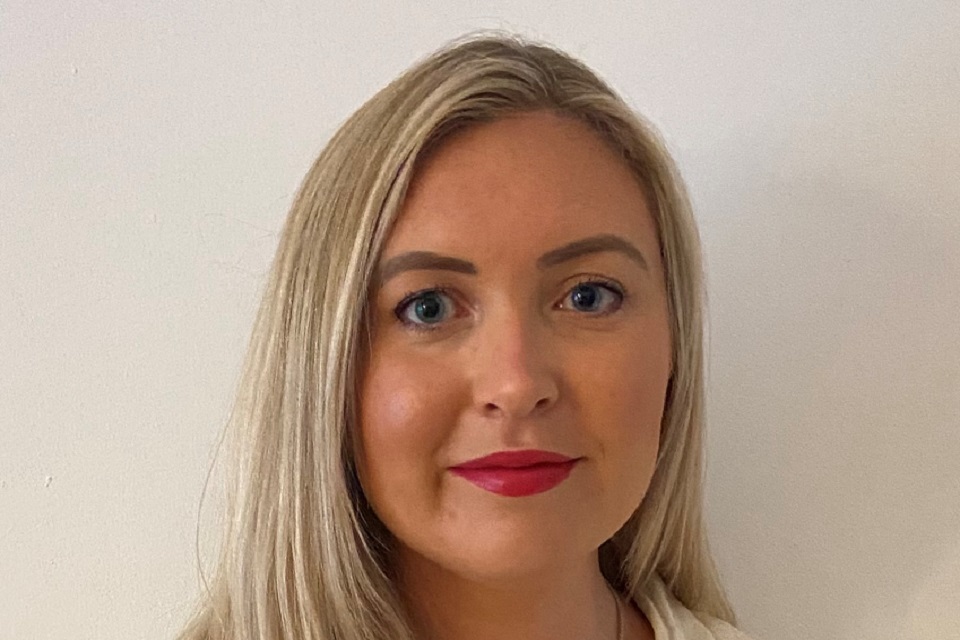
After studying English Literature and Journalism at Northumbria University, Rachel Campbell originally intended to go into journalism. However, having grown up locally, she had always been interested in our work and mission, and so began working at Sellafield Ltd in 2012 as an administrator.
Rachel’s interest in waste began when she moved from administration into an operations support role in retrievals, where she witnessed, at first-hand, the short and long-term challenges with which we are presented, when retrieving waste.
Rachel wanted to help play a part in solving these challenges and moved into a waste technical role in the central remediation team in 2018.
After successfully leading the DWSP active demonstrator project through its feasibility phase and pre-works, she now manages the waste capability development team.
Over the past year, she has been responsible for the delivery of the soft bag route optimisation project.
This investigated whether more soft bagged waste could be sent down the combustible waste route for incineration, rather than being compacted for long- term storage at LLWR.
The physical optimisation element of the project was delivered in just three months, instead of within the planned 12 months schedule and significantly increased the amount of soft bag waste that can be combusted, some 45% to 82%, reducing the amount of waste requiring long-term storage and following BAT.
While working towards chartership in the Chartered Institute of Waste Management, Rachel currently leads a team of 6 to help support retrievals and major projects by optimising storage space, opening new waste routes and identifying and bringing new technologies online.
It’s really rewarding to see projects come to fruition, see the benefits that they provide to the Sellafield site and its workers, and know that you have played a part in that.
12. Robotics and Artificial Intelligence (RAI)
Robotics and Artificial Intelligence (AI) are being embraced across the NDA Group, with Sellafield Ltd at the forefront.
They provide us with the means to remove people from extreme environments and assist in its mission to decommission and clean-up the site in a safer, faster and cheaper way.
Using robotics and AI effectively can have a positive impact on both nuclear and conventional safety. They can be used to perform repetitive, difficult and time-consuming jobs remotely while freeing up employees to take on roles that are more fulfilling and rewarding, ultimately helping to deliver our mission.
The RAI capability team has been set up to focus on the long-term uses of these technologies as they continue to develop and evolve, covering four domains:
- Water: robots are needed to scour ponds, pick up and cut material and then sort the nuclear inventory sitting underneath the surface
- Land: robots are needed to be lowered into hard-to-reach areas, such as the silos and compartments and then to operate in what can be extremely toxic environments for significant periods of time
- Air: drones have been identified as ideal to carry out detailed infrastructure inspections quickly and safely, at a reduced cost. The inclusion of AI means that they can operate independently and spot degradation much sooner • AI centre of excellence: working collaboratively to identify opportunities and to take full advantage of what robotics can offer across the site and the NDA Group
Each of these domains is being managed across Sellafield Ltd within the remediation and retrievals value streams, as well as in engineering and maintenance and technology groups.
The use of robots has already proven to keep our people safe but there is still potential for them to help speed up the mission, making our site safer, sooner, whilst also contributing towards delivering some of the NDA’s grand challenges.
12.1 Robotics and Al Collaboration Laboratory (RAlCo One)
For many reasons, robots are seen as a fundamental part of our mission.
They can operate safely in hazardous conditions, they can fit where no human ever could and they can perform tasks in hard-to-reach areas, quickly and simply. All of which are vital to achieving our eventual goal of creating a clean and safe environment for future generations.
To support this growing business need, a new facility has been set up by the robotics and AI capability team in Whitehaven. This space is being led by Sellafield Ltd in collaboration with the UKAEA RACE programme, NNL and the University of Manchester.
The RAICo One facility, which is opening in March 2022, will enable us to collaborate with our partners and supply-chain on innovation and applied R&D to solve real challenges.
It will bring together the work being done by robots across Sellafield and will build on the opportunities they offer under one roof. This will be the stepping-stone to realising greater benefits for a much larger robotics and AI collaborative space in West Cumbria.
The University of Manchester is developing innovative robotic solutions to carry out inspections and maintenance in hazardous environments and confined spaces.
The RAICo One facility will enable the further development and application of these ideas, such as CARMA, MallARD and MIRRAX, in a new collaborative environment.
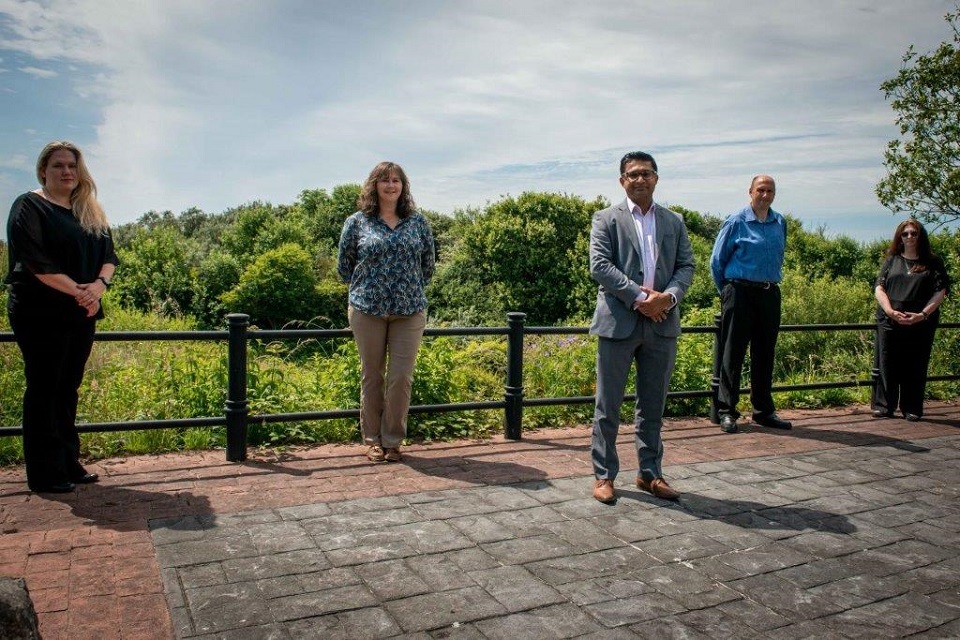
RAI programme team, Sellafield Ltd
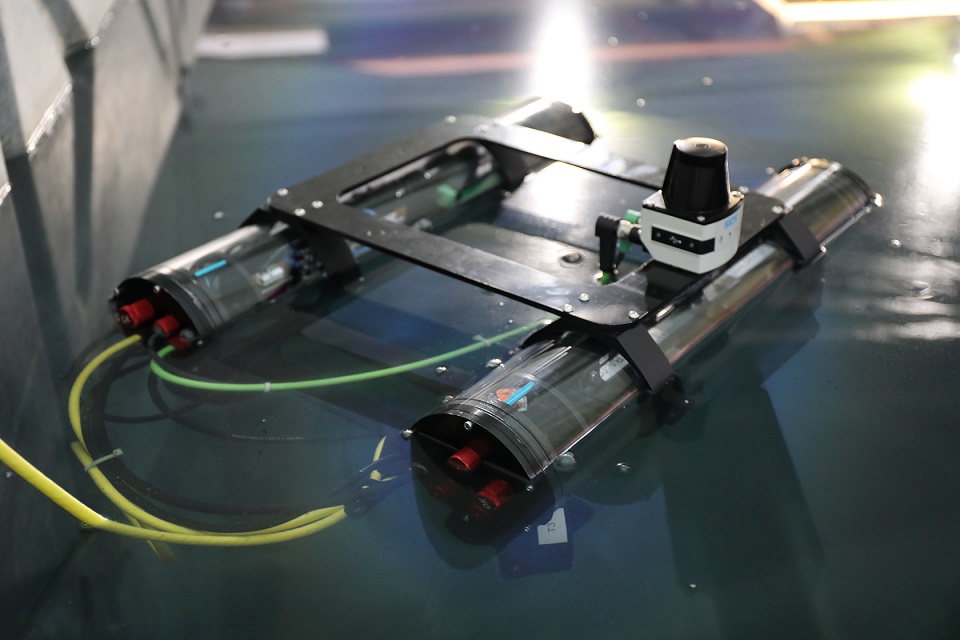
MallARD (sMall Autonomous Robotic Duck)

MIRRAX (MIniature Robot for Restricted Access eXploration)
Project
Robotics and AI Collaboration laboratory (RAICo One)
Benefits
The robotics facility in Whitehaven will enable us to collaborate with our partners and supply chain on innovation and applied R&D to solve real challenges. It will bring together the work being done by robots across Sellafield and will build on the opportunities they offer under one roof.
This will be the stepping-stone to realising greater benefits for a much larger robotics and AI collaborative space in West Cumbria.
Current Status
Open (as of September 2021)
Delivery Partners
The facility is a joint venture between Sellafield Ltd with the UKAEA’s RACE programme, National Nuclear Laboratory and the University of Manchester.
Contact Details
Chris Ballard, email: technical.innovation@sellafieldsites.com
12.2 Risk Reduction of Glovebox Operations (RrOBO)
Engineers have formed a multi-discipline collaboration, that includes supply chain and academic experts, to study how technology can bring about a revolution in the way gloveboxes are operated.
The aim of the RrOBO project is to get robots to carry out much of the work that is currently done by human hands. Having people reach into gloveboxes through ports is a potential safety hazard and has led to incidents in the past.
The RAI team is working closely with 2 value streams: Phase 1 is working towards remediation, while Phase 2 is looking to automate Special Nuclear Materials operations.
Tele-operational robotics, where the operator remotely directs machines to manipulate items in a glovebox, will reduce risk and increase productivity on some of our most critical programmes.
In the future, it may even be possible to:
- Automate some repeatable tasks such as swabbing, re-canning and repackaging of special nuclear materials
- Revolutionise the way that gloveboxes are designed and used through human-supervised autonomy to ensure operator safety
There are more than 300 gloveboxes on the Sellafield site, which vary in size, age, design, purpose, condition and materials.
As such, for the initial innovative “study and sandpit” phase, it is necessary to collect a library of gloveboxes and their characteristics before undertaking a down- selection process for robotic application.
This is linked to the development of 3D scanners for gloveboxes by the Special Nuclear Materials value stream.
A sandpit to trial the robotic technology to the limits of its capability is also under way.
Learning from the study and sandpit will be used to develop a mark- one prototype with the end goal of deployment on site.
Since the COTS equipment being considered is at a high TRL, there should be no serious barriers to adoption and the outcomes of this work will be transferrable across the NDA estate.
Project
Risk Reduction of Glovebox Operations (RrOBO)
Benefits
Using robotics technology will reduce the risks associated with putting hands into gloveboxes and will provide the interface between the hazardous workspace and the operator.
This project will potentially allow our operators to perform tasks remotely through VR and haptic solutions, allowing glovebox operations to be carried out more efficiently and remotely from a control room.
Current Status
The next steps are to identify the technology requirements and prepare a glovebox category, based on our onsite inventory against which to test the technology.
A sandbox environment is being prepared to support testing and validation of the software types.
Delivery Partners
Atkins, Cavendish Nuclear, Taylor Kightley Engineering, UKAEA, The University of Manchester
Contact Details
Chris Ballard, email: technical.innovation@sellafieldsites.com
12.3 Standardising robotic systems
RAI technologies are becoming more commonly used within the industrial, academic and public domains.
The benefits of such technology for the nuclear sector are currently being investigated by Sellafield Ltd on behalf of the NDA.
This programme is managed by NNL on our behalf and is being delivered in collaboration with UKAEA RACE group and representatives from the supply chain and academia.
RAI applications consist of multiple connected physical devices (hardware) such as robots and robotic tooling and pre-programmed and emergent logic, designed to control them (software.)
Within academia and a number of commercial products, this control is typically provided by a package called ‘Robot Operating System’ (ROS), an open-source project which provides a generic framework for the development of robotic software.
However, owing to its open-source nature and the continuous amendments provided by its wide community, ROS source code isn’t fixed and while this constant advancement is beneficial to most users, it can make it difficult to verify a developed system for nuclear safety and operational Verification & Validation (V&V) reasons.
In addition to the complexity of operating within the stringent reliability requirements and safety regulations of the nuclear sector, robotic technology is evolving at pace and its use often results in bespoke deployments.
This bespoke nature creates complications for the nuclear sector when considering factors such as operator knowledge transferability and the maintenance of multiple nuclear decommissioning deployments.
The RAI capability team began research into the standardisation of robotic hardware and software for nuclear robotic applications in 2018, with the aim of reducing the bespoke nature of robotic deployments to form a unified system architecture for robotics deployed at the Sellafield site and wider NDA estate.
The progress towards a generic, nuclear-orientated framework, places an emphasis on system reliability, predictability, safety and security, while also allowing for ease of development, operator usability and the maintenance of current and future robotics.

Schematic showing robotic process
Project
Standardisation for robotic deployments on Sellafield site
Benefits
A successful standardised approach to robotic operation on the Sellafield site will lead to more effective, maintainable and safer robotic deployments in the future.
This will be achieved through the modularisation of robotic capabilities. Examples of benefits include building a ‘toolbox’ of re-usable validated and approved robotic functionality and a common-user interface to increase operator familiarity between deployments.
Current Status
The project is ongoing and is focused on the assessment of potential robotic control software solutions via a Game Changers programme and working with control, electrical and instrumentation and safety teams to determine a pathway to substantiate robotic device deployment on the Sellafield site in a reliable and verifiable way.
12.4 Delivery Partners
National Nuclear Laboratory, Office for Nuclear Regulation
Contact Details
Chris Ballard, email: technical.innovation@sellafieldsites.com
Rav Chunilal- Head of robotics and AI, Sellafield Ltd
Head of robotics and AI Rav Chunilal has already made a considerable contribution to Sellafield Ltd having undertaken numerous roles in his 17 year career with the company.
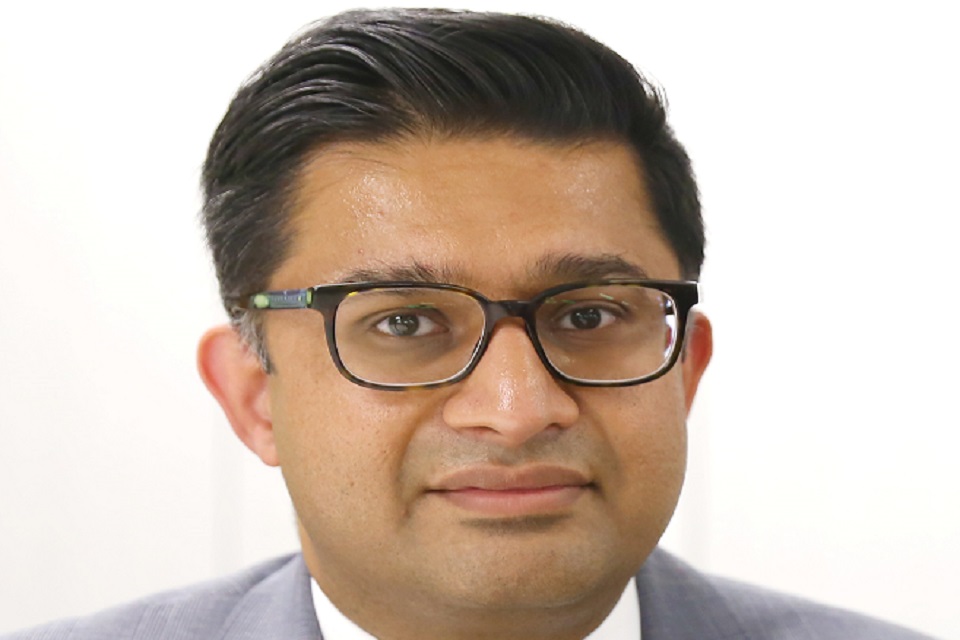
Rav studied Chemical Engineering with Environmental and Nuclear Process Engineering at the University of Leeds before joining Sellafield Ltd in 2004.
He initially undertook chemical process calculations to support Thorp fuel manufacturing services before developing our overall effluent strategy model and establishing the central site flow sheeting committee and community.
Rav has always been interested in new and evolving technologies and bringing different technologies together.
As such, he was excited to be able to lead the robotics and AI programme when it was formed in October 2020. Sellafield Ltd has been using robotics for a long time but linking them with AI will allow facilities to work autonomously with improved efficiencies and, more importantly, will keep people out of harm’s way.
To build the foundation for that to happen, Rav has set up a central robotics capability, with a framework outlining how to work within the NDA group.
In addition, he is setting up the RAICo One facility in West Cumbria which aims to improve collaboration across the NDA group, and provide a central place for academics and the supply chain to work together on challenges and opportunities for the industry.
The new central robotics and AI capability and RAICo One facility will accelerate the use of semi-automatic systems across the site and allow us to move towards full automation in the future.
Chris Ballard - Robotics and Al programme manager, Sellafield Ltd
Robotics and AI programme manager Chris Ballard is passionate about technology, from innovation to adoption and everything in the middle.
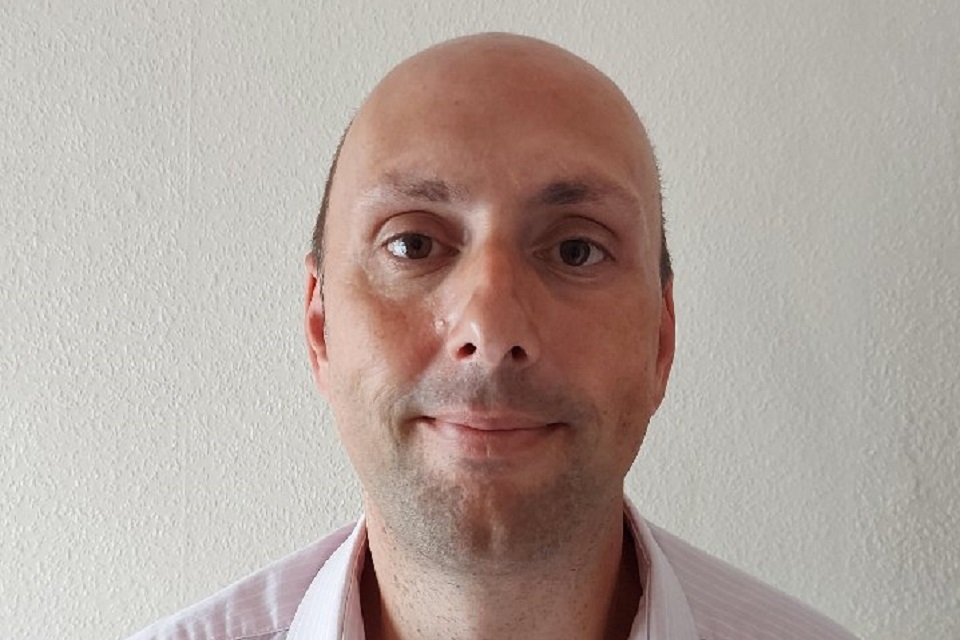
Chris graduated from the University of Salford with a BSc in Computer Science and then advanced his academic career by achieving his Post-Graduate Certificate in Education (PGCE) while lecturing at the university.
His professional career began at Capula in Westlakes and was followed by a move to Sellafield Ltd as a control systems engineer in Thorp in 2006.
Capitalising on his background in teaching, Chris led a new initiative to improve and update the training at Sellafield through the use of eLearning and smarter, more effective tools, before taking on the role of IRT lead for robotics, within the technical team, in 2019.
Under Chris’s lead, the use of robotics at Sellafield has grown rapidly, by establishing links across the business and promoting the potential of this pioneering technology to change the way that people work.
As a result, robotics is now seen as a key enabler to achieve our mission by providing the interface between people and the extreme environments.
Chris manages the RAI programme, which is centred on developing an enterprise- wide long-term roadmap for innovation and providing oversight to numerous cross-cutting projects.
He is keen to share his expertise and raise awareness of the wholesale potential of robotics, particularly amongst young people and is engaging with academics to establish and progress an apprenticeship programme in this area.
I really enjoy getting people to see the benefit and value of robotics and being able to develop innovative solutions to meet their needs. The collaborative environment in the RAICo One facility will allow this to happen faster.
13. Supply chain companies and organisations
Arktis Radiation Detectors UK Ltd
Atkins
BD Nuclear Ltd.
Barrnon
Cavendish Nuclear Ltd.
Cerberus Nuclear
Cineon Training
Collender Ltd.
Createc
Createc Robotics Ltd.
Cyan Tec Systems Ltd.
Dounreay Site Restoration Ltd.
FIRMA Engineering Ltd.
FIS360 Ltd.
Hybrid Instruments
Innovate UK
Integrated Decommissioning Solutions
Jacobs
Knowledge Transfer Network
Lancaster University
Lasermet Ltd.
Magnox Ltd.
National Nuclear Laboratory
National Physical Laboratory
NSG Environmental Ltd
Nuclear Decommissioning Authority
Nuclear Suppliers Group
Nuclear Advanced Manufacturing Research Centre
Office for Nuclear Regulation
Pajarito Scientific Corporation
Radioactive Waste Management
REACT Engineering Ltd
RED Engineering
Remote Maintenance Systems Ltd
Resolve Robotics Ltd.
Sensor Driven Ltd.
Tannahill Reay Visual Communications Ltd.
Taylor Kightley Engineering Ltd.
The ORA Company
The University of Manchester
TÜV SÜD - Nuclear Technologies Division
UKAEA
Unitive Design & Analysis
University of Bristol
University of Exeter
University of Sheffield
University of Strathclyde
University programmes
Centre for Innovative Nuclear Decommissioning (CINDe) is a PhD hub led by the National Nuclear Laboratory working in collaboration with Sellafield Ltd and the universities of Manchester, Lancaster, Liverpool and Cumbria.
Growing skills for Reliable, Economic Energy from Nuclear (GREEN) is a consortium of the universities of Lancaster, Leeds, Liverpool, Manchester and Sheffield with 12 industry partners.
Transformative Science and Engineering for Nuclear Decommissioning (TRANSCEND) is a collaborative research consortium of the universities of Sheffield, Surrey, Strathclyde, Glasgow, Southampton, Manchester, Leeds, Bristol, Birmingham, Lancaster, Imperial College London and Queen’s University Belfast and eight industry partners.

